Travertine Usage Explained: Design, Types, and Care

Did you know that travertine forms naturally from mineral-rich hot springs over thousands of years? This ancient stone has captured the attention of architects and homeowners who crave distinctive surfaces with character that manufactured materials cannot match. While many admire its organic look, there are widespread myths about travertine’s strength and upkeep. Getting the facts about travertine will help you decide if its unique charm and maintenance needs fit your design plans.
Key Takeaways
| Point | Details |
|---|---|
| Natural Origin | Travertine is a natural stone formed from hot springs, characterized by its unique texture and geological history. |
| Maintenance Awareness | Homeowners should be aware that travertine is sensitive to acids and requires regular sealing and gentle cleaning to maintain its beauty. |
| Diverse Aesthetics | Available in various cuts and finishes, travertine offers a wide range of visual possibilities suitable for both indoor and outdoor applications. |
| Installation Considerations | The complexity of travertine installation varies by finish type, influencing both installation costs and project planning. |
Table of Contents
- Travertine Stone Defined And Common Misconceptions
- Types Of Travertine: Finishes And Forms
- Top Applications Indoors And Outdoors
- Durability, Maintenance, And Environmental Factors
- Cost, Installation Challenges, And Alternatives
Travertine Stone Defined and Common Misconceptions
Travertine is a natural stone with a fascinating geological origin that often surprises architects and designers. According to Wikipedia, this limestone variant forms through mineral deposits from hot springs, creating a unique material characterized by natural pores and intricate layered patterns. Unlike manufactured stones, travertine tells a geological story through its organic texture and distinctive appearance.
Many homeowners and designers hold misconceptions about travertine’s durability and maintenance. Research indicates that the stone is surprisingly sensitive, particularly to acidic substances. Key misconceptions include:
- Believing travertine is as hard as granite or marble
- Assuming it’s completely maintenance-free
- Thinking it can withstand any cleaning solution
- Expecting uniform color and texture across all pieces
The stone’s high porosity makes it both a design asset and a maintenance challenge. Its thermal and acoustic insulating properties make it an excellent choice for interior spaces, but this same characteristic means it requires careful handling. Read more about travertine’s unique properties in our guide on understanding natural stone, where we break down exactly what makes this material both beautiful and delicate.
Understanding travertine means appreciating its natural variability. Each stone piece carries unique markings, colors, and subtle imperfections that transform spaces from ordinary to extraordinary. Proper sealing, gentle cleaning, and thoughtful installation can help you leverage travertine’s stunning aesthetic while mitigating its inherent vulnerabilities.
Types of Travertine: Finishes and Forms
Travertine offers an extraordinary range of visual possibilities through its diverse cuts and surface treatments. According to Flooring Clarity, the stone can be processed in multiple ways, creating unique textures and aesthetic profiles that transform spaces from mundane to remarkable.
Cutting Techniques
Travertine is available in several distinctive cutting techniques:
- Vein Cut: Reveals linear, striated patterns running parallel to each other
- Cross Cut: Produces a more organic, swirling pattern with softer visual movement
- Split Face: Creates a rugged, textured surface with natural cleft characteristics
Surface Finishes
Here’s a comparison of popular travertine surface finishes:
| Finish | Surface Look | Texture | Typical Use |
|---|---|---|---|
| Polished | Glossy Reflective |
Smooth | Accent walls Vanities |
| Honed | Matte Modern |
Smooth | Floors Bathrooms |
| Tumbled | Aged Rustic |
Rounded edges Textured |
Patios Pool decks |
| Brushed | Satin sheen | Gently textured | Walkways Living areas |
| Bush-Hammered | Subtle patterns | Heavily textured | Outdoor paving Facades |
Research from Marmol Turco highlights the extensive finish options for travertine, each offering distinct aesthetic and functional qualities:
- Polished: Smooth, reflective surface with high-gloss appearance
- Honed: Matte finish with minimal reflection, perfect for contemporary designs
- Tumbled: Soft, rounded edges with an aged, rustic feel
- Brushed: Textured surface with subtle abrasion marks
- Bush-Hammered: Heavily textured finish with small, uniform indentations
Discover more about modern travertine applications in our latest design guide, where we explore how these diverse finishes can elevate your interior spaces. Whether you’re seeking a sleek, contemporary look or a timeless, natural aesthetic, travertine offers unparalleled design flexibility.
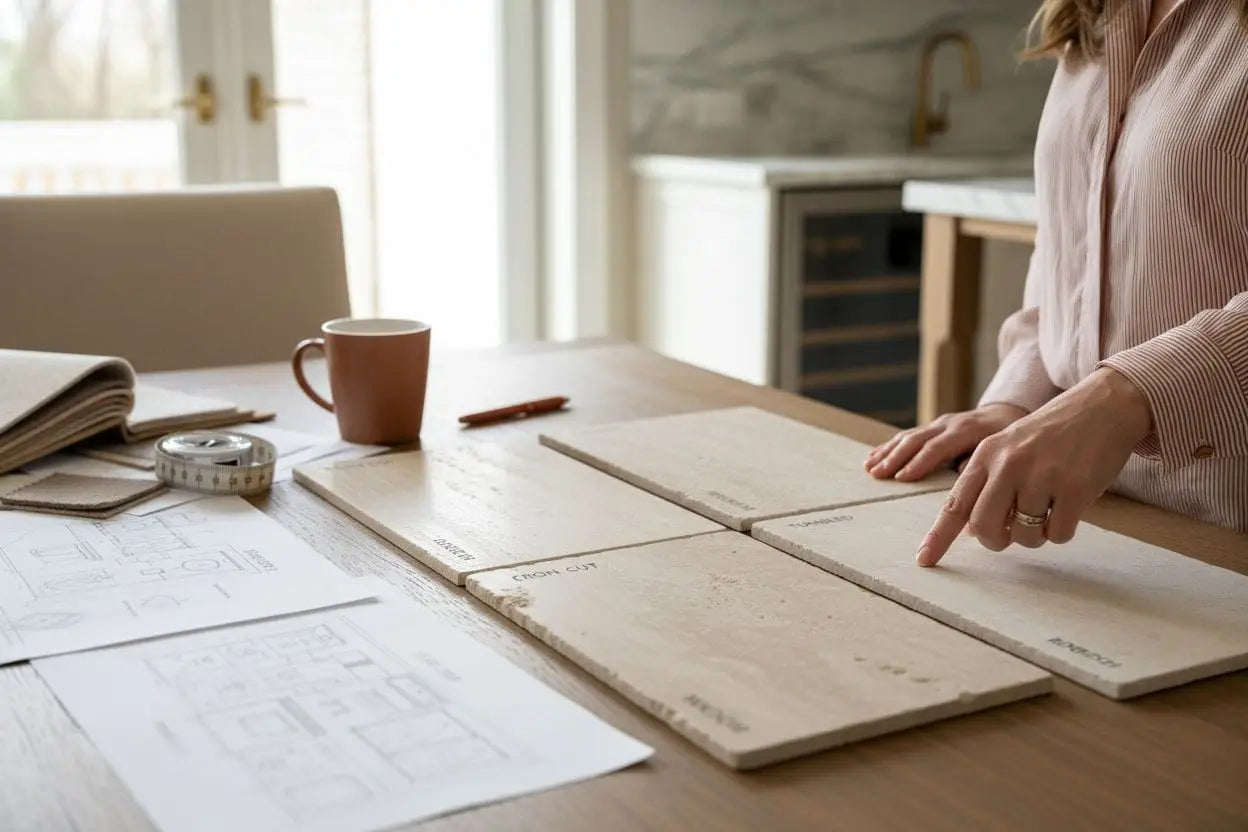
Top Applications Indoors and Outdoors
Travertine’s remarkable versatility makes it a favorite among designers and homeowners seeking both aesthetic elegance and functional performance. According to IWC Stone, this natural stone finds exceptional applications across interior and exterior spaces, transforming ordinary environments into extraordinary design statements.
Indoor Transformations
Inside your home, travertine offers multiple design opportunities:
- Flooring: Creates seamless, sophisticated ground surfaces
- Kitchen Countertops: Provides natural, elegant food preparation areas
- Backsplashes: Adds textural interest behind cooking zones
- Shower Walls: Delivers spa-like bathroom aesthetics
- Fireplace Surrounds: Introduces organic warmth to living spaces
Outdoor Elegance
Research from Stone Works Wholesaling highlights the stone’s exceptional outdoor capabilities. Its slip-resistant and heat-tolerant properties make travertine ideal for:
- Pool Surrounds: Cool surfaces that withstand direct sunlight
- Garden Pathways: Creating natural, elegant walkways
- Exterior Facades: Adding architectural character
- Driveways: Providing durable, attractive entry points
- Patio Surfaces: Developing sophisticated outdoor living areas
Explore our comprehensive guide on travertine’s design potential to understand how this remarkable stone can revolutionize both your indoor and outdoor spaces. From contemporary minimalist designs to rustic traditional settings, travertine offers unparalleled design flexibility.
Durability, Maintenance, and Environmental Factors
Travertine’s longevity and beauty depend critically on understanding its unique maintenance requirements. According to Fabritec, this natural stone demands a thoughtful approach to care that balances preservation with practical daily use.
Daily Care Essentials
Research from Gubi provides clear guidelines for maintaining travertine’s pristine appearance:
- Cleaning: Use damp, non-abrasive cloths with neutral soap
- Spill Management: Wipe immediately to prevent potential staining
- Protection: Use trivets under hot items to prevent heat damage
- Traffic Management: Place mats in high-wear areas

Maintenance Strategies
Comprehensive travertine maintenance involves several strategic approaches:
- Seal surfaces every 6-12 months
- Avoid acidic cleaning solutions
- Use soft cleaning tools
- Protect from prolonged direct sunlight
- Address scratches and chips promptly
Environmental Considerations
Sustainability plays a crucial role in travertine selection and care. Responsible sourcing, proper maintenance, and potential recycling can extend the stone’s lifecycle and reduce environmental impact.
Explore our comprehensive guide to travertine preservation to ensure your natural stone remains a beautiful, lasting investment in your design vision.
Cost, Installation Challenges, and Alternatives
Travertine represents a significant design investment that requires careful consideration of both aesthetic potential and practical constraints. According to Flooring Clarity, the complexity of installation varies dramatically depending on the specific cut and finish selected.
Installation Complexity
Travertine installation presents unique challenges across different finishes:
- Polished Surfaces: Relatively straightforward installation
- Split Face Finishes: Require meticulous preparation and skilled craftsmanship
- Tumbled Edges: Demand precise alignment and specialized techniques
- Vein Cut Tiles: Need careful pattern matching during placement
Cost Considerations
Multiple factors influence travertine’s overall project expense:
- Material quality and origin
- Complexity of chosen finish
- Professional installation requirements
- Surface area and project scope
- Additional sealing and maintenance costs
Alternative Options
Research from Banas Porcelain reveals compelling alternatives that mimic travertine’s aesthetic with enhanced performance:
- Porcelain Tiles: Offer similar visual appeal with superior durability
- UV Resistance: Better color retention
- Frost Resistance: Enhanced outdoor performance
- Lower Maintenance: Reduced long-term care requirements
Explore our design alternatives guide to discover which solution best matches your design vision and practical needs.
Bring the Beauty of Travertine Into Your Project—Without the Worry
Are you feeling overwhelmed by the challenges of choosing the right travertine type, finish, and maintenance routine? This article highlighted the common worries—like selecting the perfect cut, ensuring proper sealing, and dealing with daily upkeep—that come with real natural stone. At Surfaces Galore, we understand that balancing authenticity, elegance, and durability can seem daunting when every travertine piece is unique and requires special care.
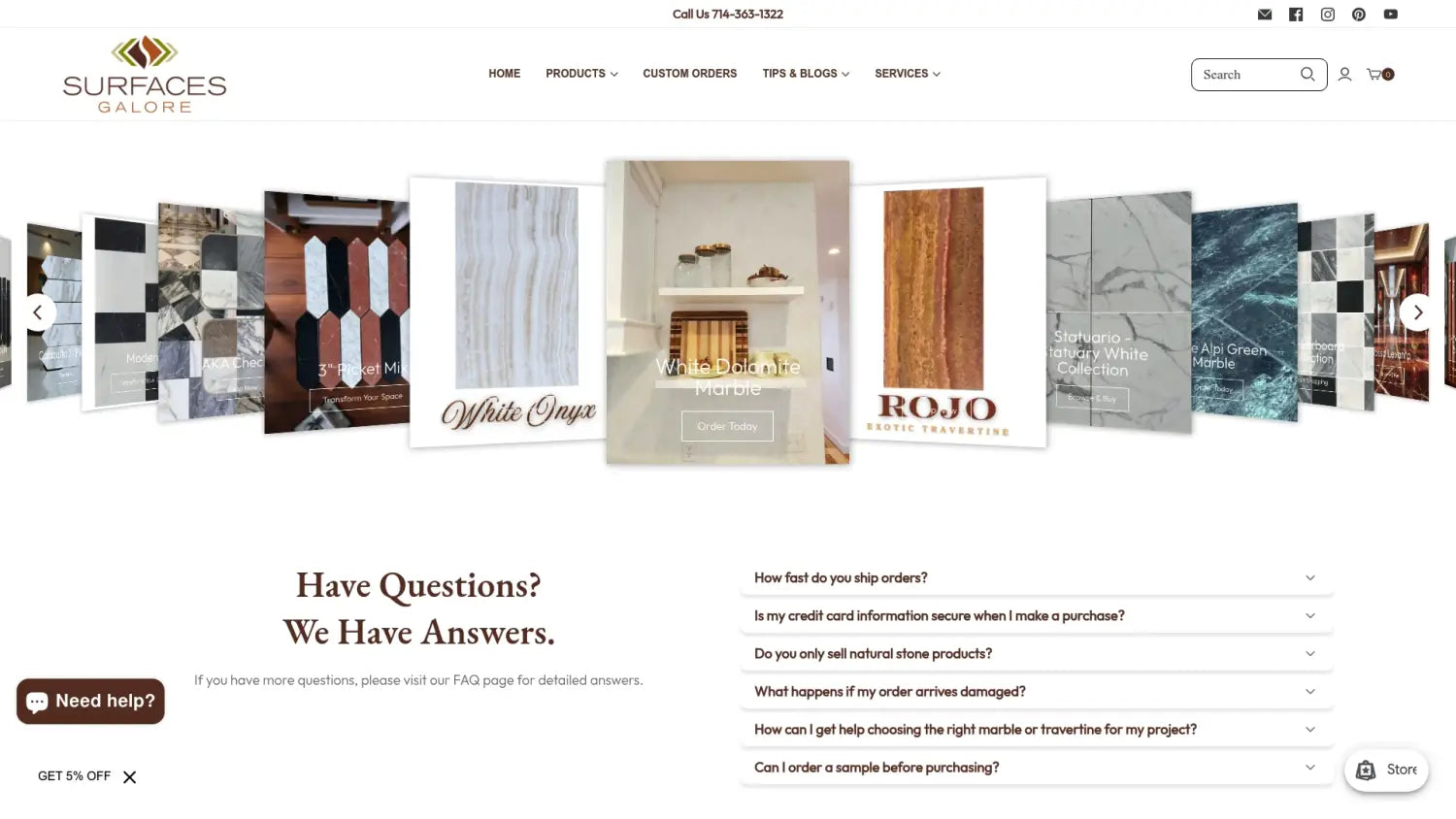
Take the guesswork out of your renovation. Our team sources only premium travertine and guides you through every step, from finish selection to long-term care advice. If you want natural stone that elevates your space while fitting your lifestyle, do not wait another day. Visit Surfaces Galore now for expert help, free inspiration, and genuine travertine solutions built around your needs. Maximize your investment and bring lasting value to your home or design project by starting your journey today. Explore our Marble and Travertine: Comprehensive Guide and Modern Travertine Design Ideas to discover what is possible, then let us deliver the perfect stone direct to you.
Frequently Asked Questions
What is travertine and how is it formed?
Travertine is a natural stone that forms from mineral deposits in hot springs. It is a type of limestone characterized by unique pores and layered patterns, embodying a geological history.
What are the main types of travertine finishes and their uses?
Travertine is available in various finishes, including polished (glossy and smooth), honed (matte), tumbled (aged and rustic), brushed (gently textured), and bush-hammered (heavily textured). Each finish offers distinct aesthetic qualities and is suitable for different applications, like flooring, countertops, or outdoor patios.
How do I maintain and clean travertine surfaces?
To maintain travertine, clean with a damp, non-abrasive cloth and a neutral soap. Wipe up spills immediately to prevent staining, use trivets under hot items, and seal surfaces every 6-12 months to protect them.
What are the advantages of using travertine for outdoor spaces?
Travertine is ideal for outdoor use due to its slip-resistant and heat-tolerant properties. It makes an excellent choice for pool surrounds, garden pathways, and patios, providing both elegance and practical functionality.

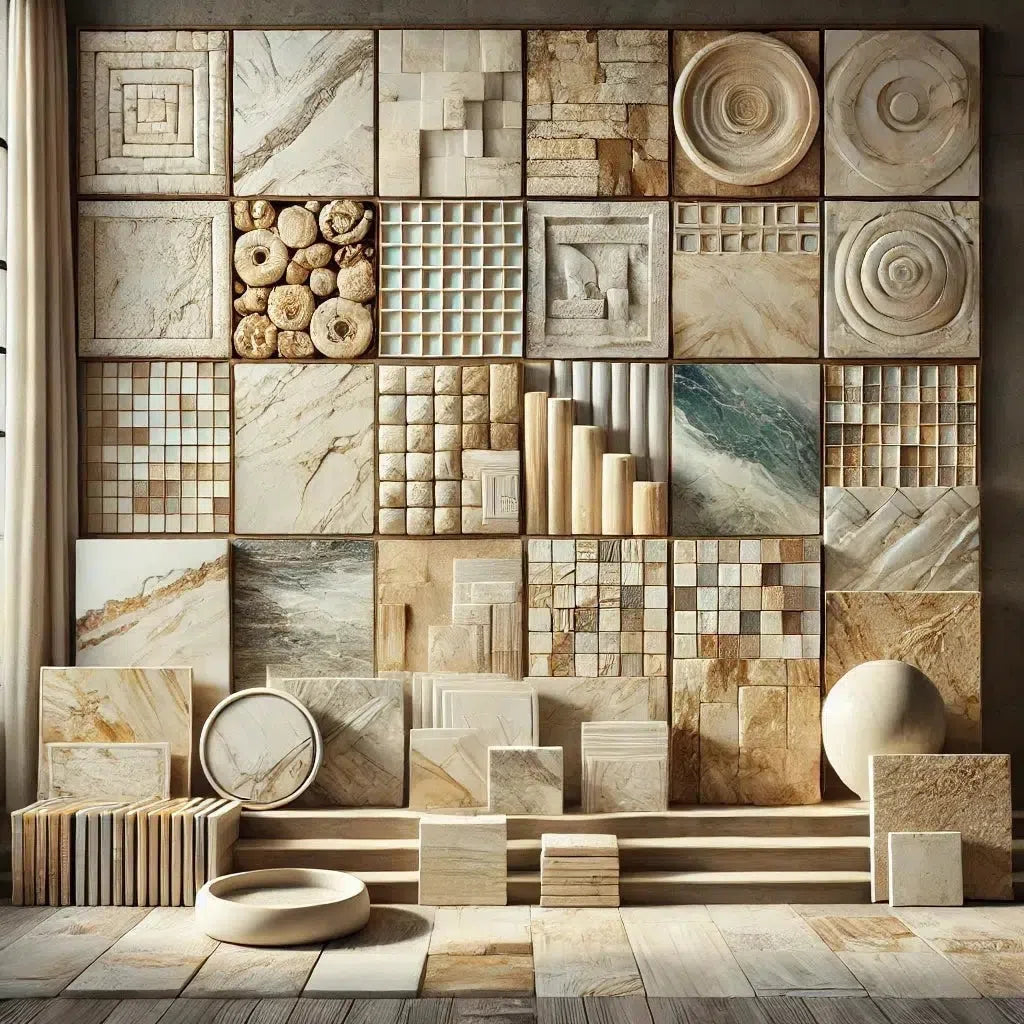 Best Selling Marble Collections
Best Selling Marble Collections
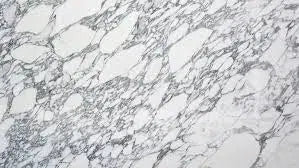 Arabescato Corchia
Arabescato Corchia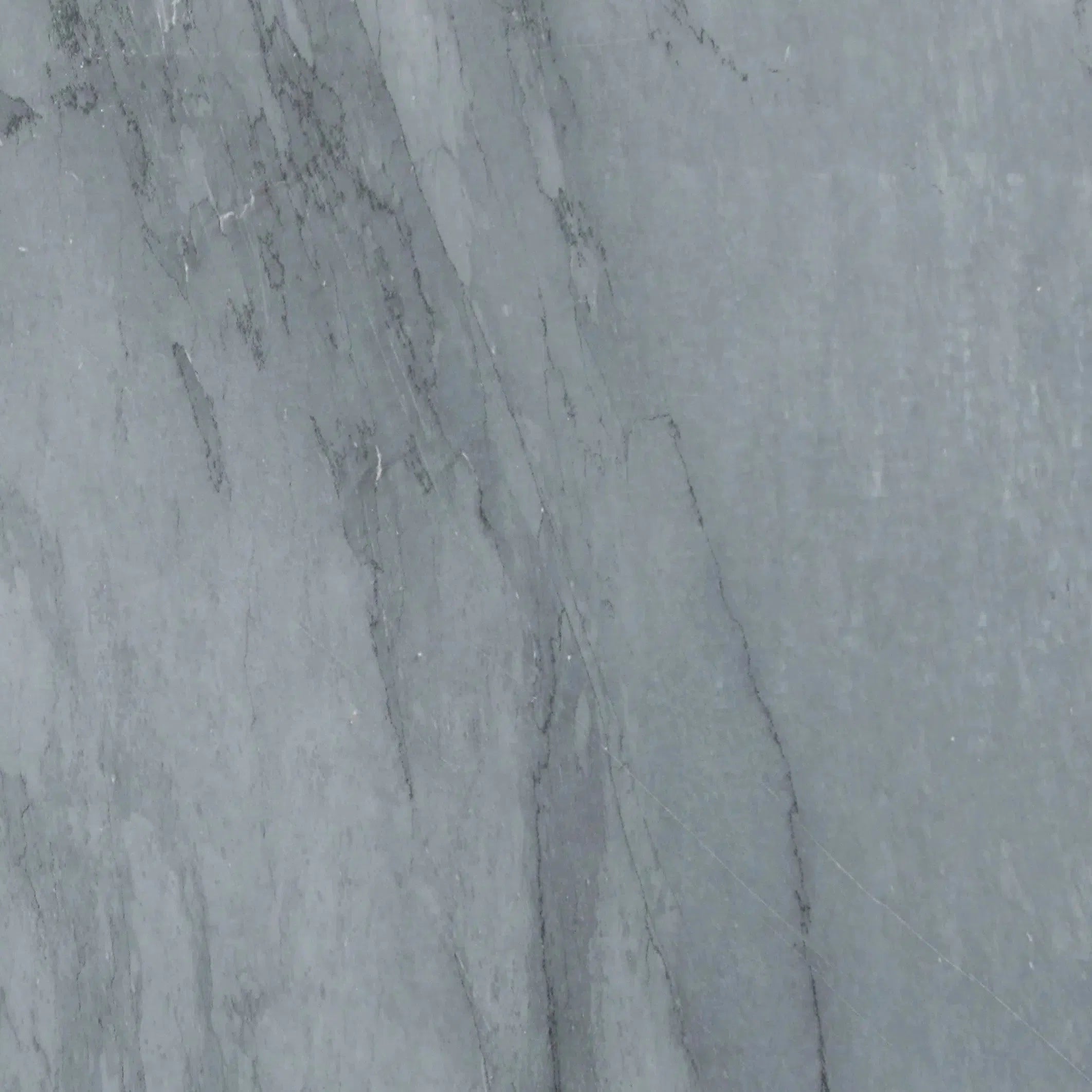 Bardiglio
Bardiglio Bianco Dolomite
Bianco Dolomite 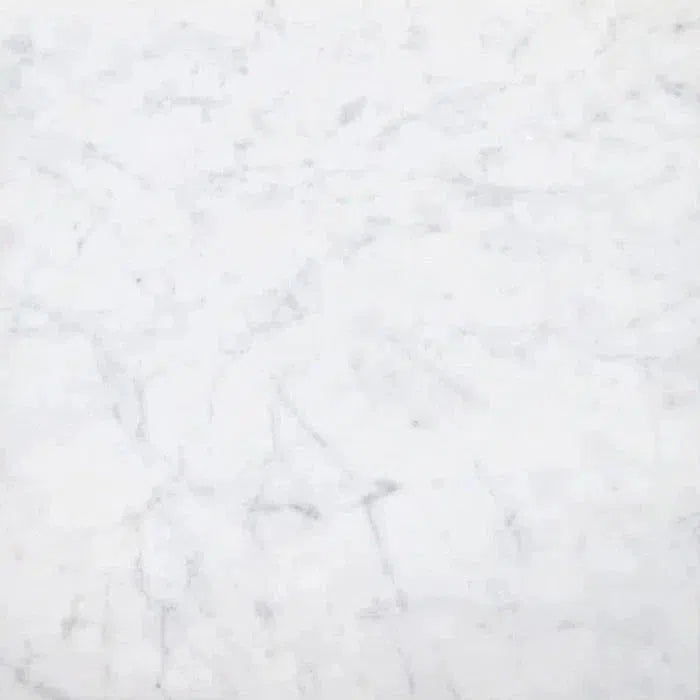 Carrara White
Carrara White 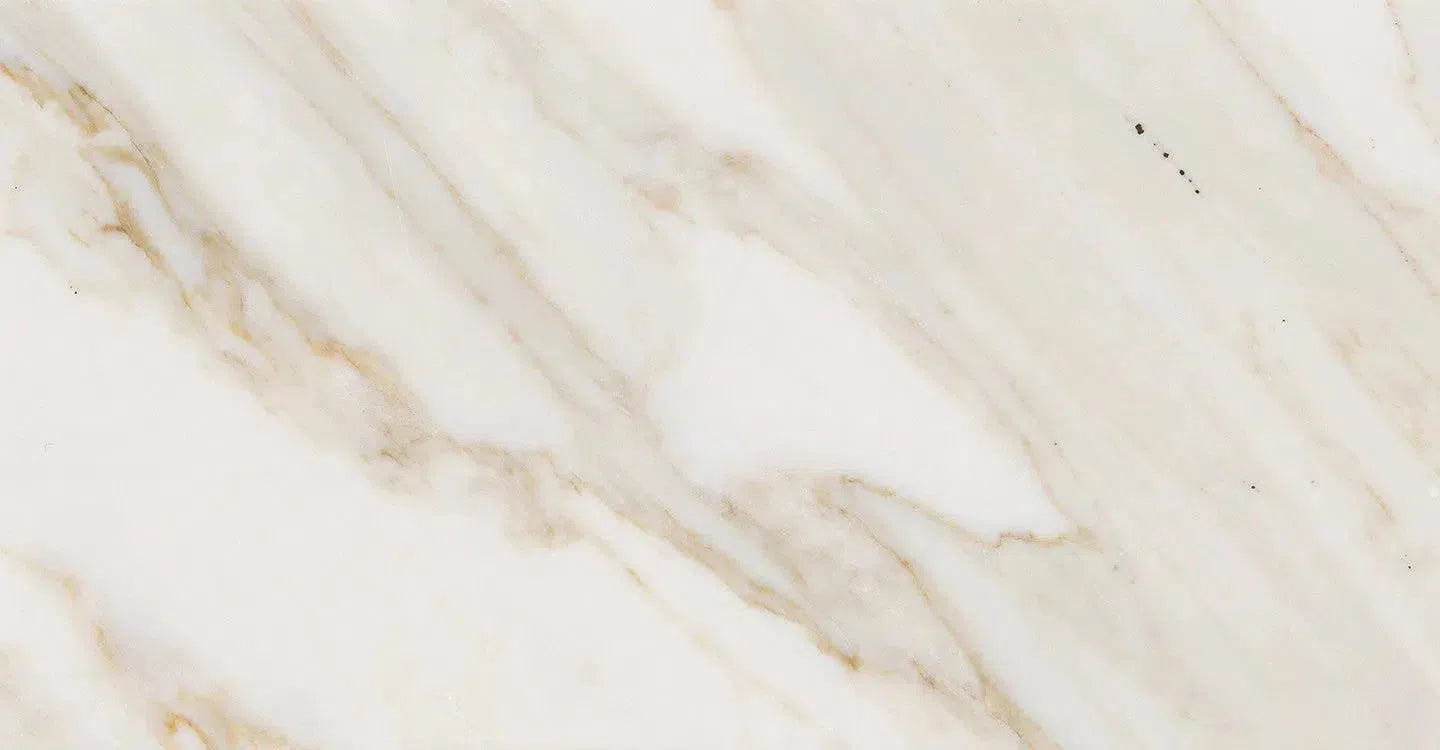 Calacatta Gold
Calacatta Gold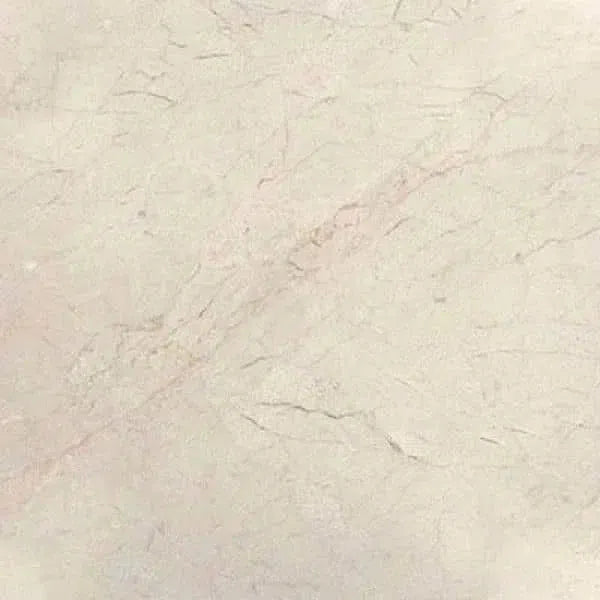 Crema Marfil
Crema Marfil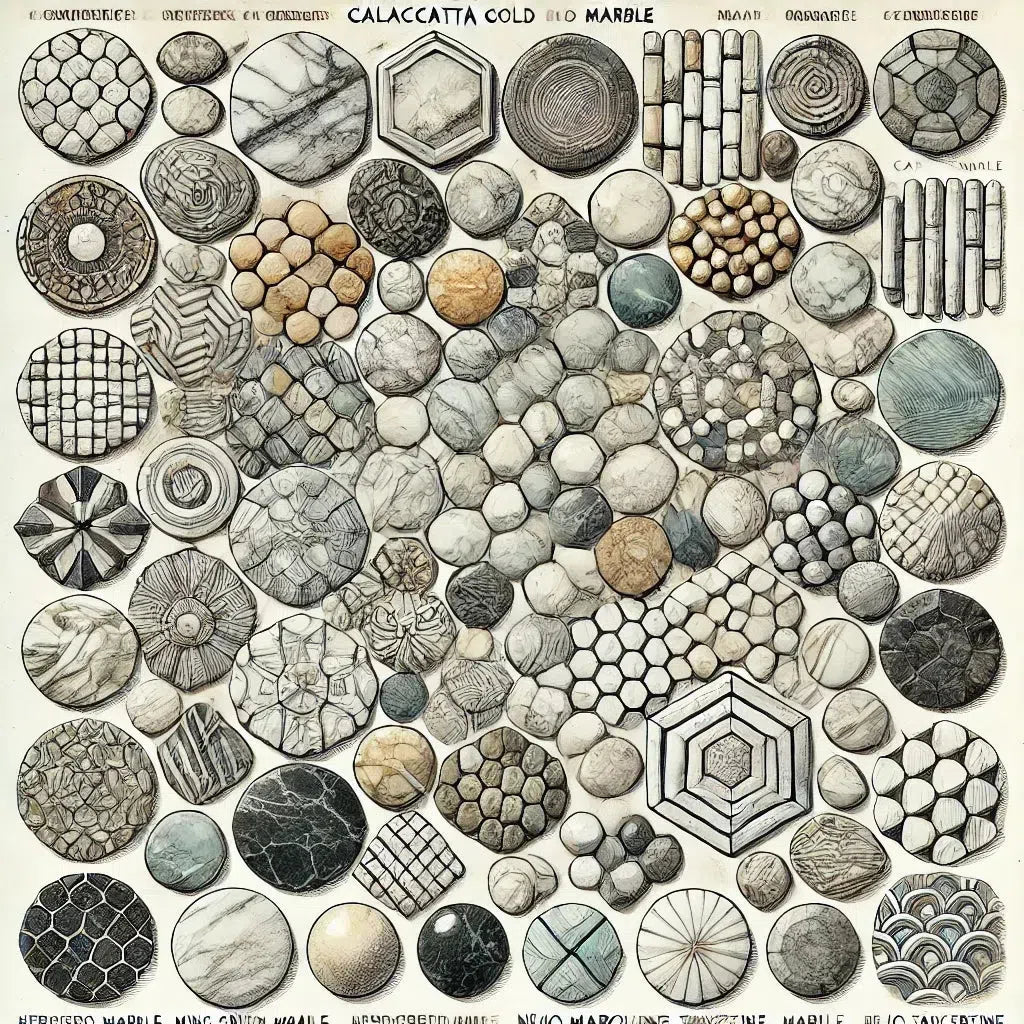 Custom Made Mosaic
Custom Made Mosaic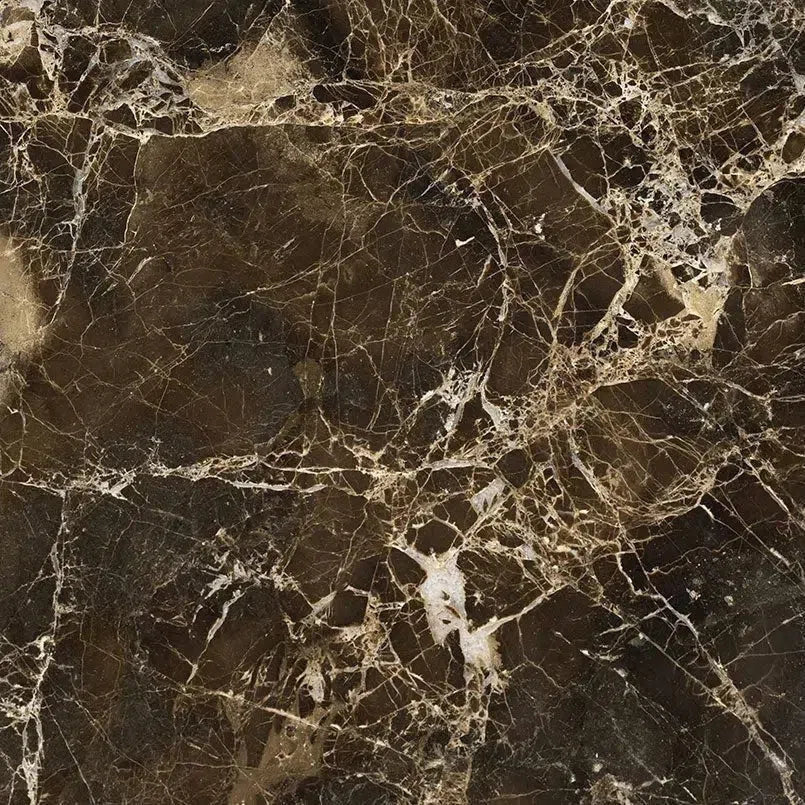 Emperador Dark
Emperador Dark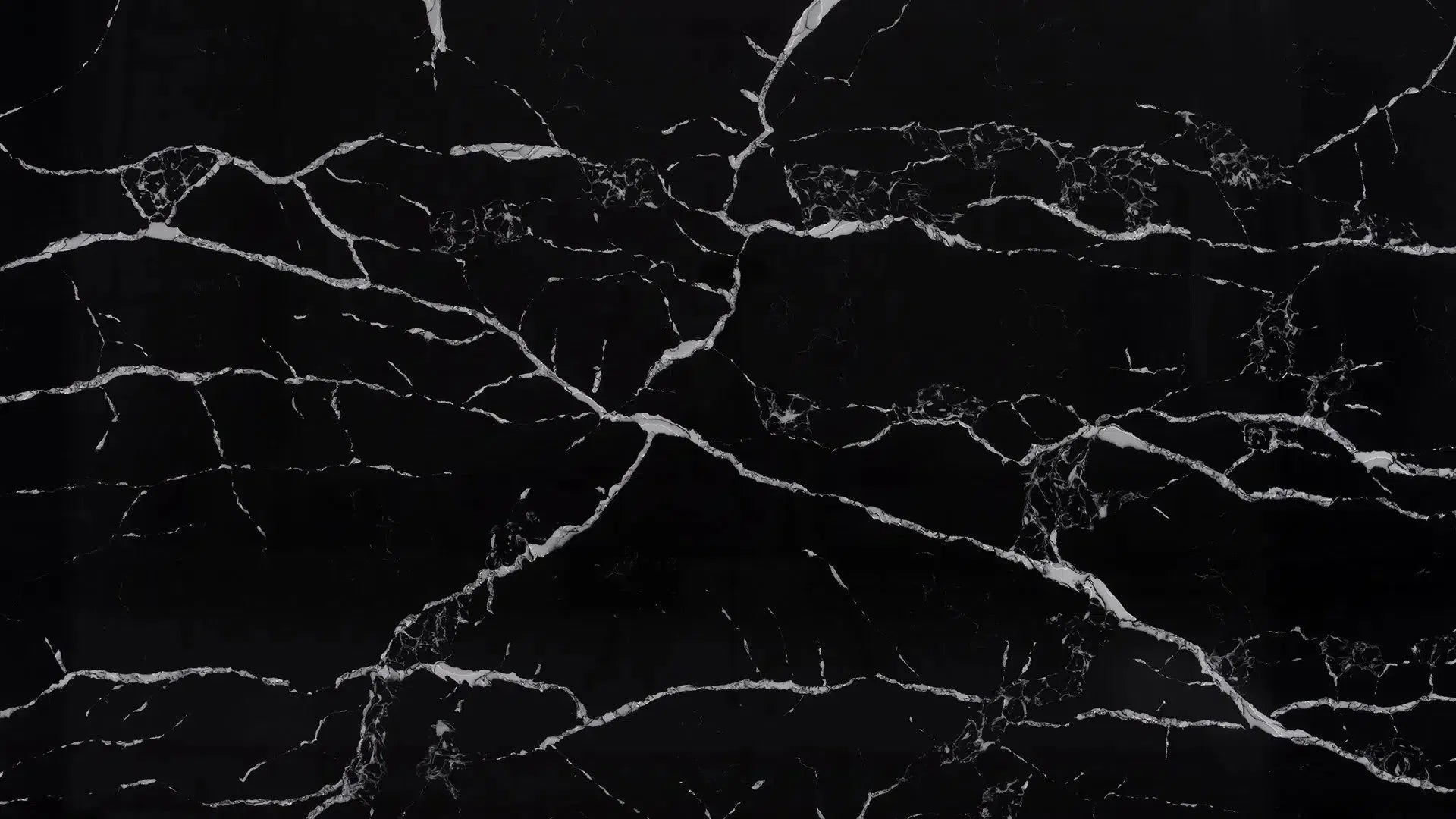 Nero Marquina
Nero Marquina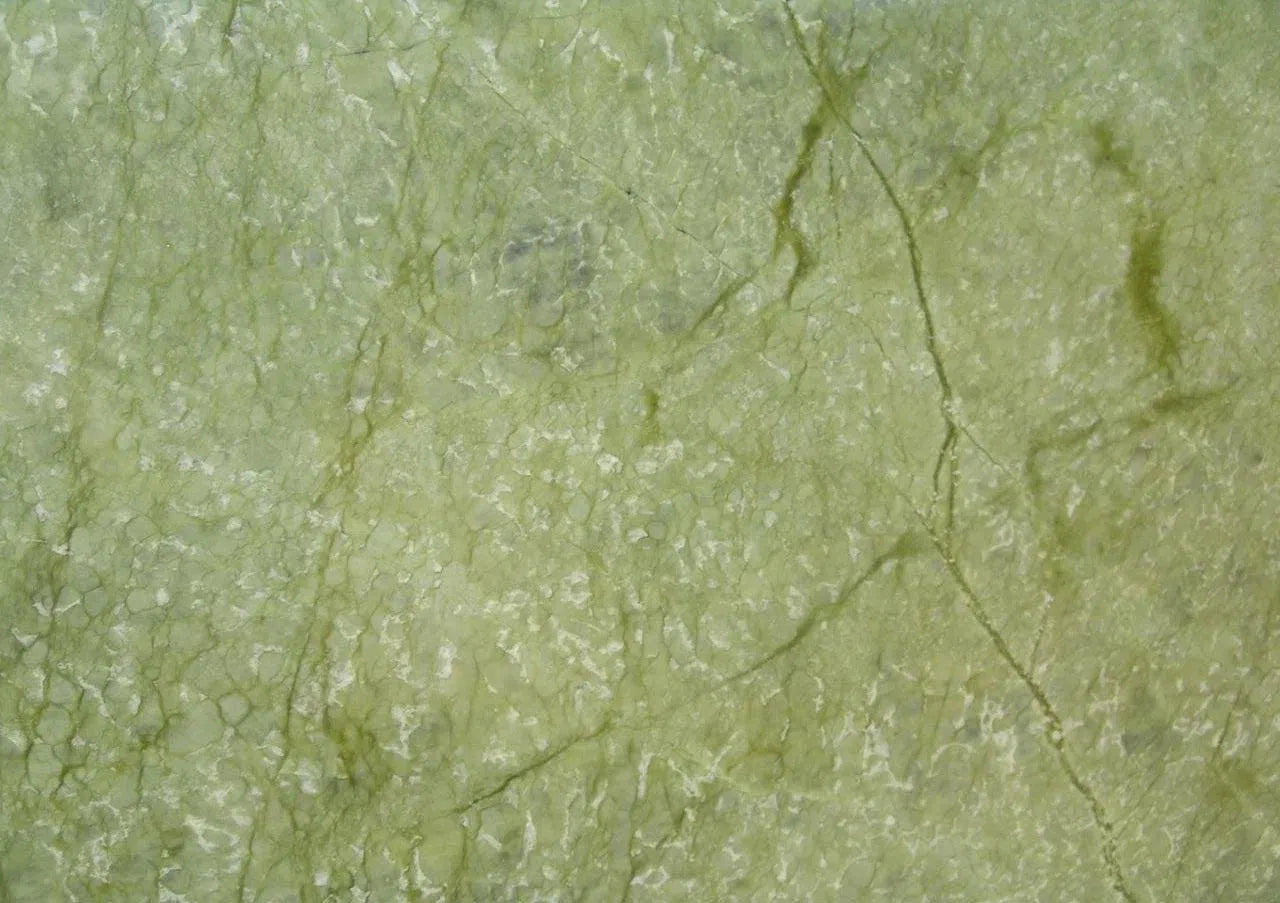 Ming Green Marble
Ming Green Marble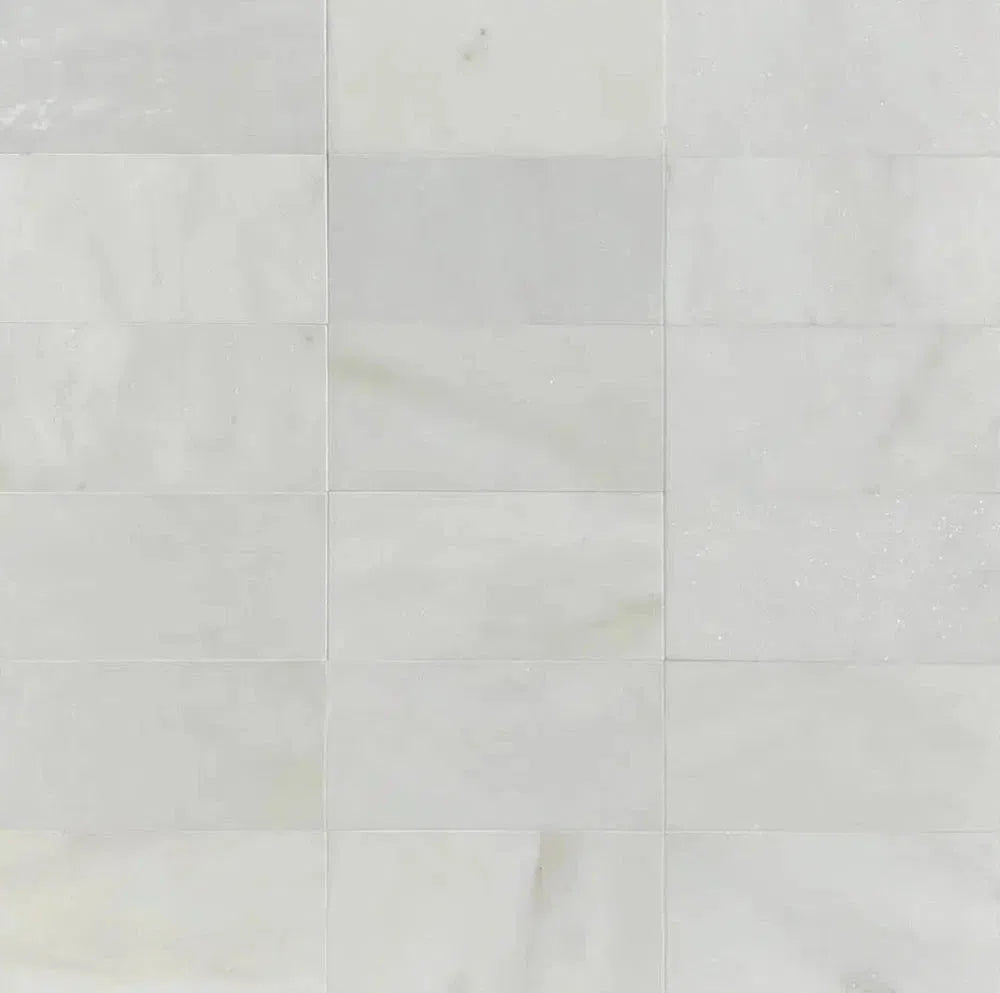 Oriental White Marble (Asian Statuary Marble)
Oriental White Marble (Asian Statuary Marble)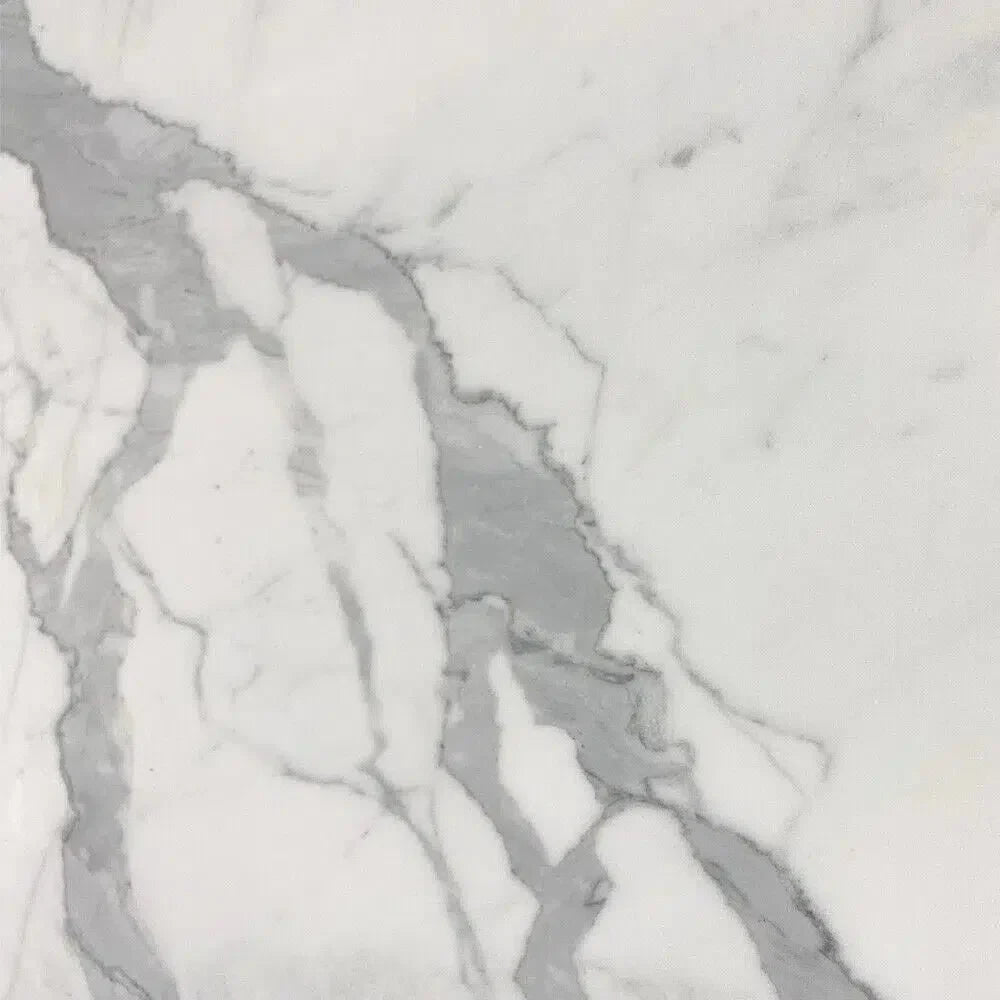 Statuary - Statuario White (Italian) Marble
Statuary - Statuario White (Italian) Marble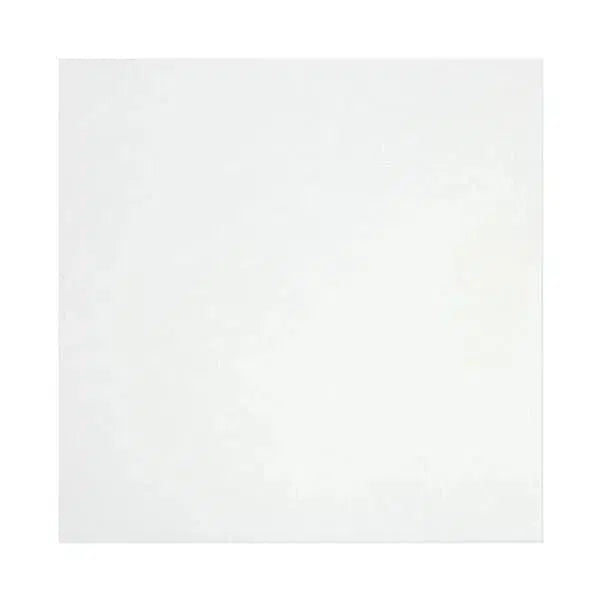 Thassos White
Thassos White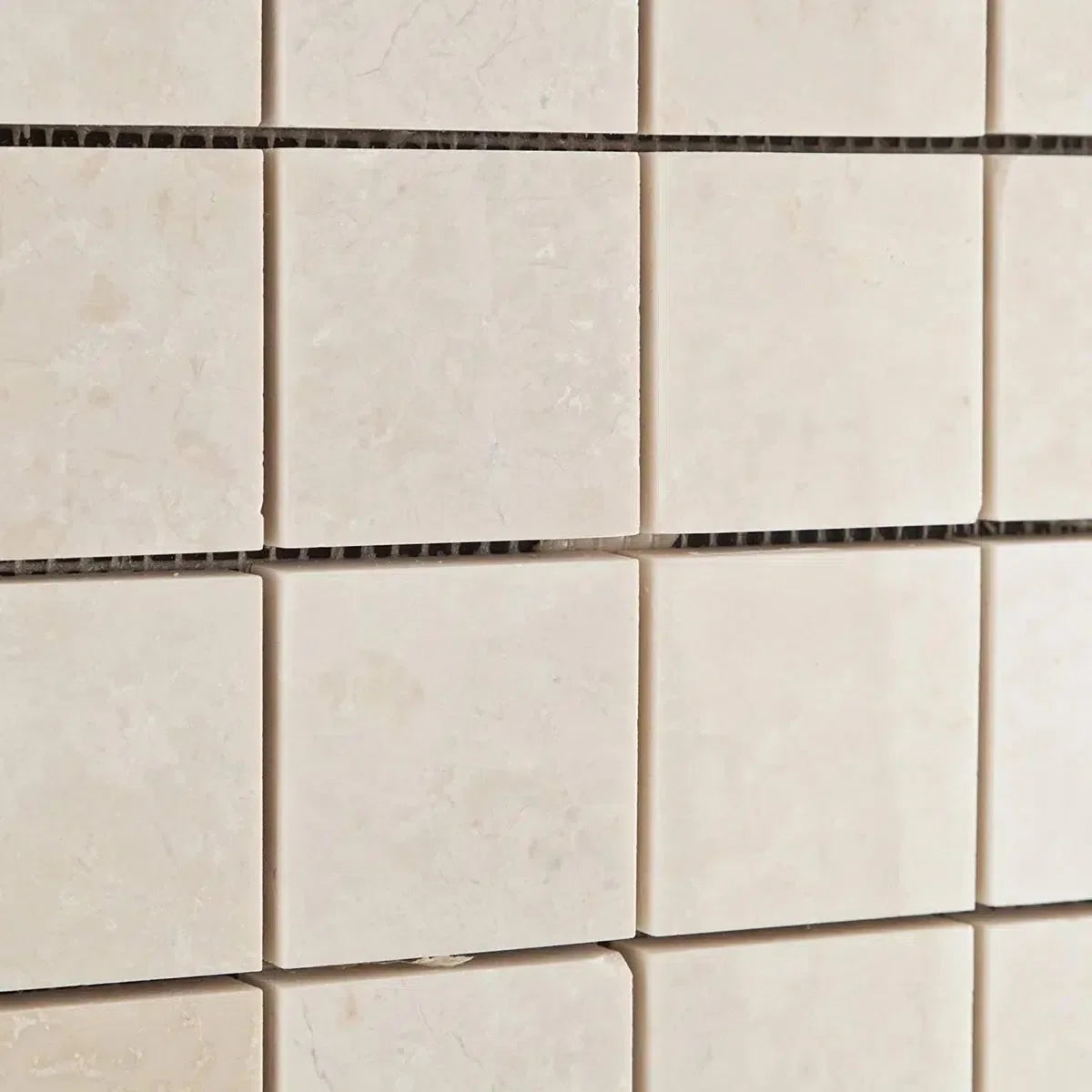 White Pearl/Botticino Beige Marble
White Pearl/Botticino Beige Marble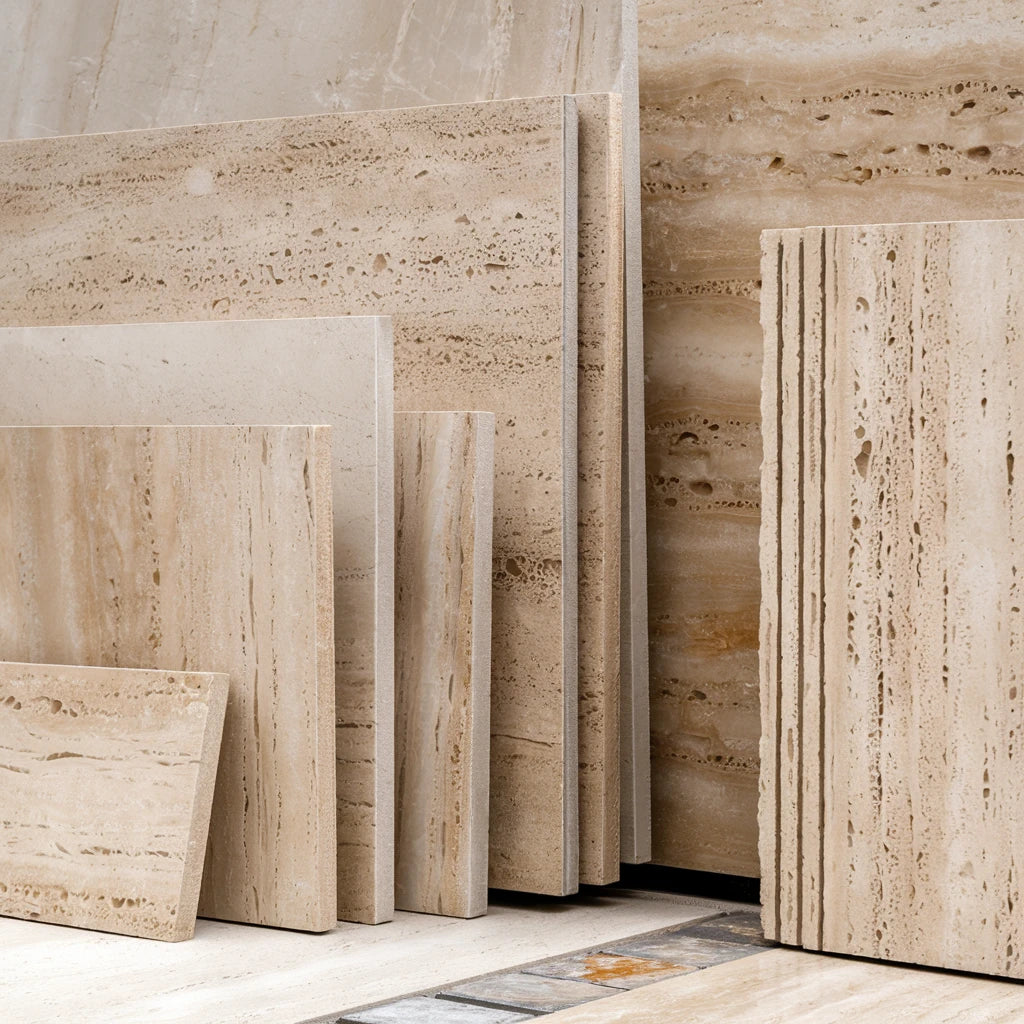 Best Selling Travertine Collections
Best Selling Travertine Collections
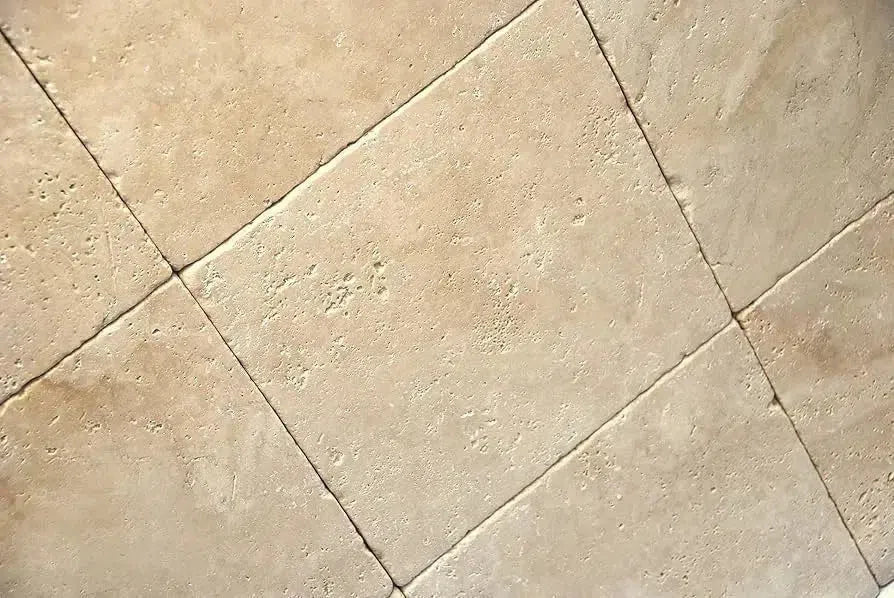 Ivory Travertine
Ivory Travertine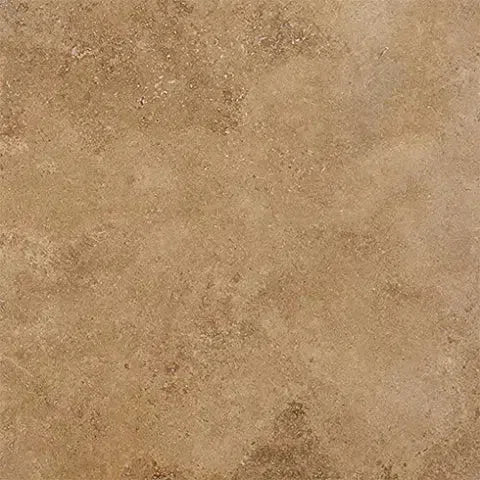 Noce Travertine
Noce Travertine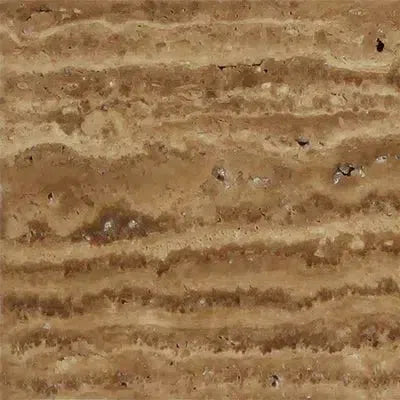 Exotic Noce Travertine
Exotic Noce Travertine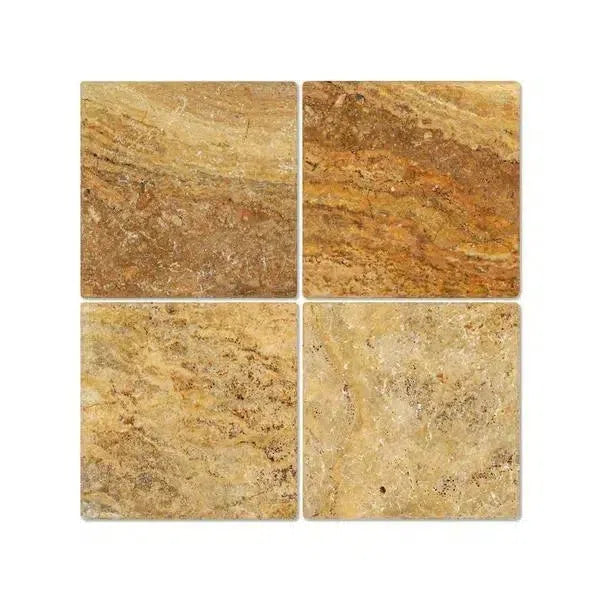 Scabos | Autumn Leaves Travertine
Scabos | Autumn Leaves Travertine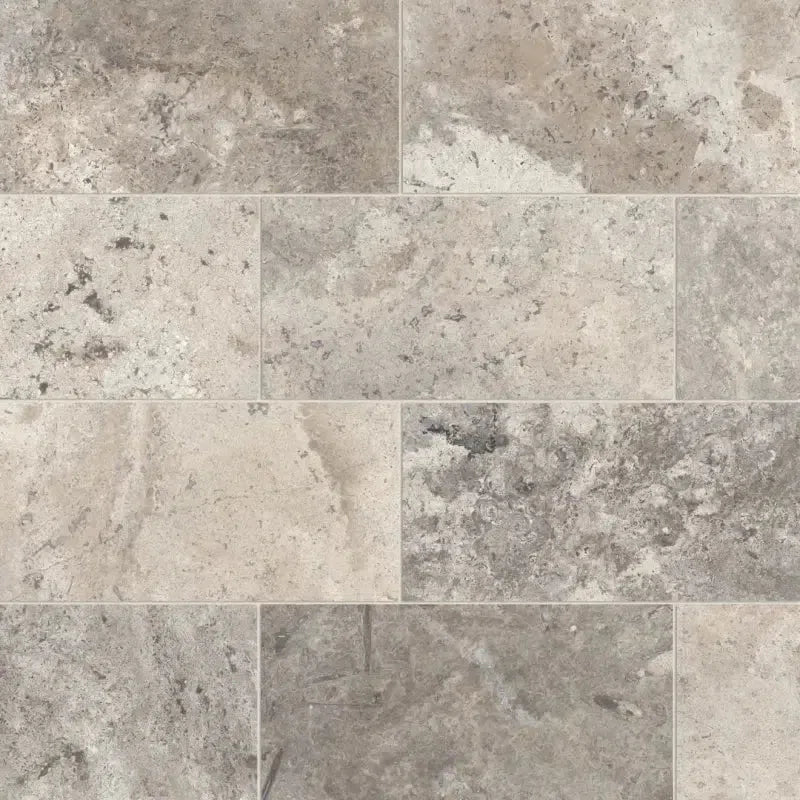 Silver Travertine
Silver Travertine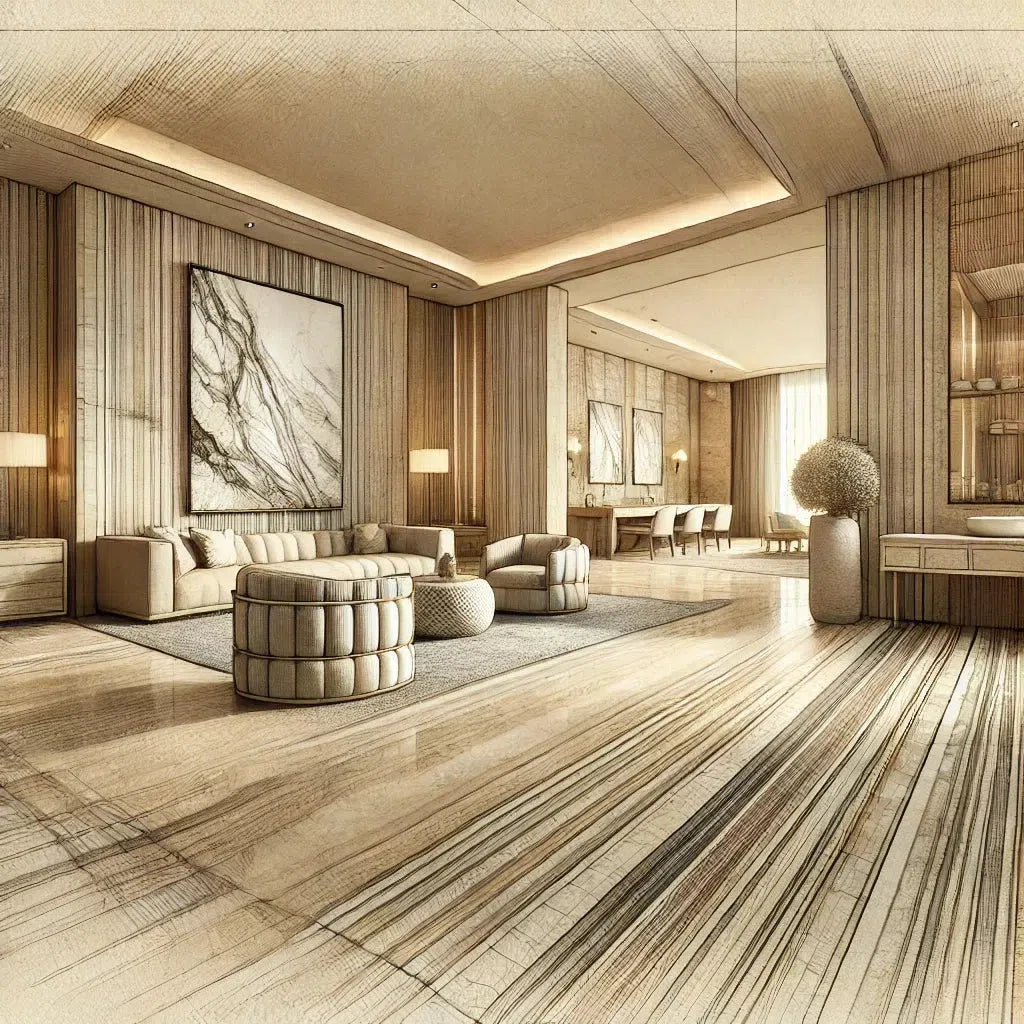 Exotic Travertine
Exotic Travertine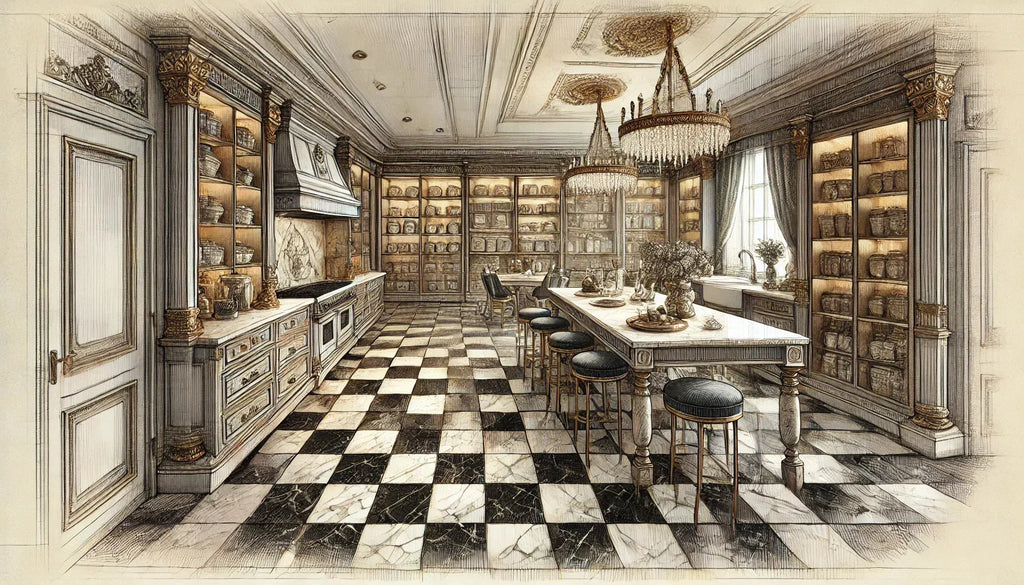 Checkerboard
Checkerboard
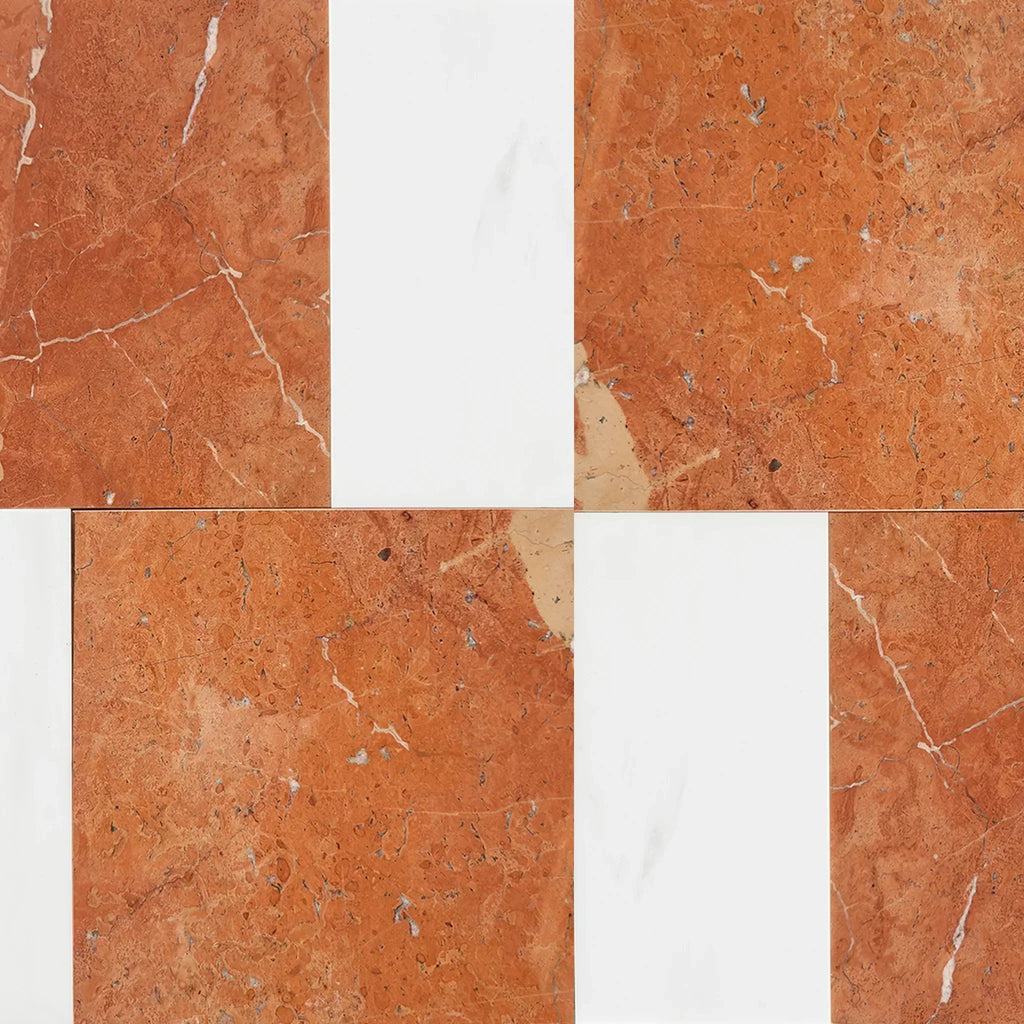 Patterned Tile
Patterned Tile
 Shop By Material
Shop By Material
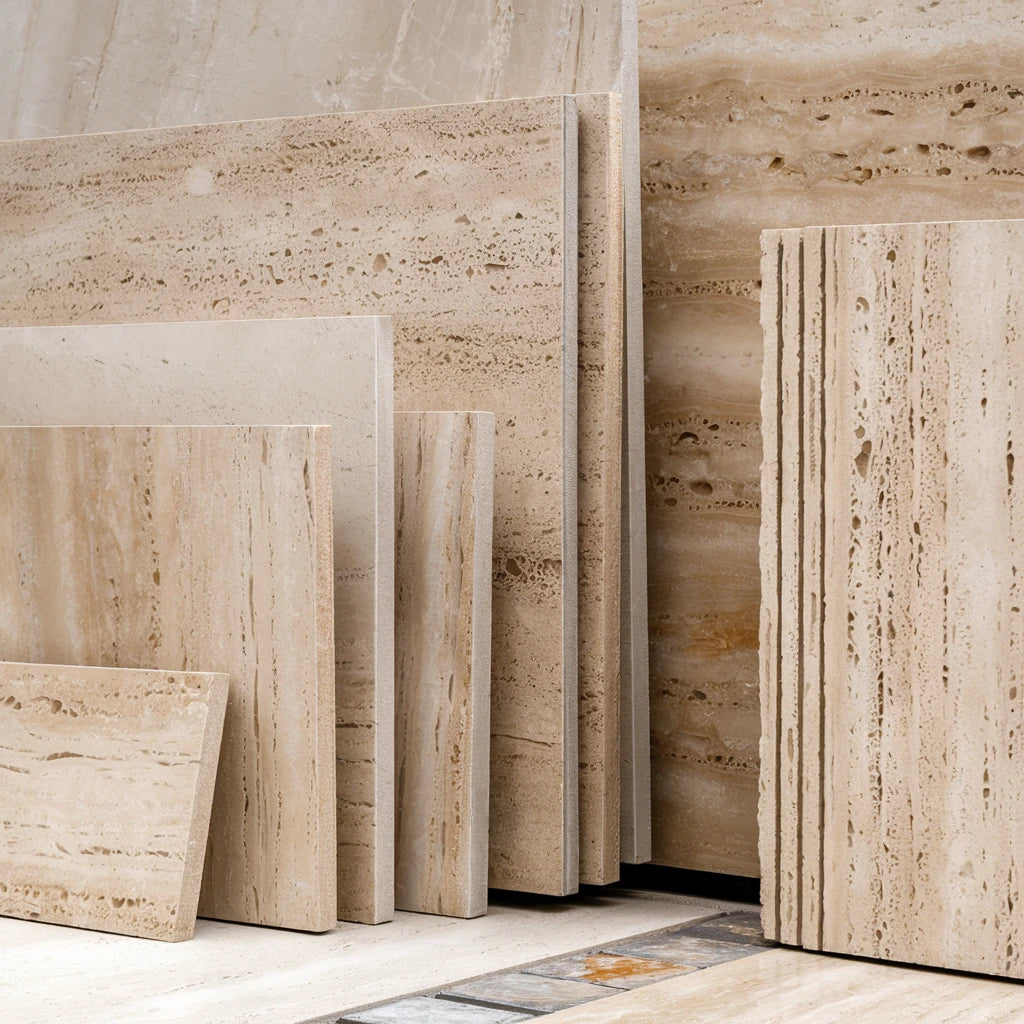 Travertine
Travertine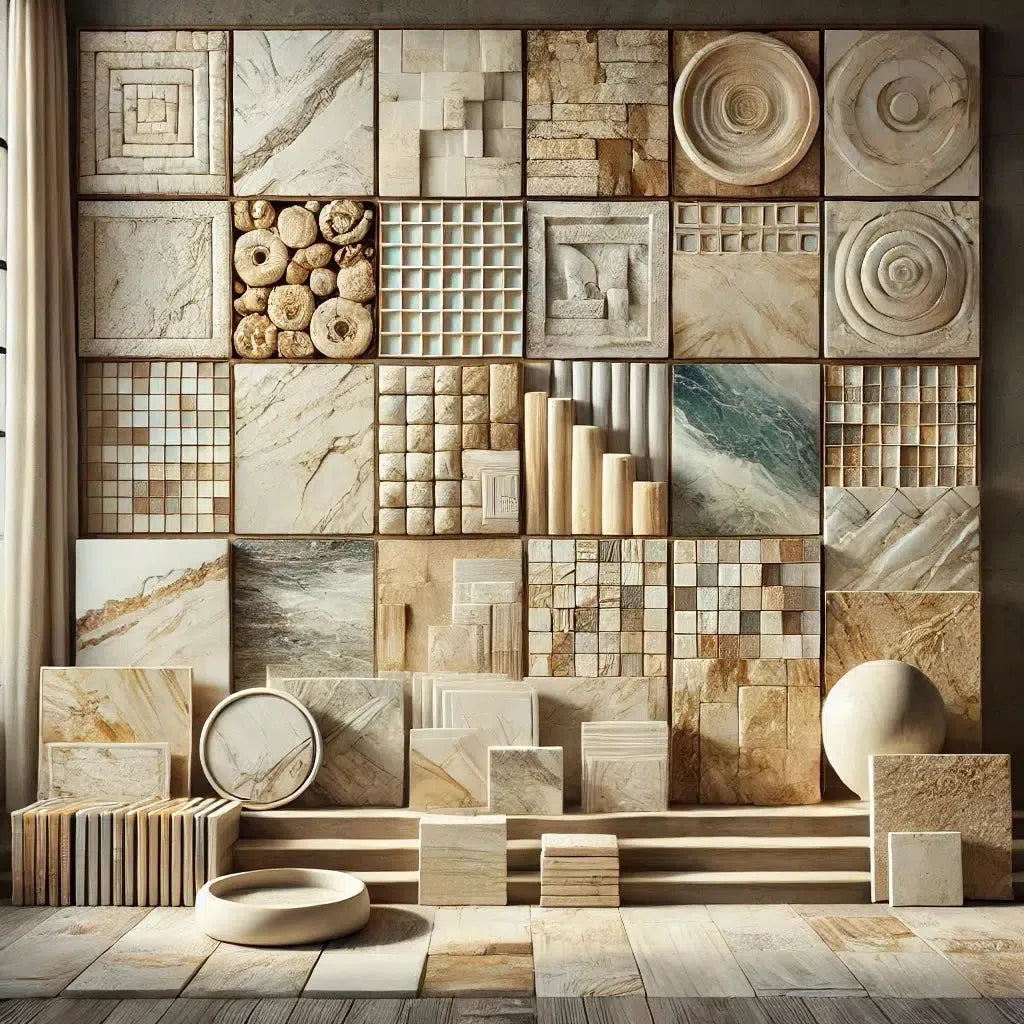 Marble
Marble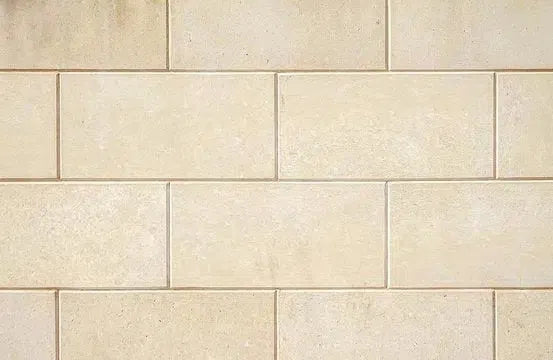 Limestone
Limestone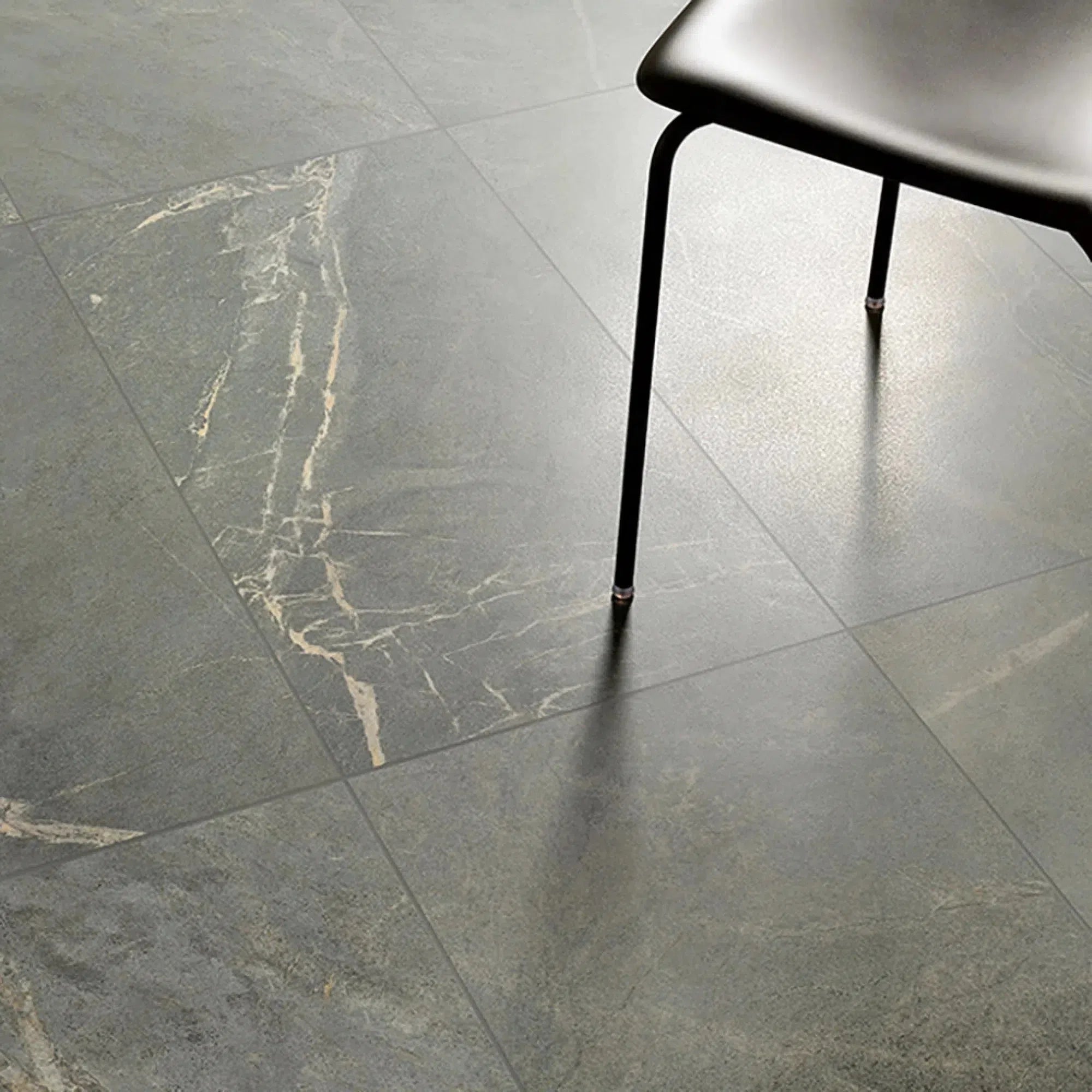 Soap Stone
Soap Stone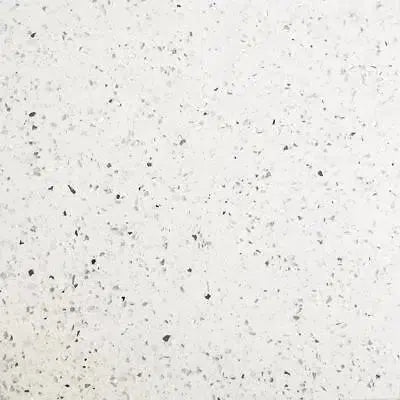 Quartz
Quartz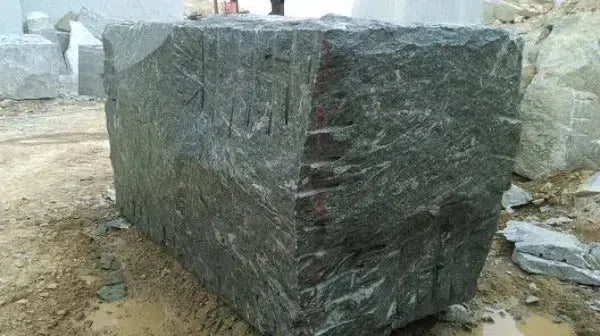 Granite
Granite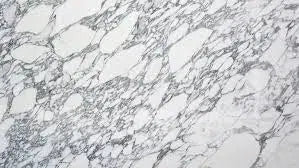 Shop By Name
Shop By Name
 Absolute Black Granite
Absolute Black Granite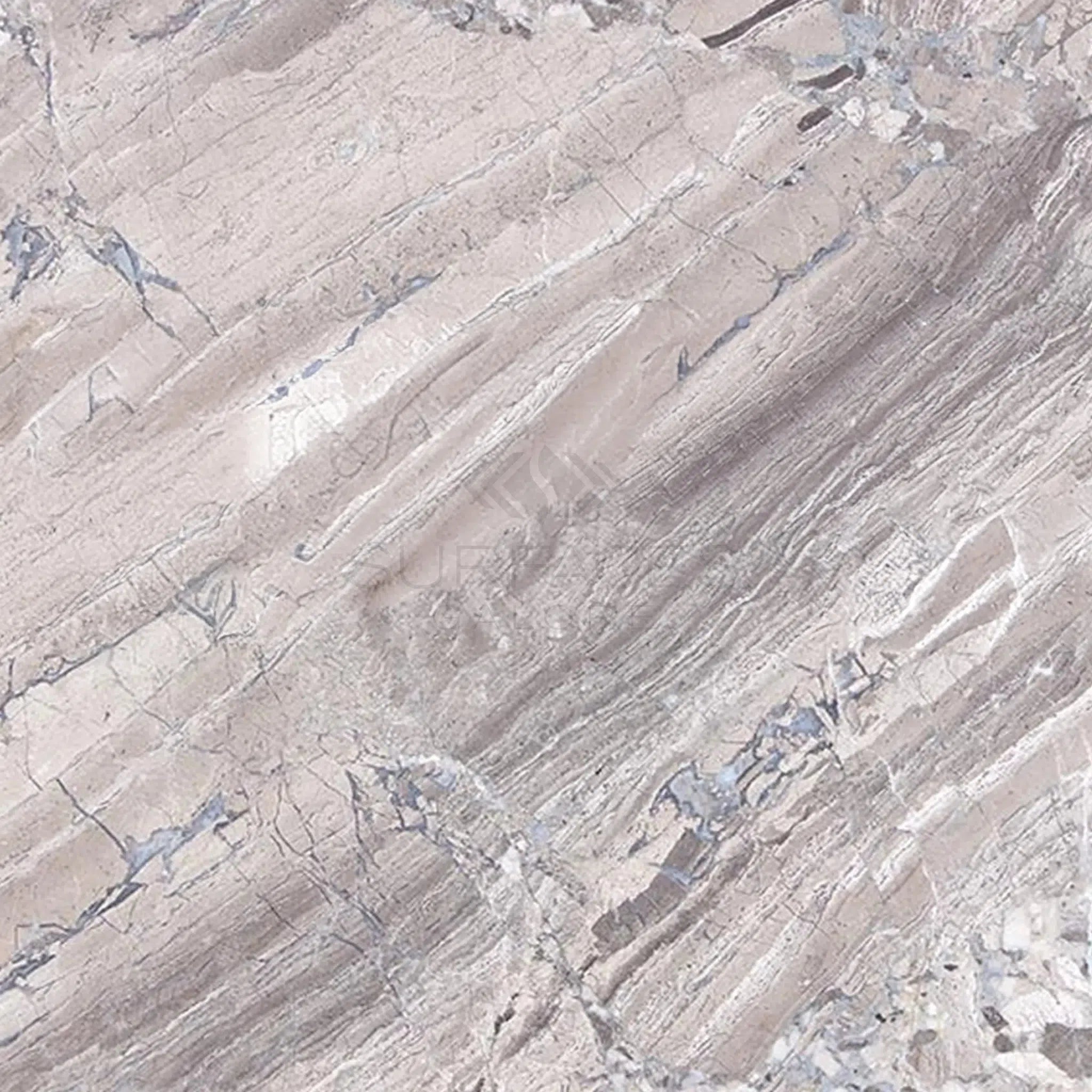 Atlantic Gray Marble
Atlantic Gray Marble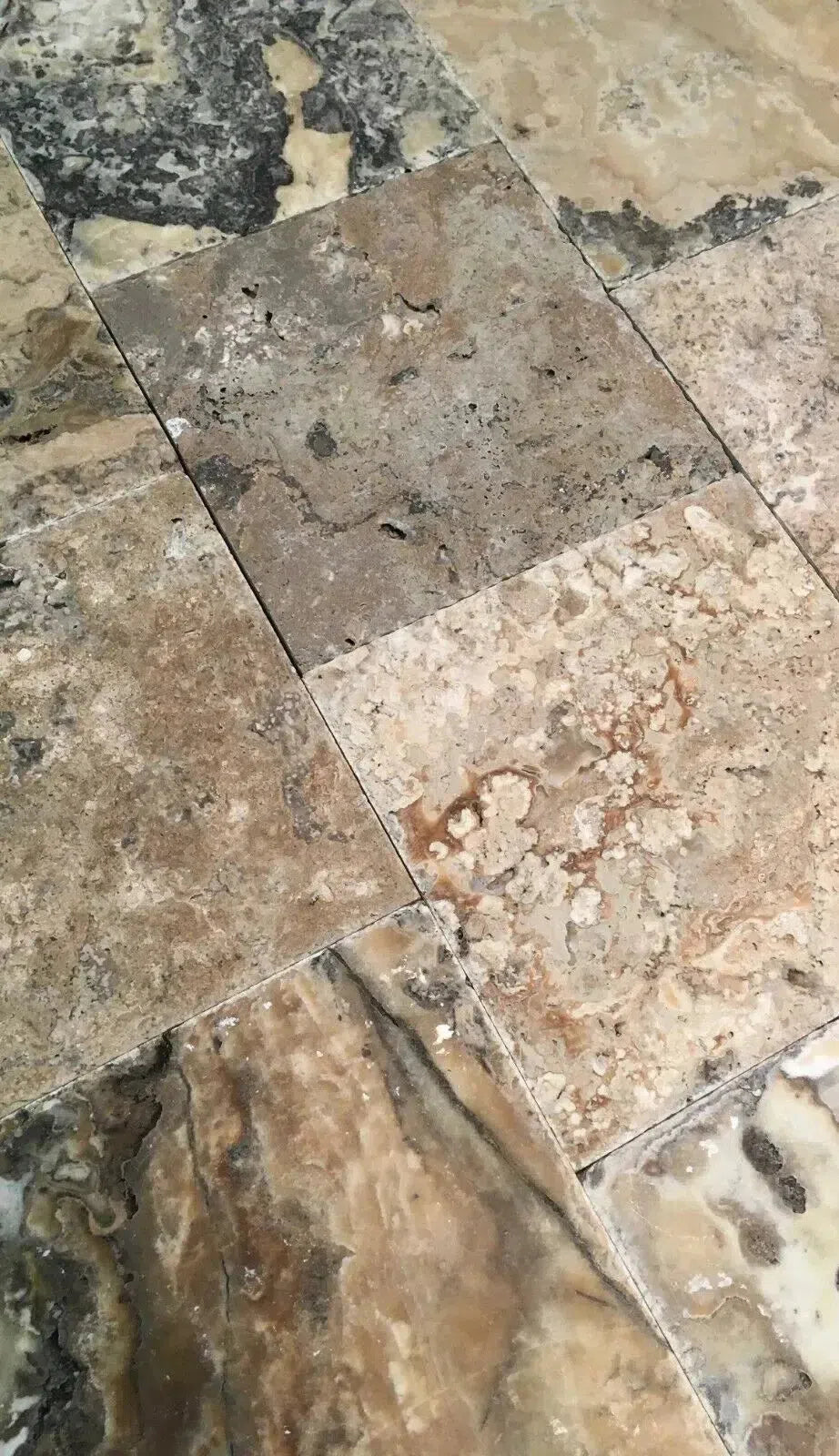 Antico Onyx Travertine
Antico Onyx Travertine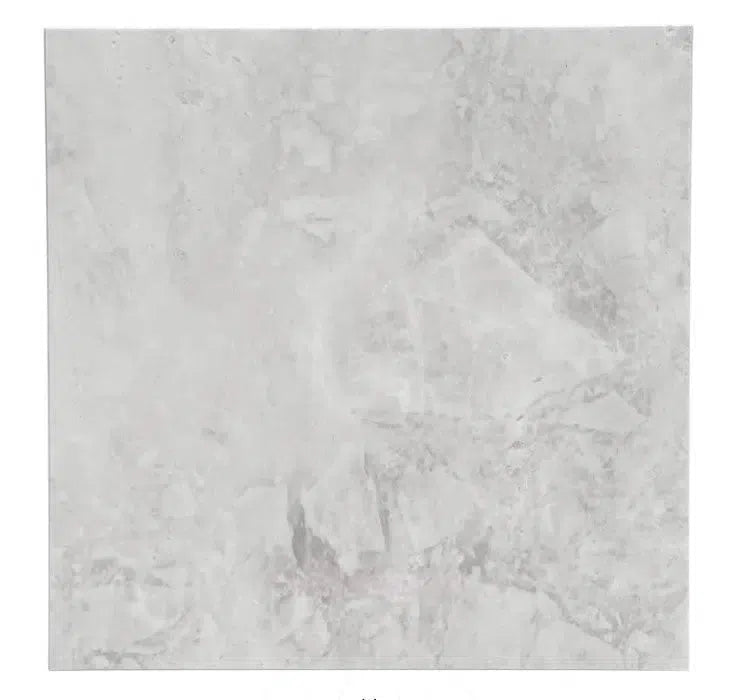 Bianco Congelato Dolomite
Bianco Congelato Dolomite Bianco Venatino (Bianco Mare) Marble
Bianco Venatino (Bianco Mare) Marble Burgundy Mocha Marble
Burgundy Mocha Marble Calacatta Verde Royale Marble
Calacatta Verde Royale Marble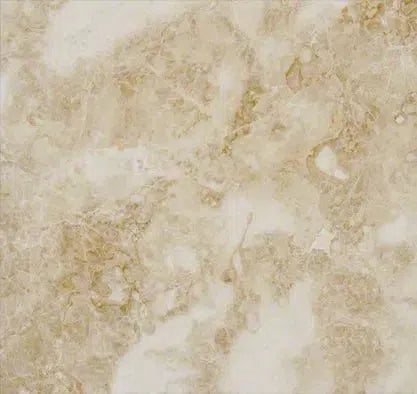 Cappuccino Marble
Cappuccino Marble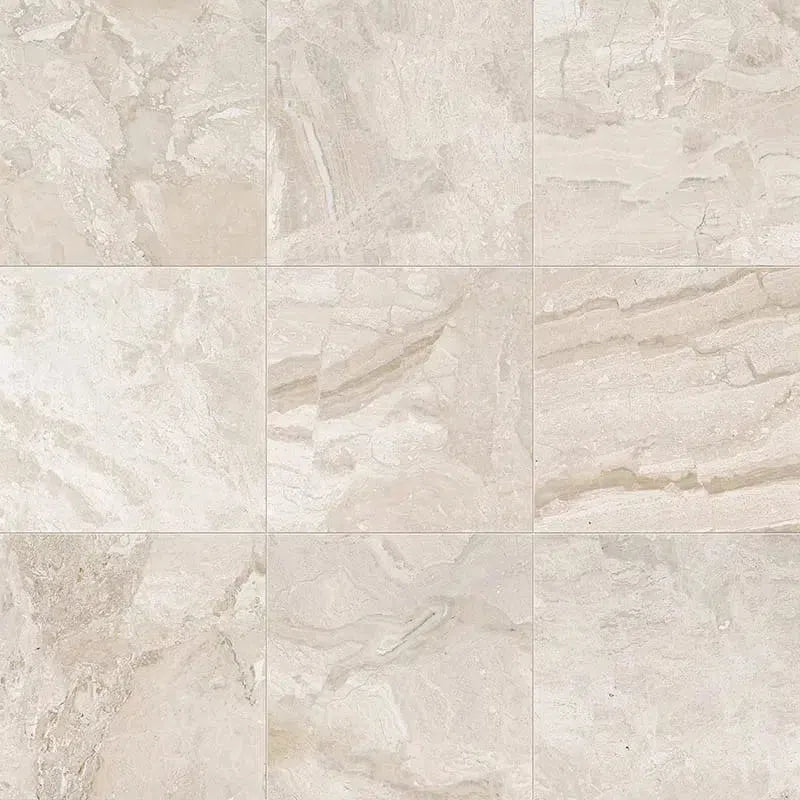 Diano Royal (Queen Beige) Marble
Diano Royal (Queen Beige) Marble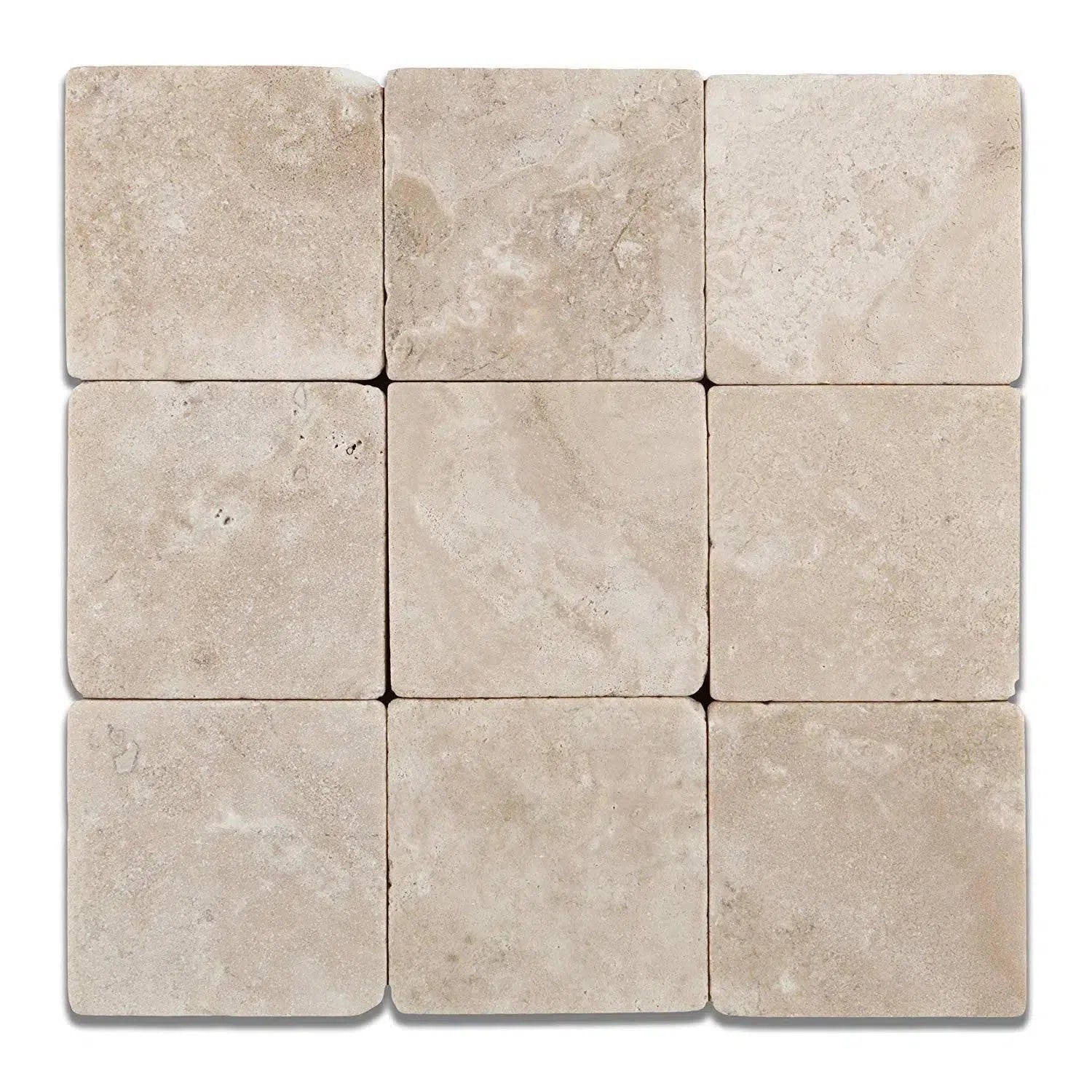 Durango Cream Traverine
Durango Cream Traverine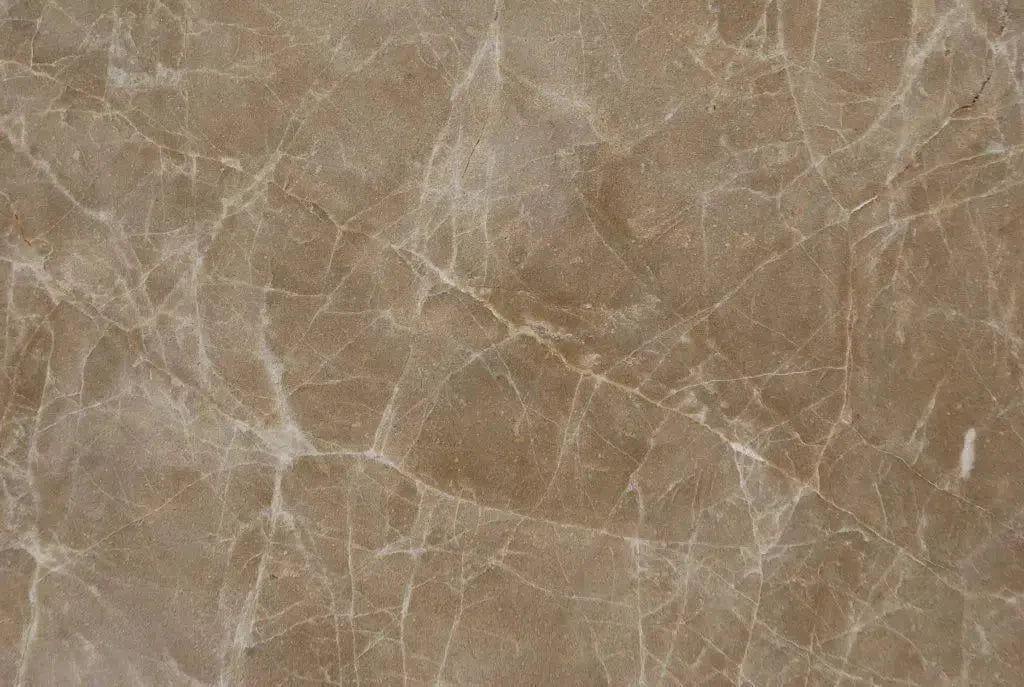 Emperador Light Marble
Emperador Light Marble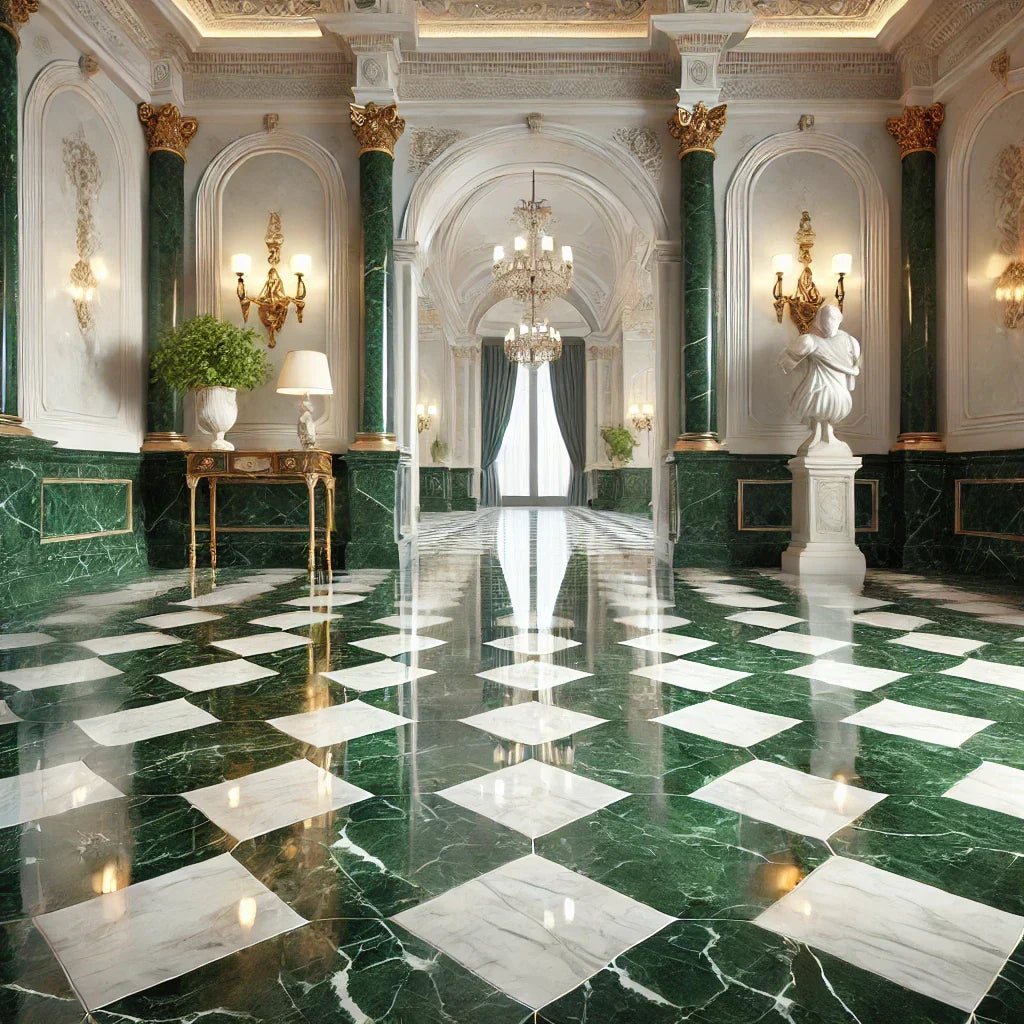 Empress Green Marble
Empress Green Marble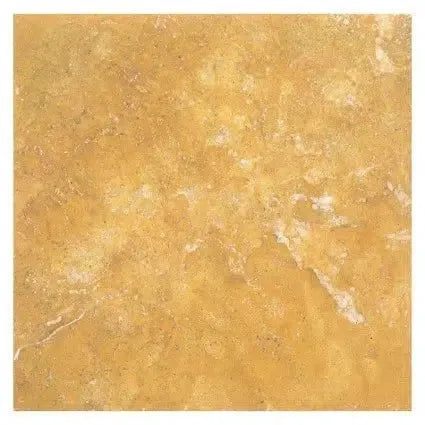 Gold/Yellow Travertine
Gold/Yellow Travertine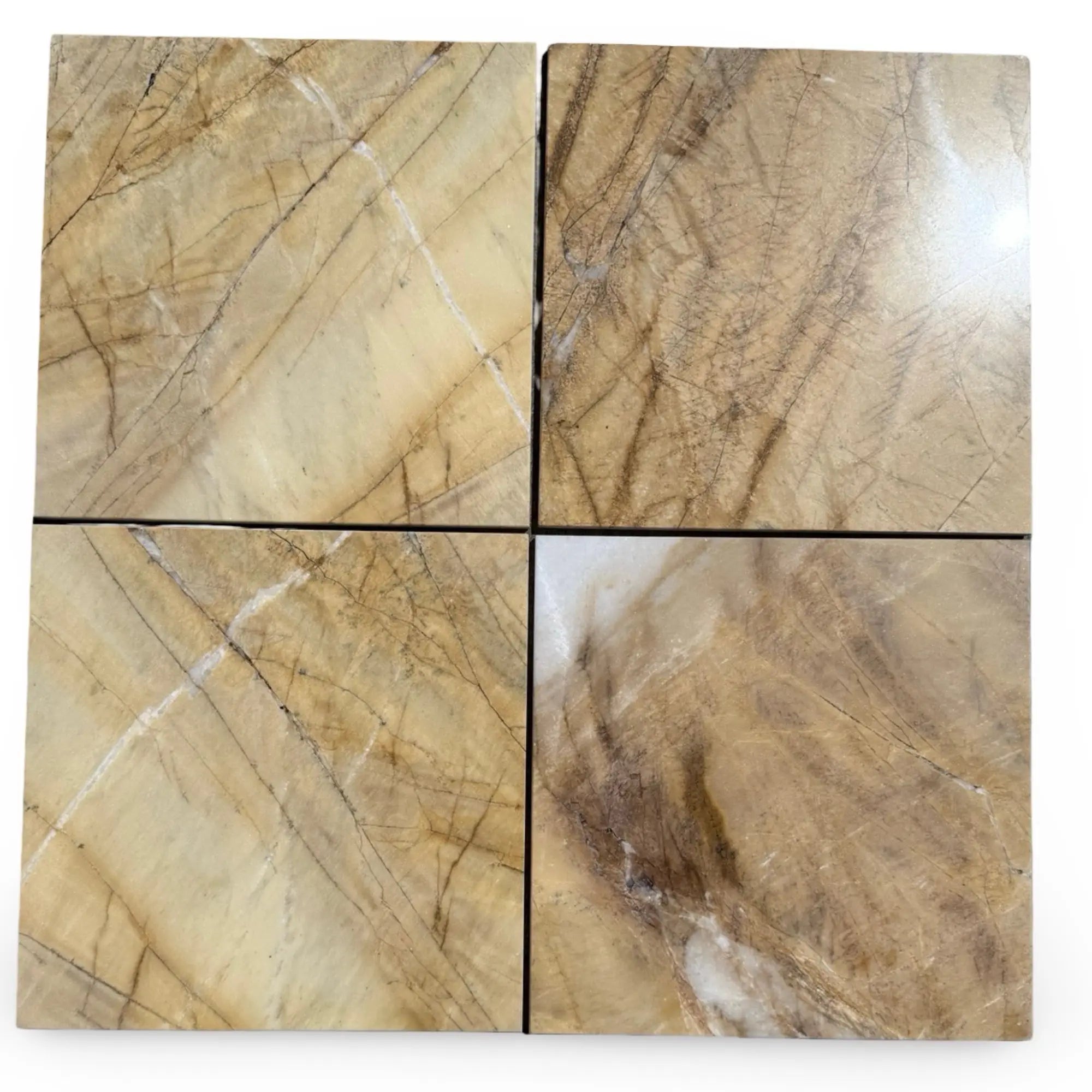 Golden Horizon Marble
Golden Horizon Marble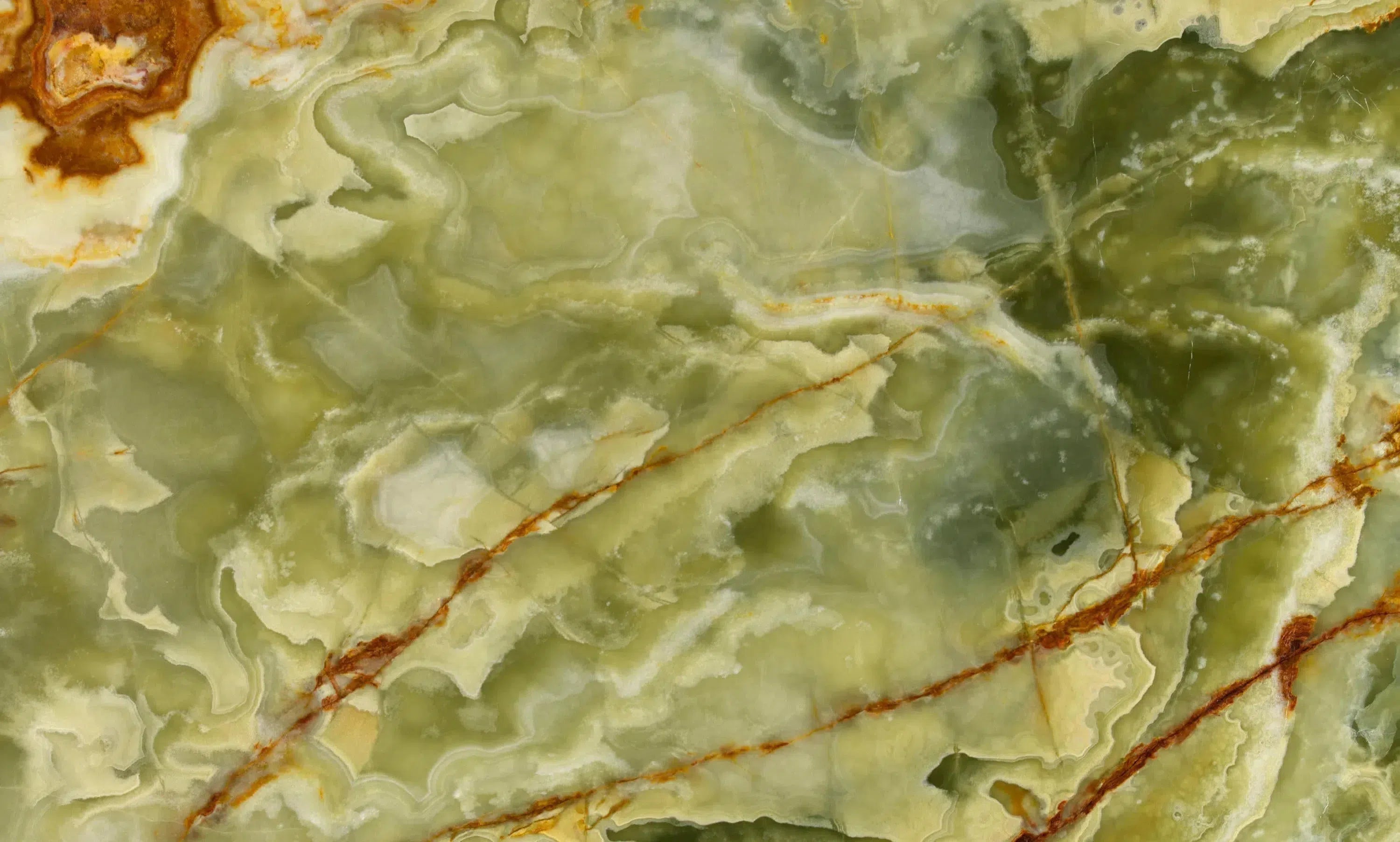 Green Onyx Marble
Green Onyx Marble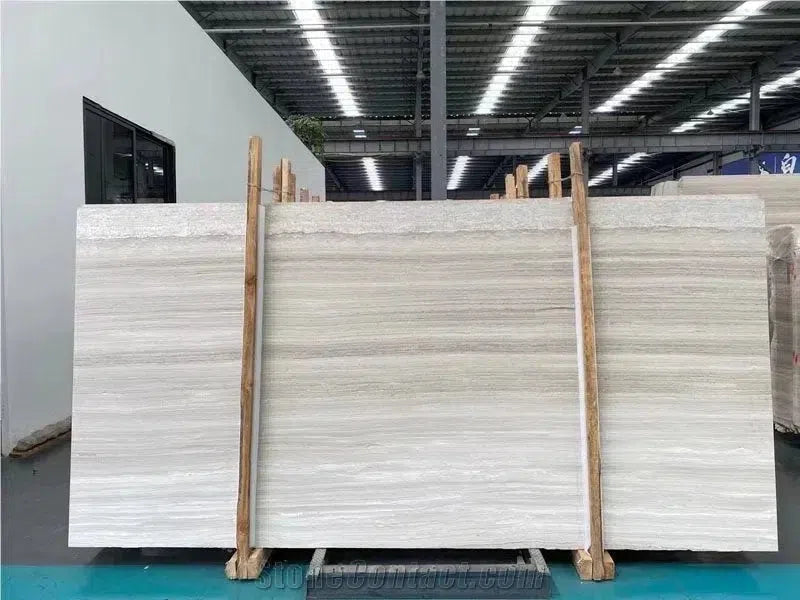 Haisa Light (White Wood) Limestone
Haisa Light (White Wood) Limestone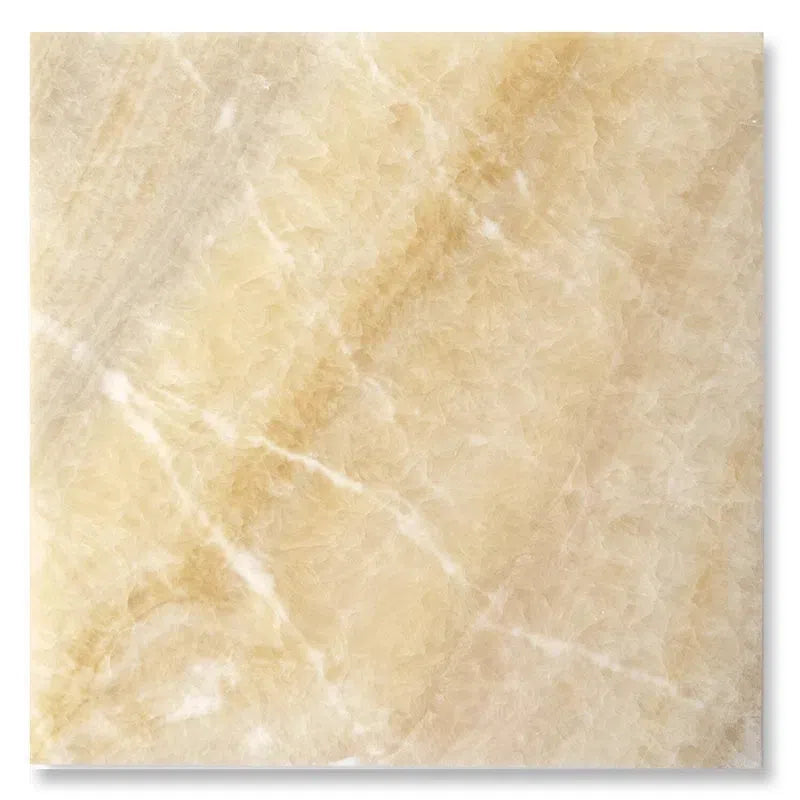 Honey Onyx Marble
Honey Onyx Marble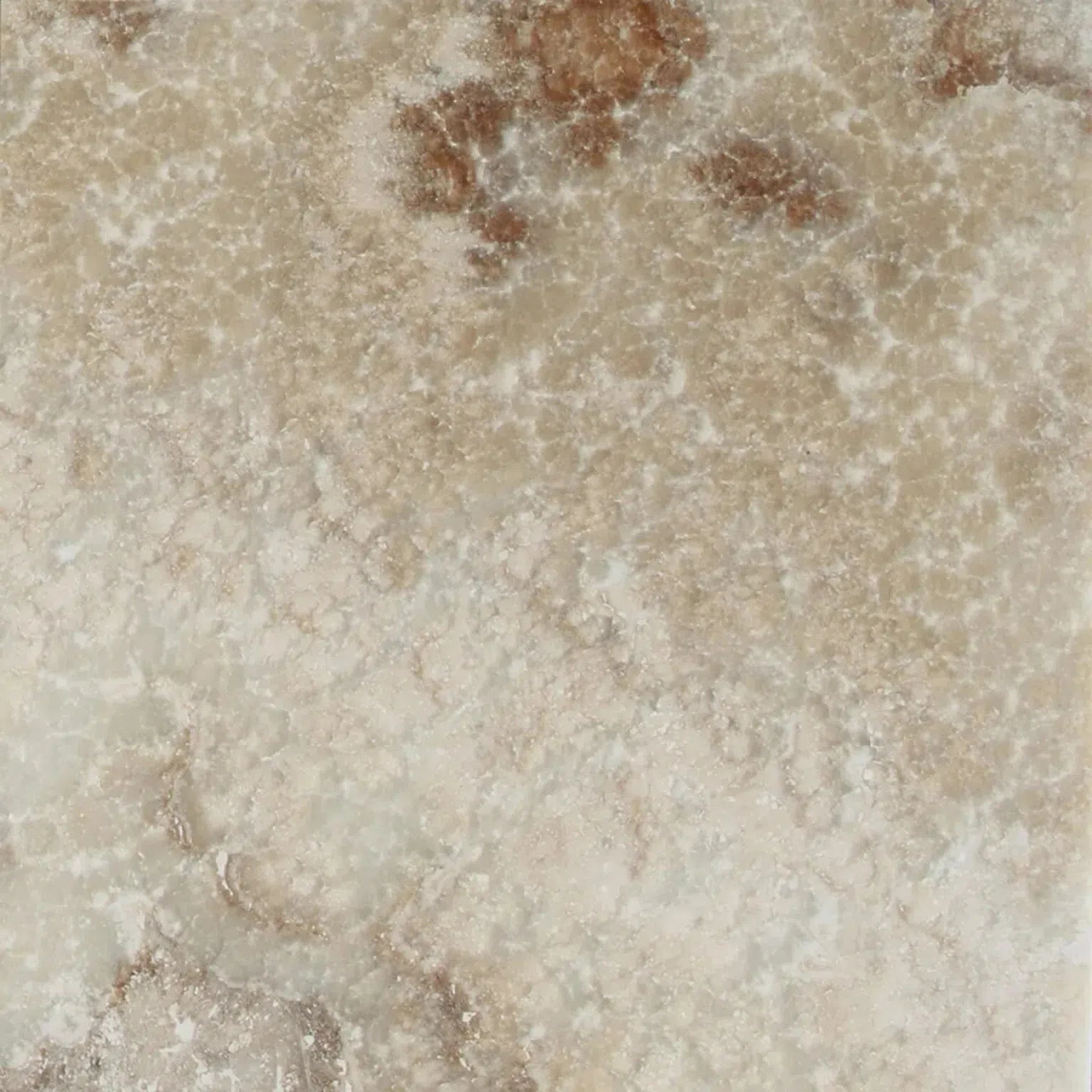 La Travonya Travertine
La Travonya Travertine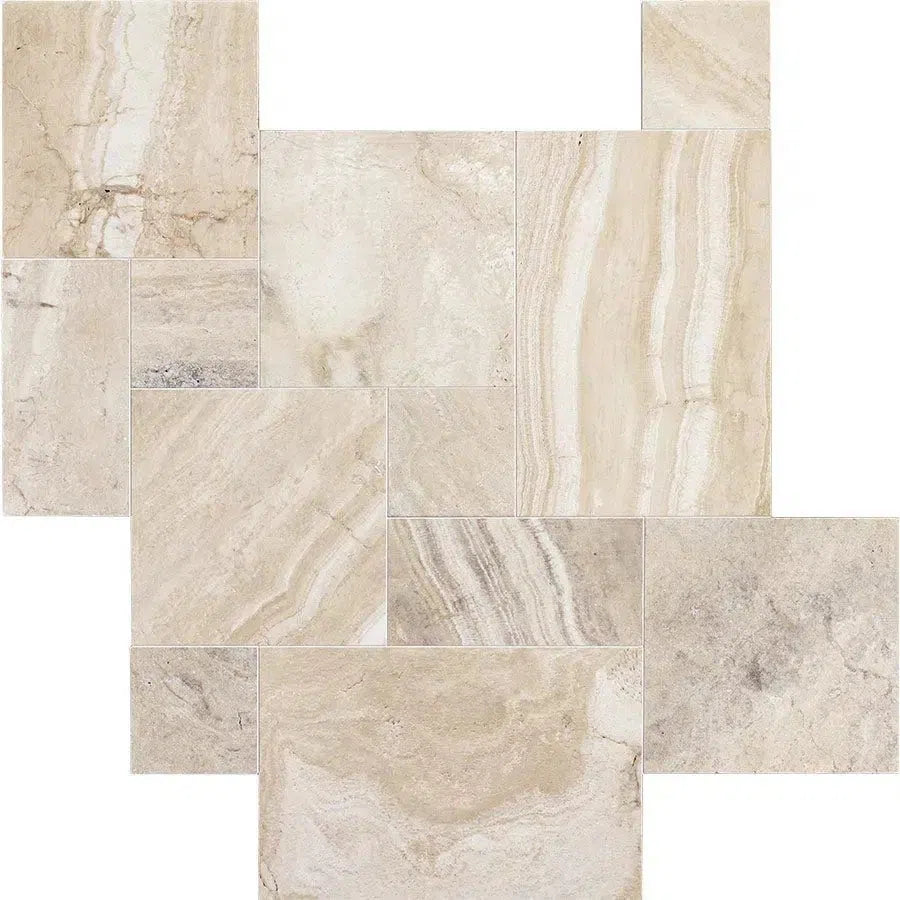 Malibu Travertine
Malibu Travertine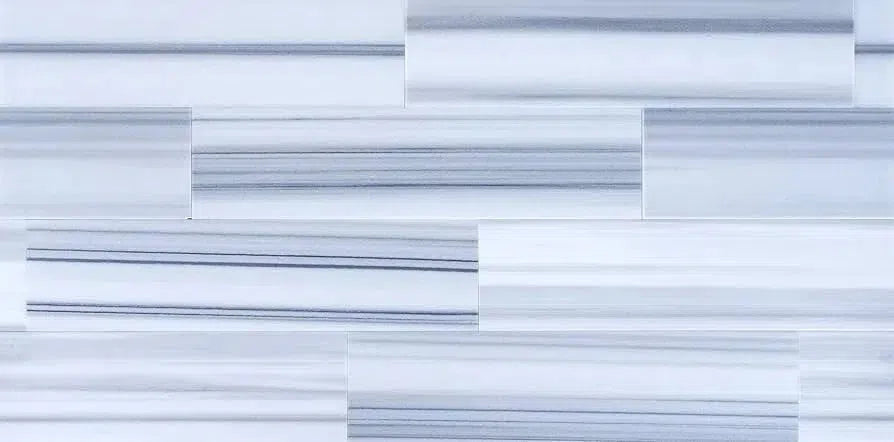 Mink (Equator) Marble
Mink (Equator) Marble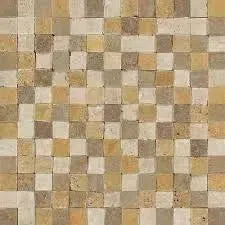 Mixed (Ivory-Noce-Gold) Travertine
Mixed (Ivory-Noce-Gold) Travertine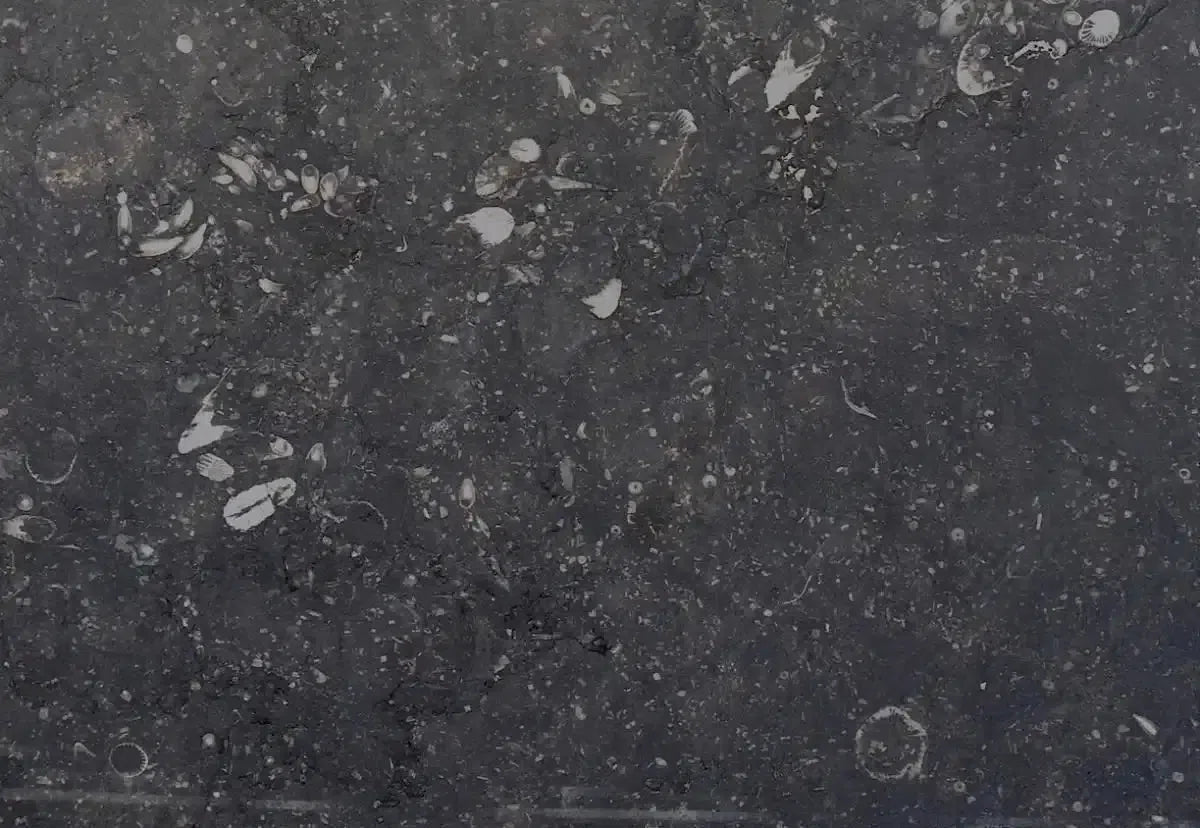 Pierre Bleue (Pierre Blue) Marble
Pierre Bleue (Pierre Blue) Marble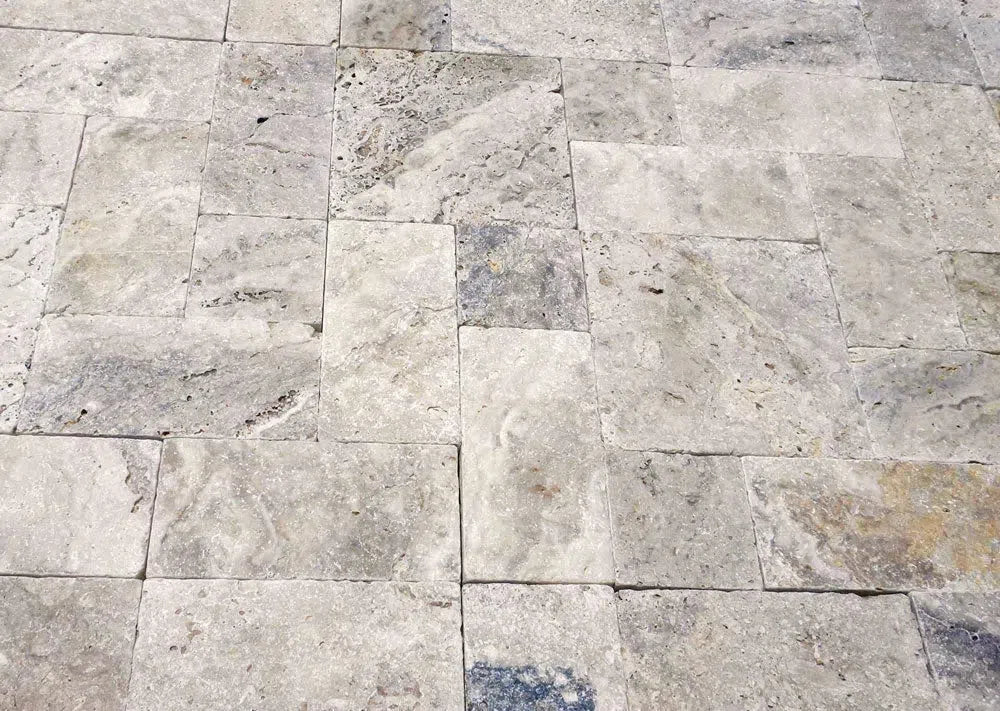 Philadelphia Travertine
Philadelphia Travertine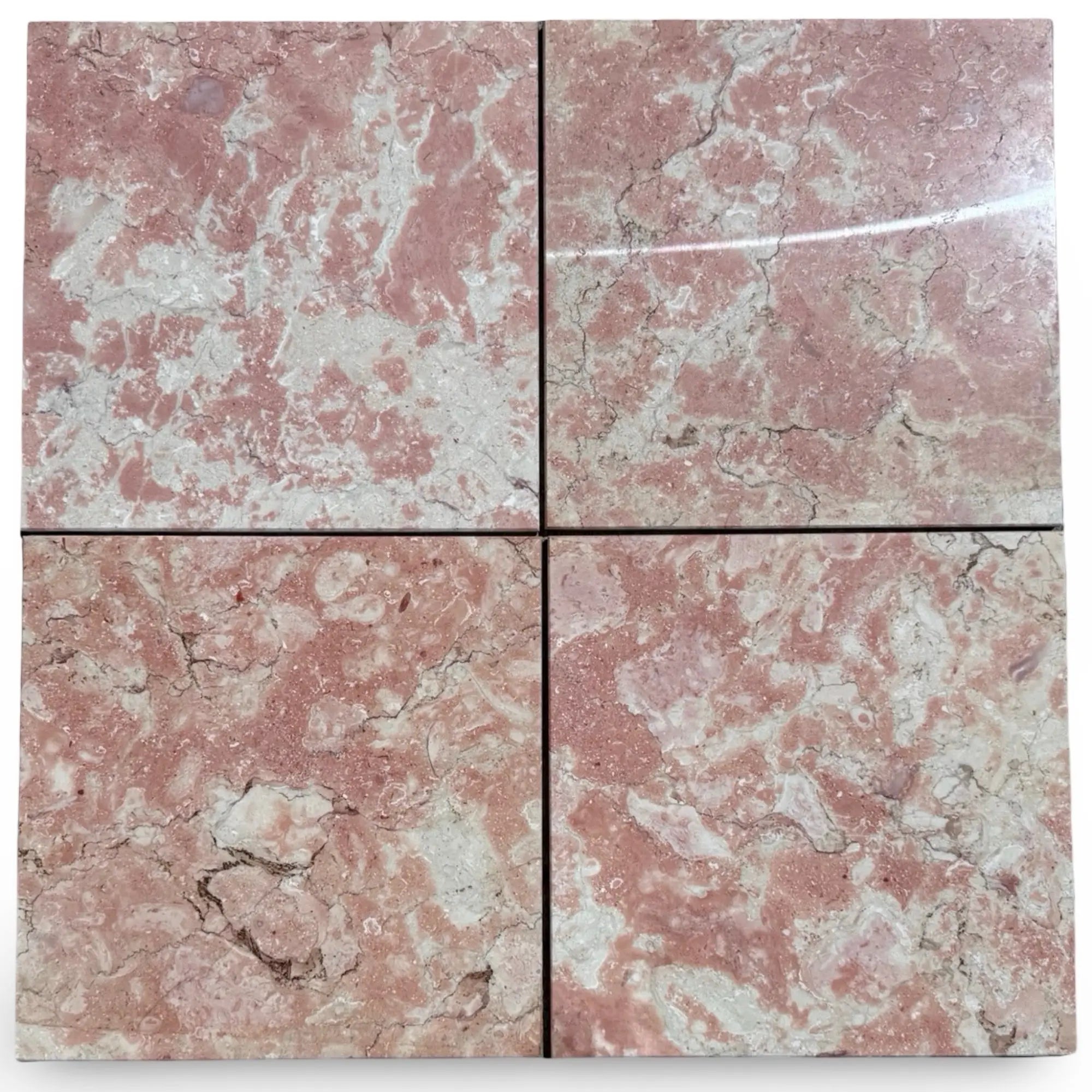 Rosé Aurora Marble
Rosé Aurora Marble Rosetta Storm Marble
Rosetta Storm Marble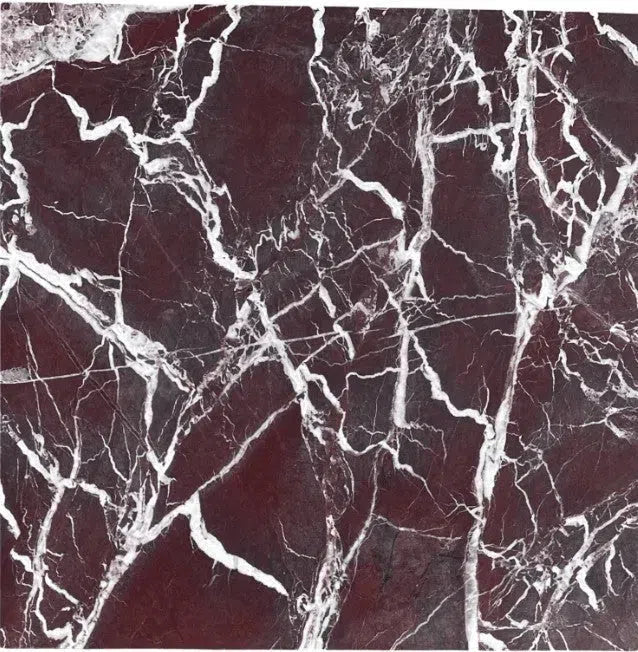 Rosso Levanto Marble
Rosso Levanto Marble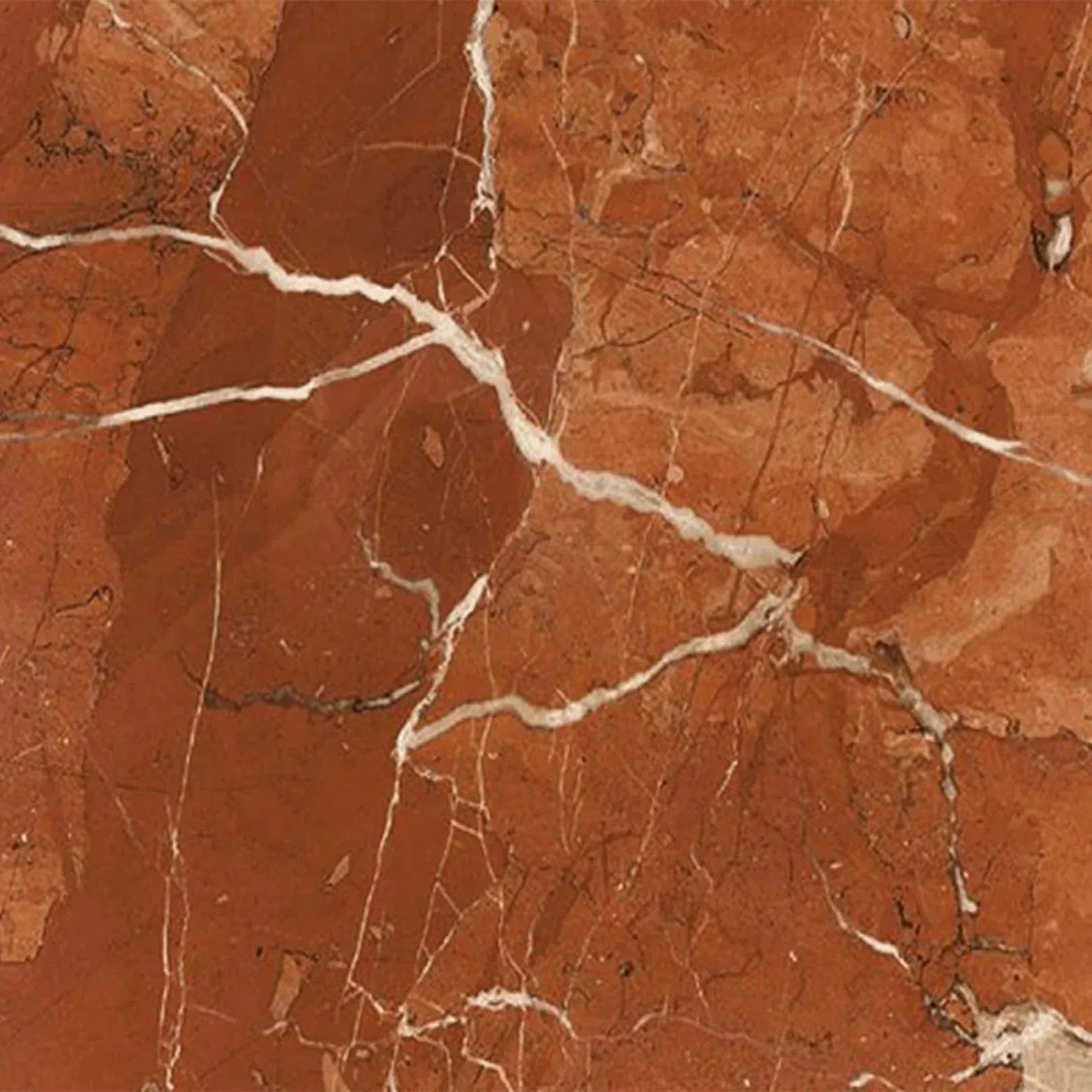 Rojo Alicante Marble
Rojo Alicante Marble Sahara Ember Marble
Sahara Ember Marble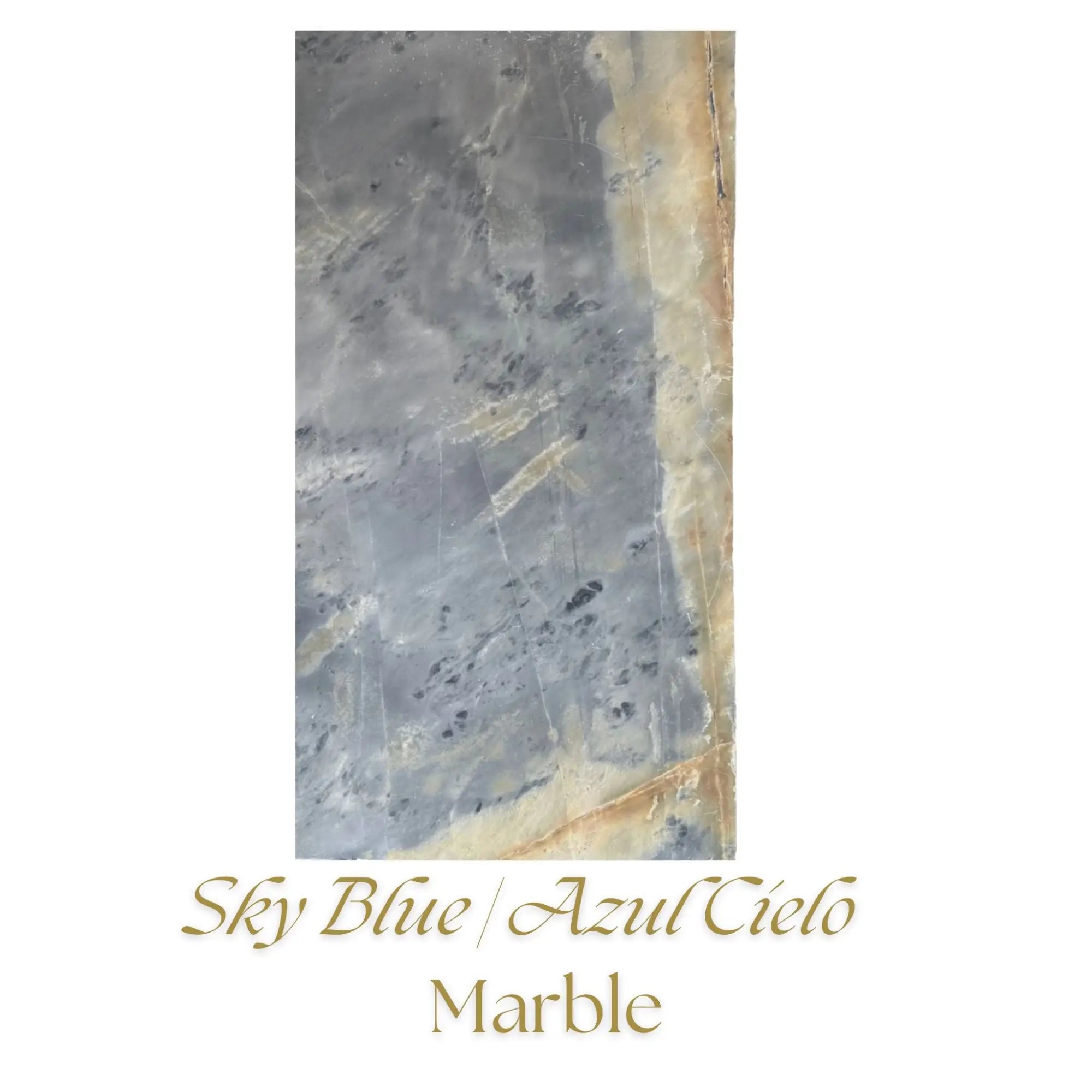 Sky Blue | Azul Cielo Marble
Sky Blue | Azul Cielo Marble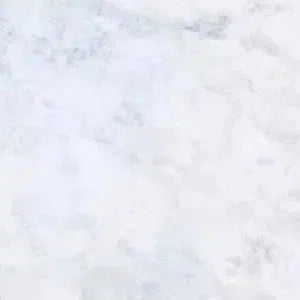 Snow White (Afyon White) Marble
Snow White (Afyon White) Marble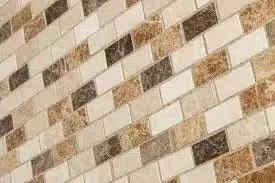 Spanish Mix Marble
Spanish Mix Marble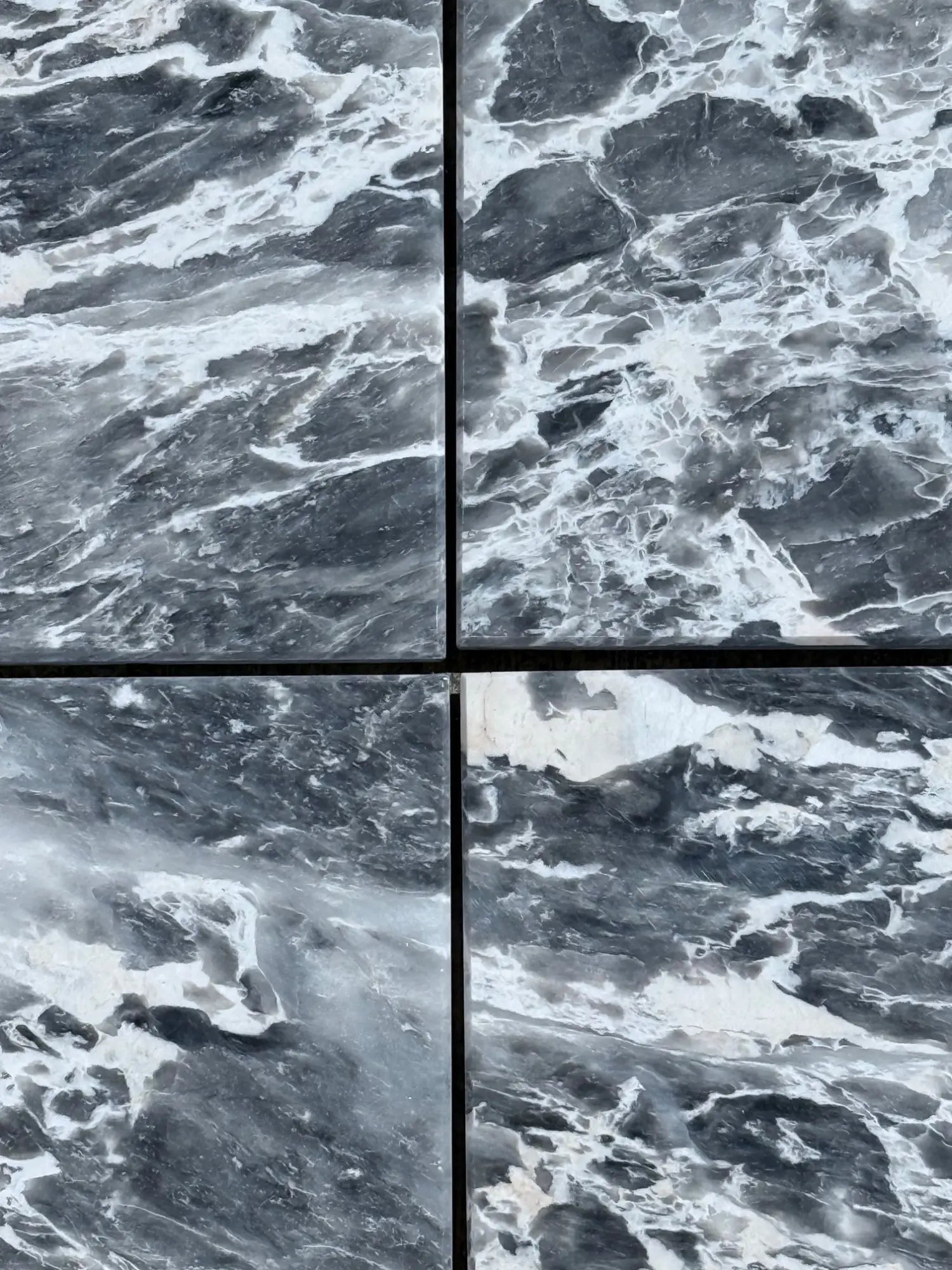 Storm Gray Marble
Storm Gray Marble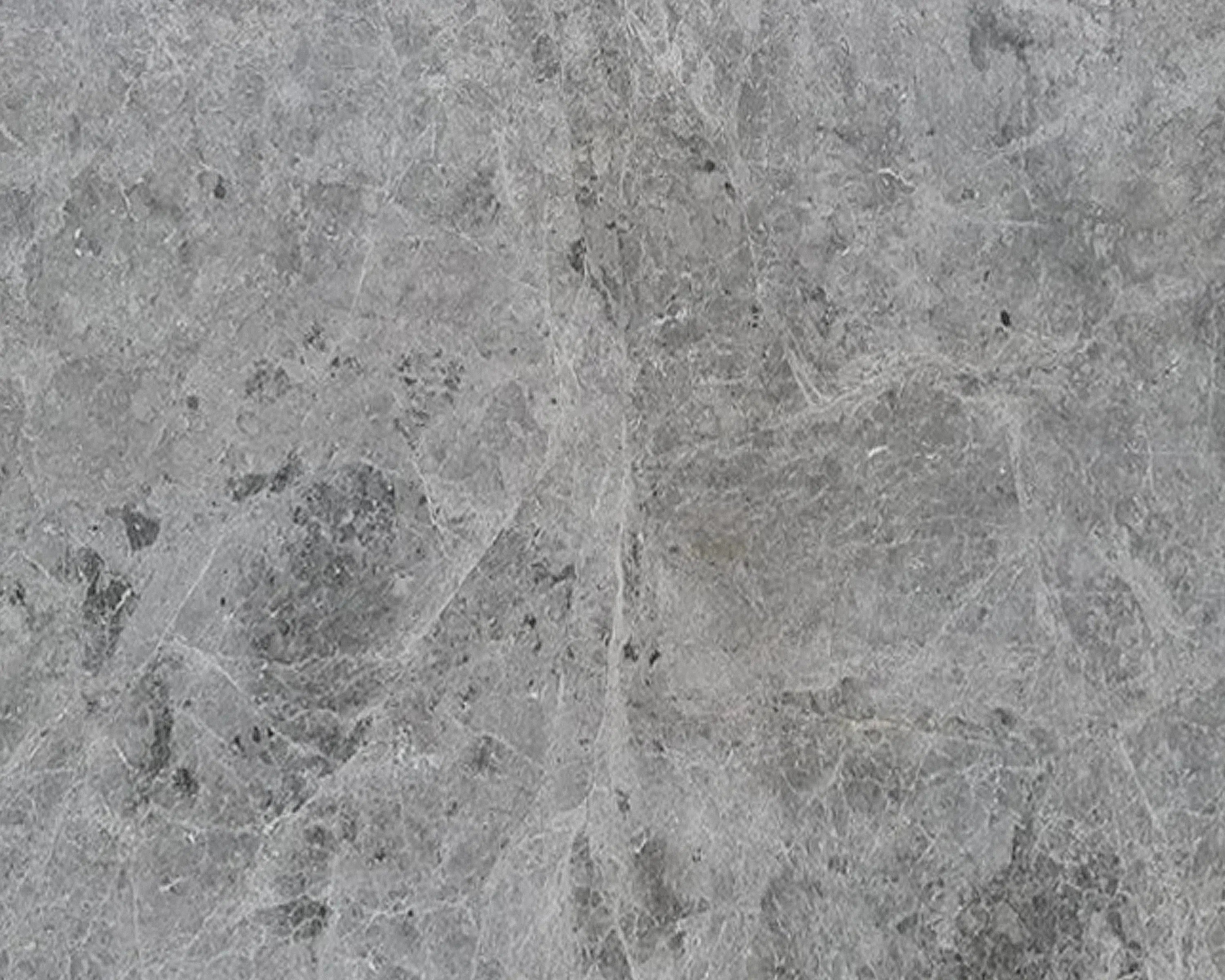 Tundra Gray (Atlantic Gray) Marble
Tundra Gray (Atlantic Gray) Marble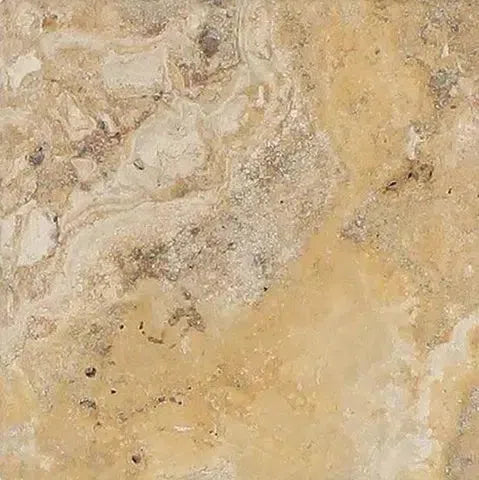 Valencia Travertine
Valencia Travertine Valerenga Travertine
Valerenga Travertine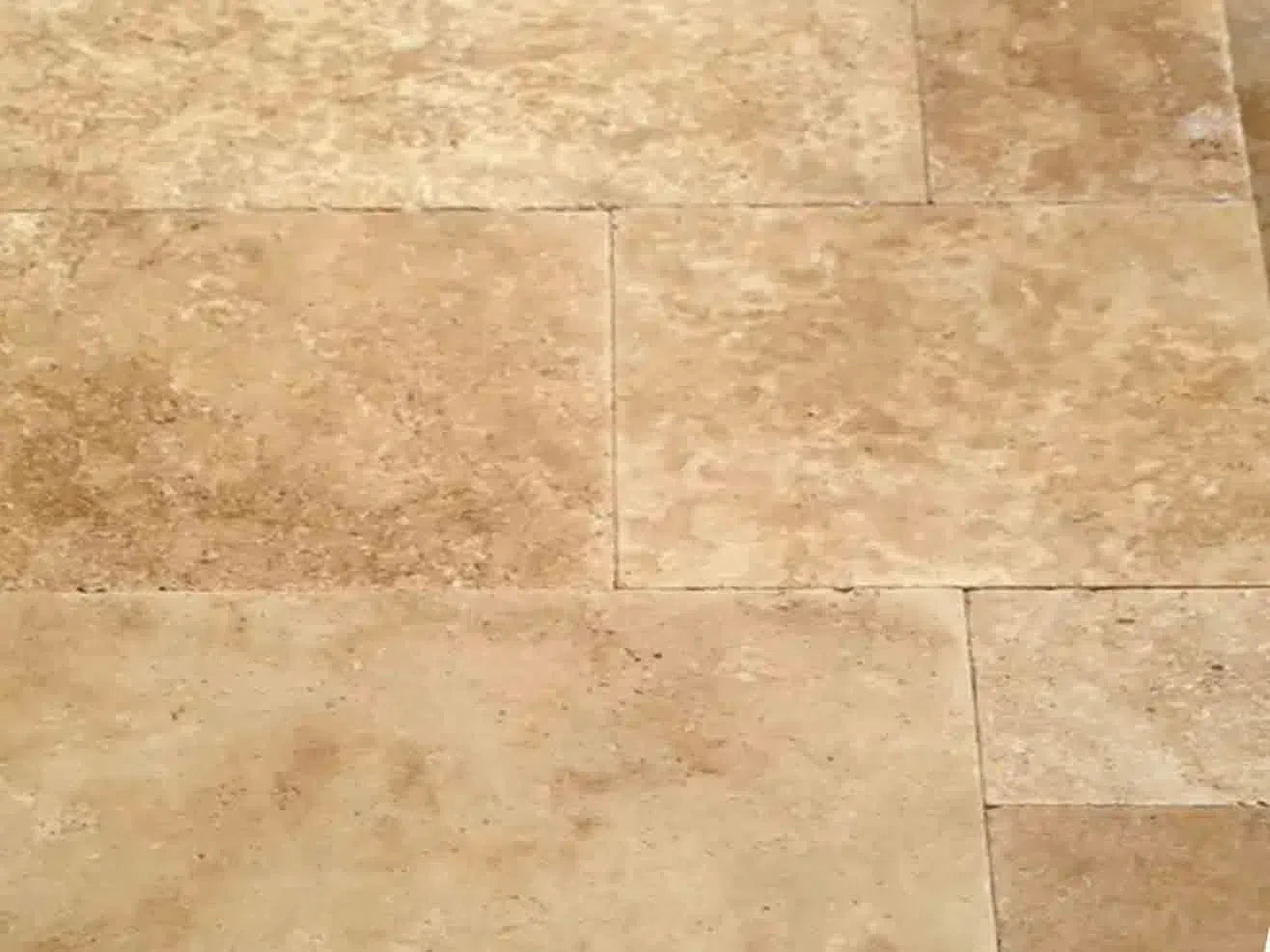 Walnut Travertine
Walnut Travertine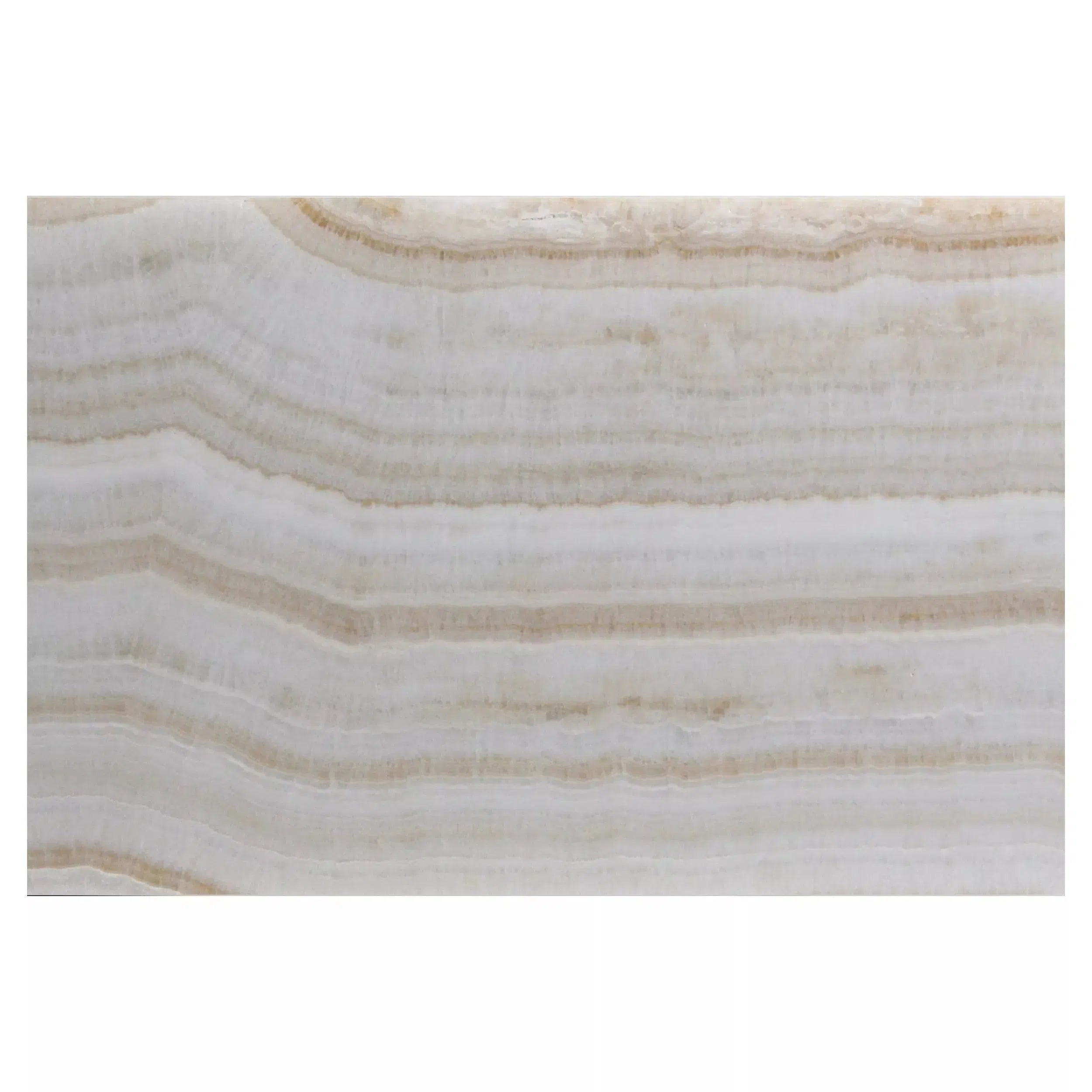 White Onyx Marble
White Onyx Marble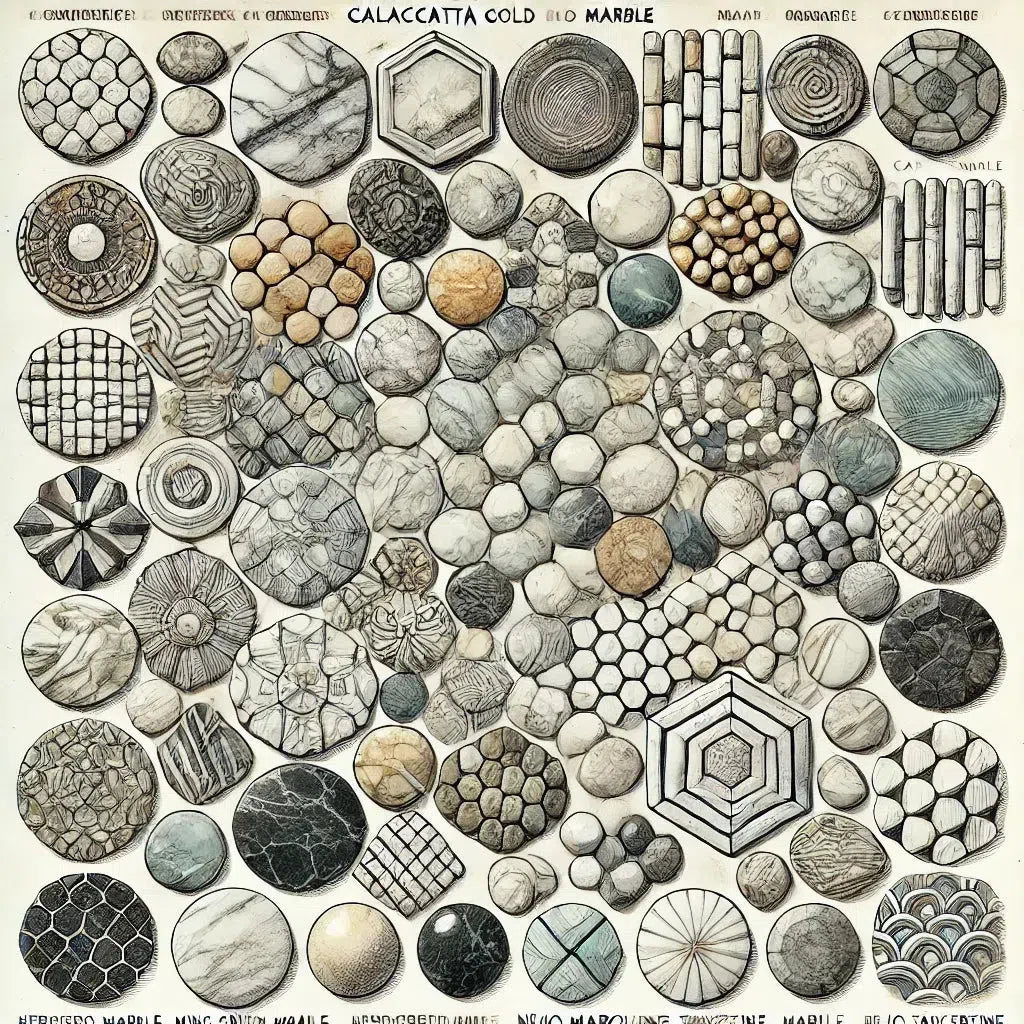 Shop By Type
Shop By Type
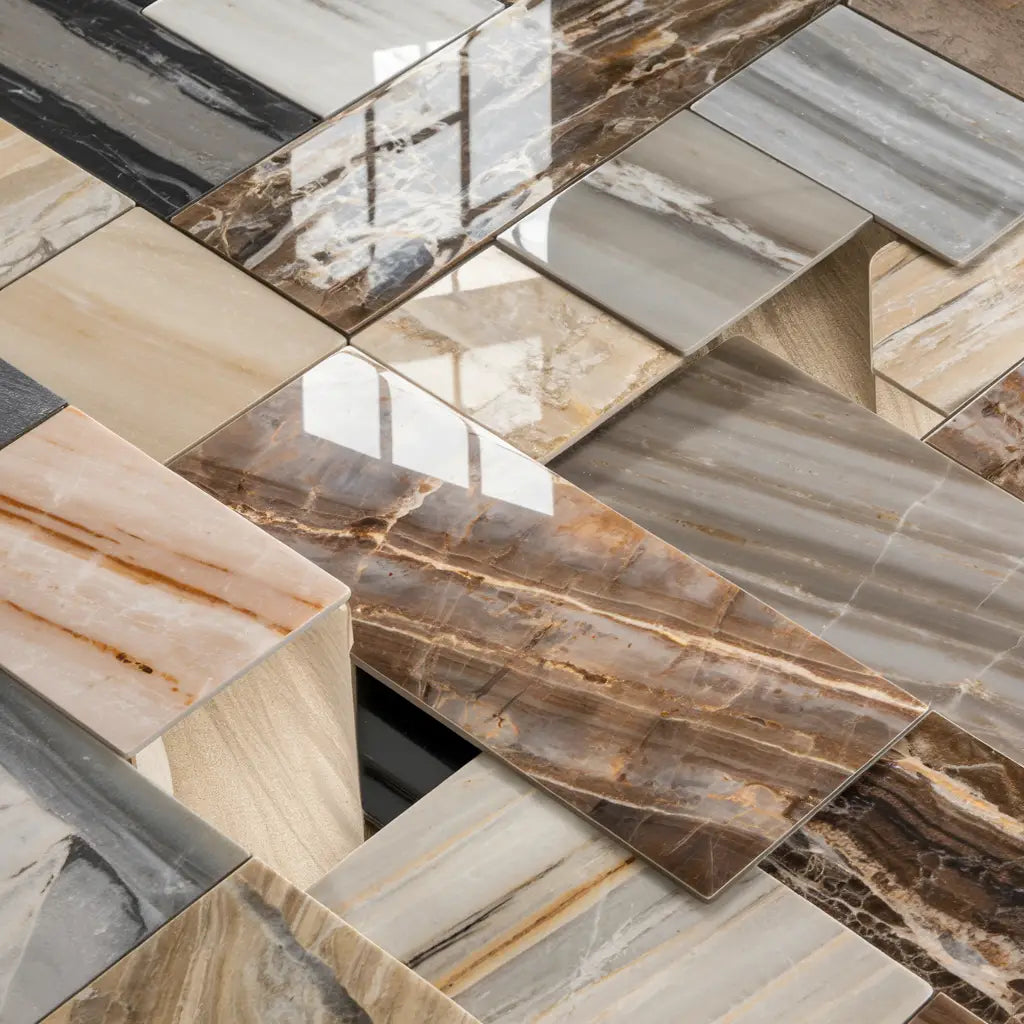 Marble Tiles
Marble Tiles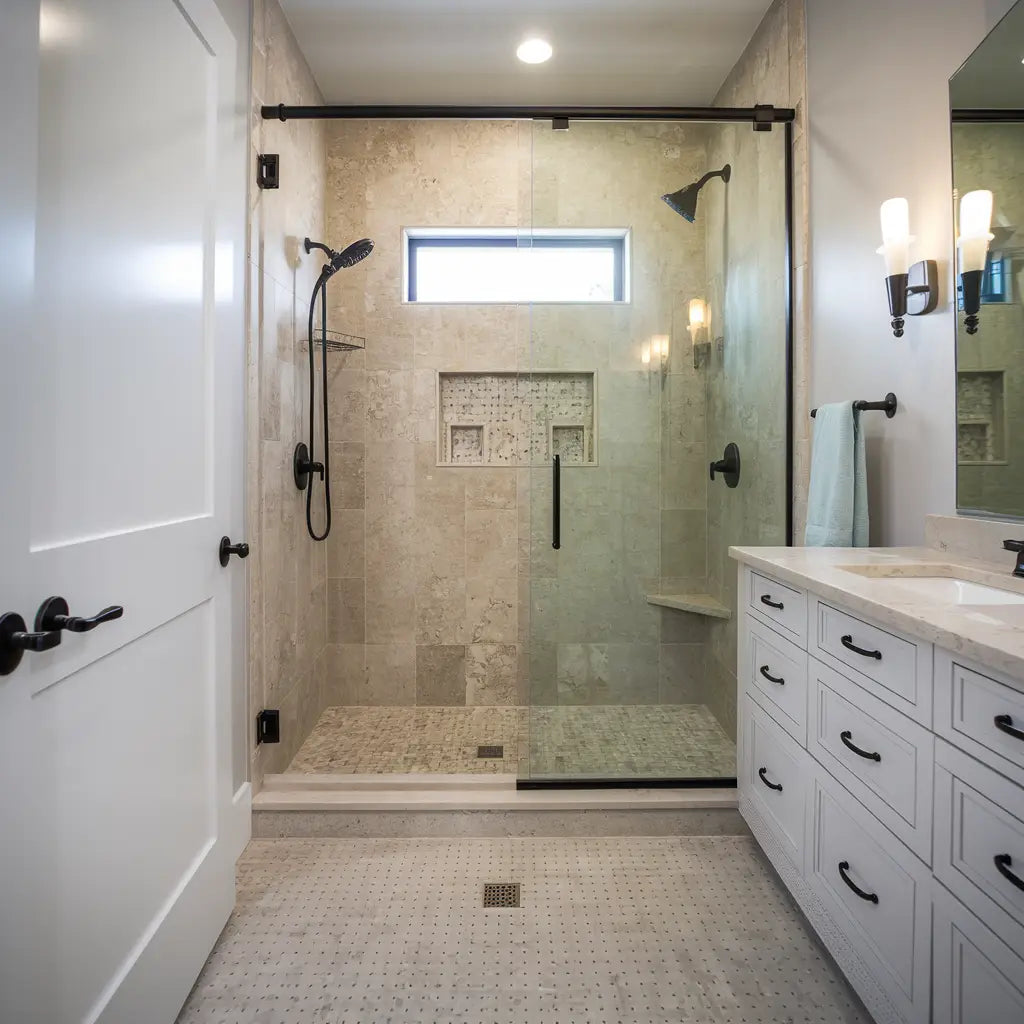 Marble Mosaic
Marble Mosaic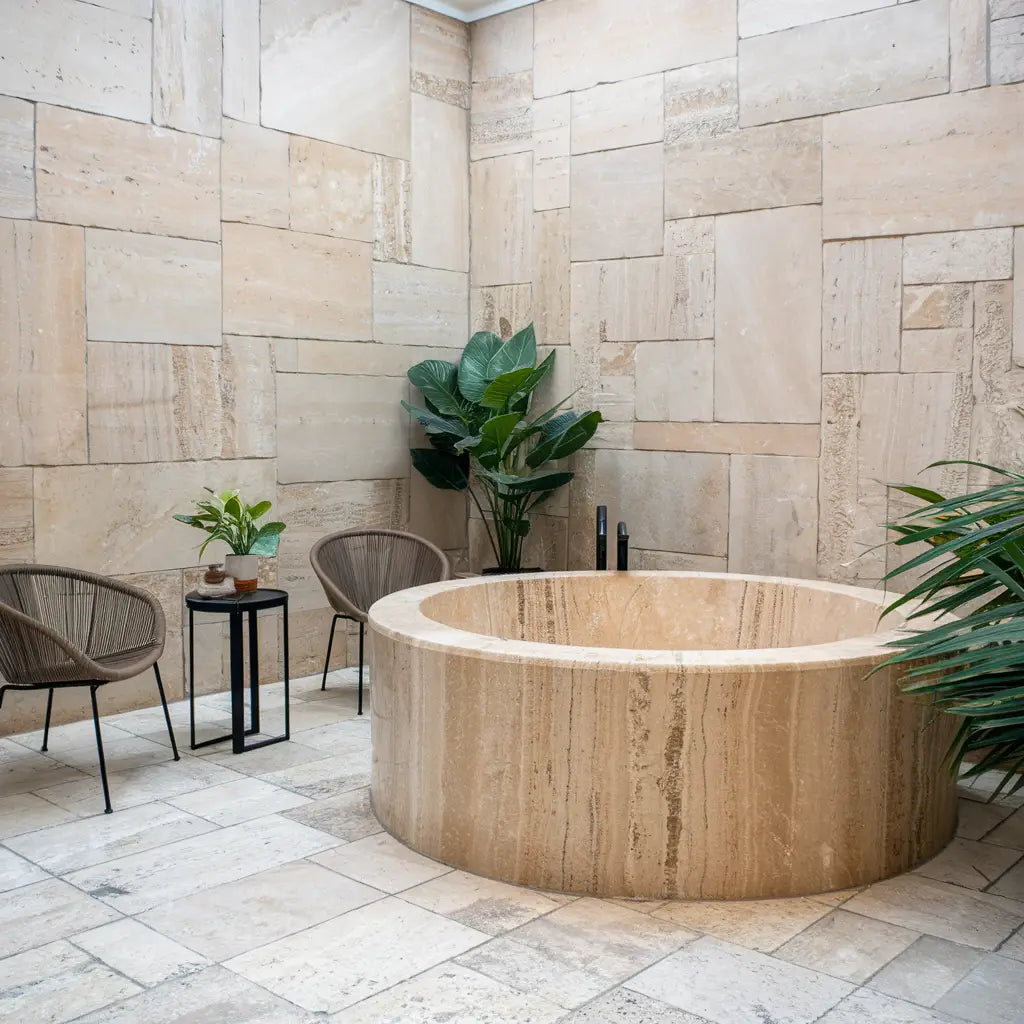 Travertine Tiles
Travertine Tiles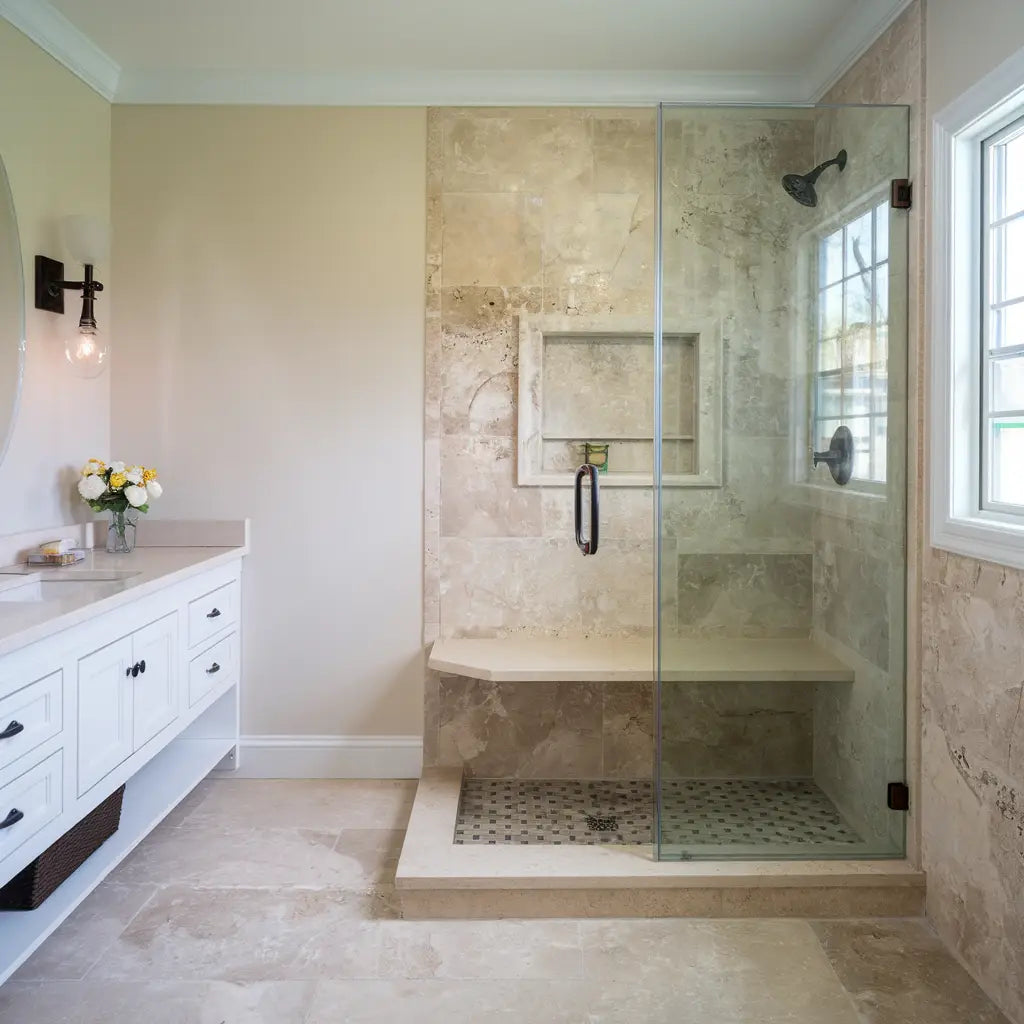 Travertine Mosaic
Travertine Mosaic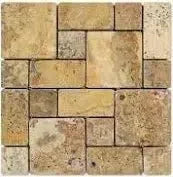 4 pcs Versailles Pattern / French Pattern Set
4 pcs Versailles Pattern / French Pattern Set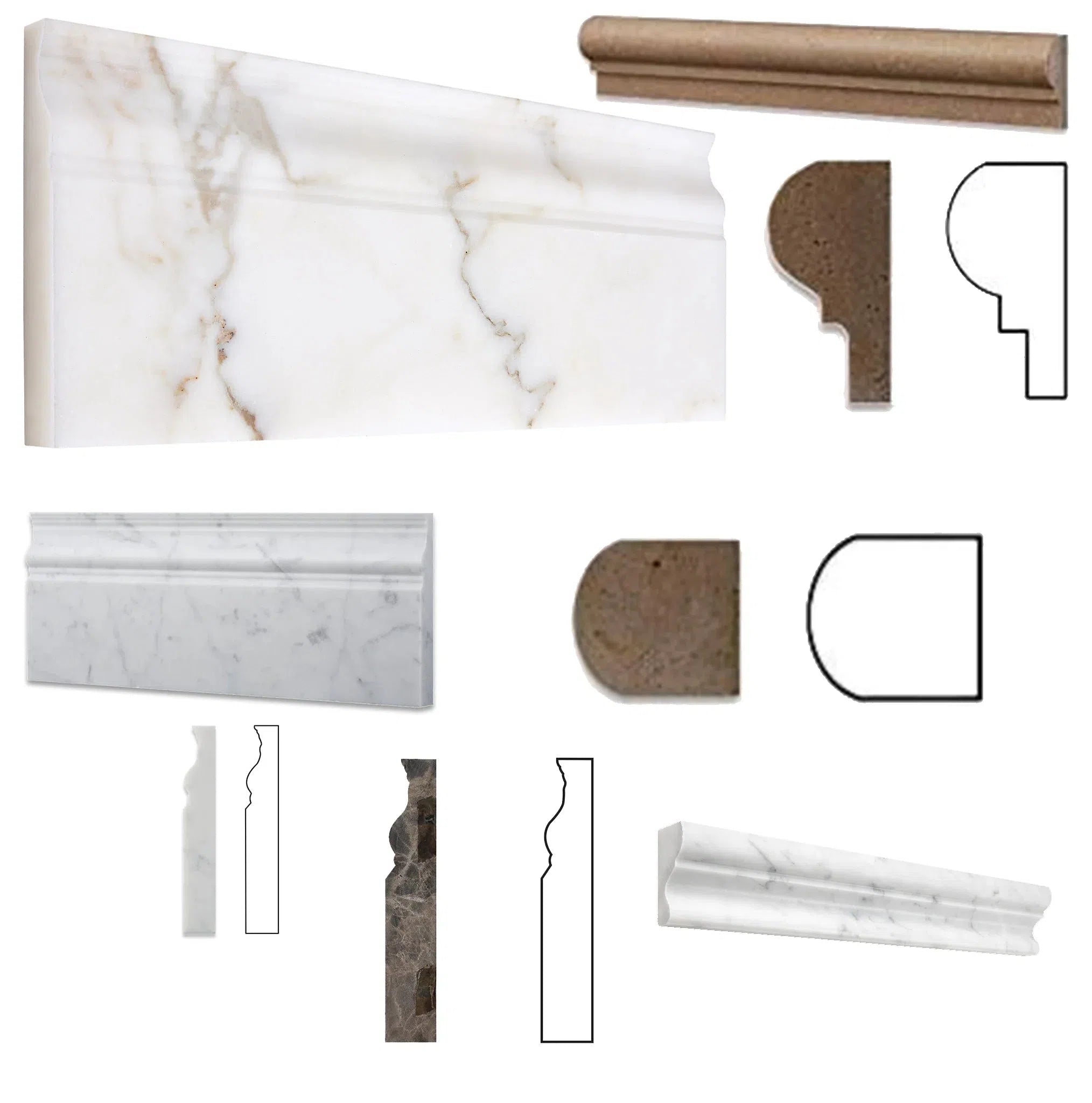 Molding/Trim
Molding/Trim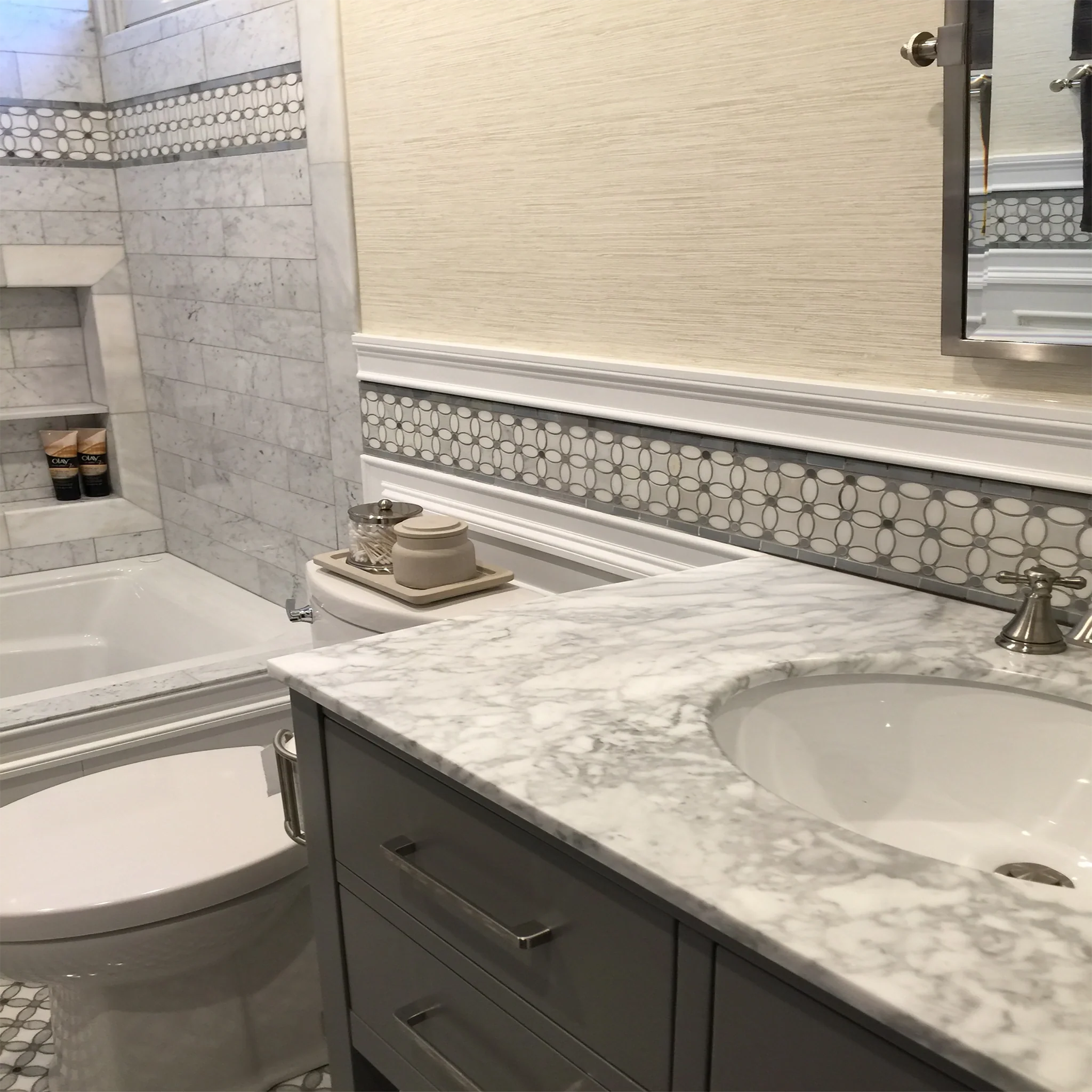 Border/Listello
Border/Listello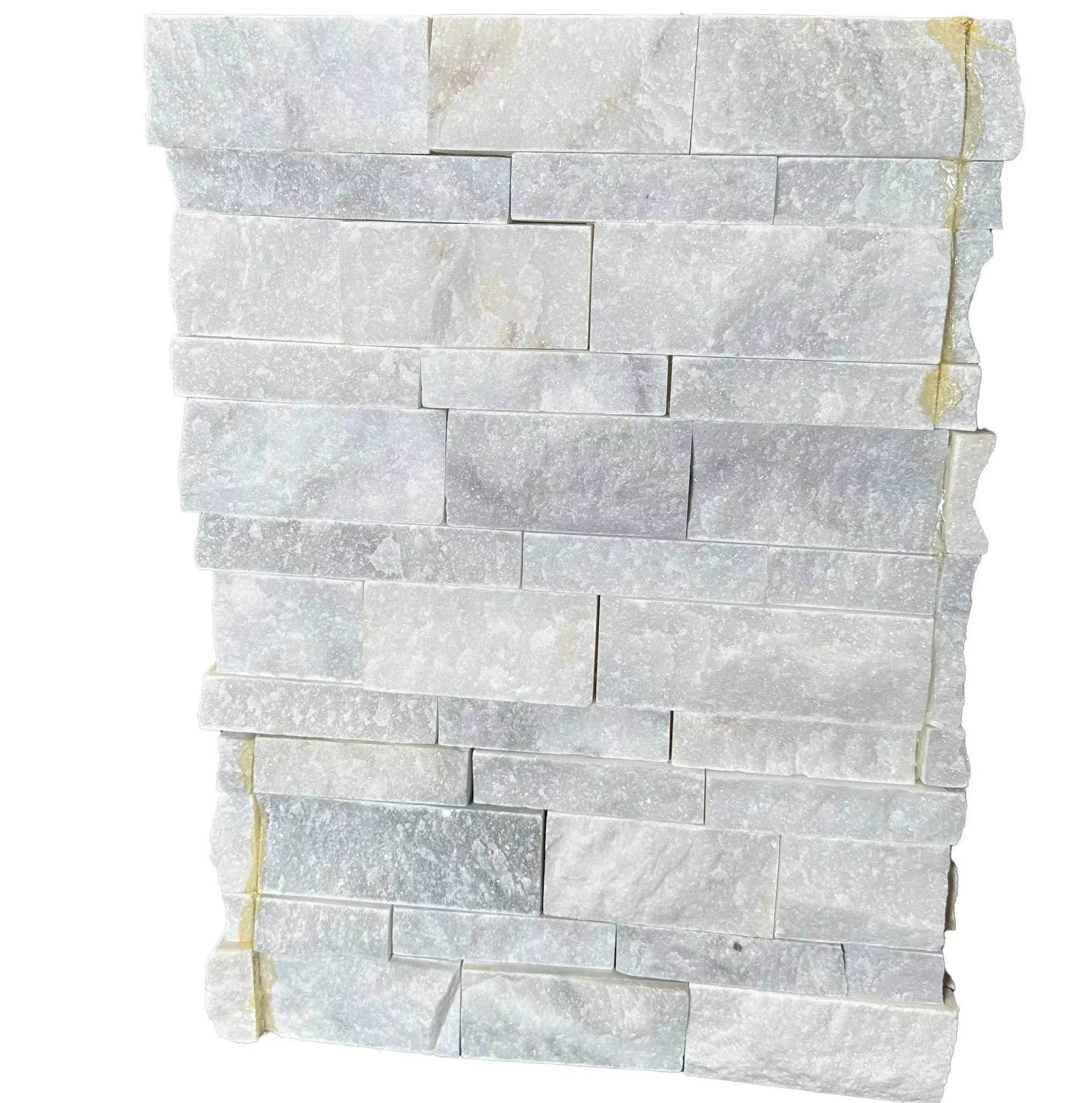 Ledger-Panel
Ledger-Panel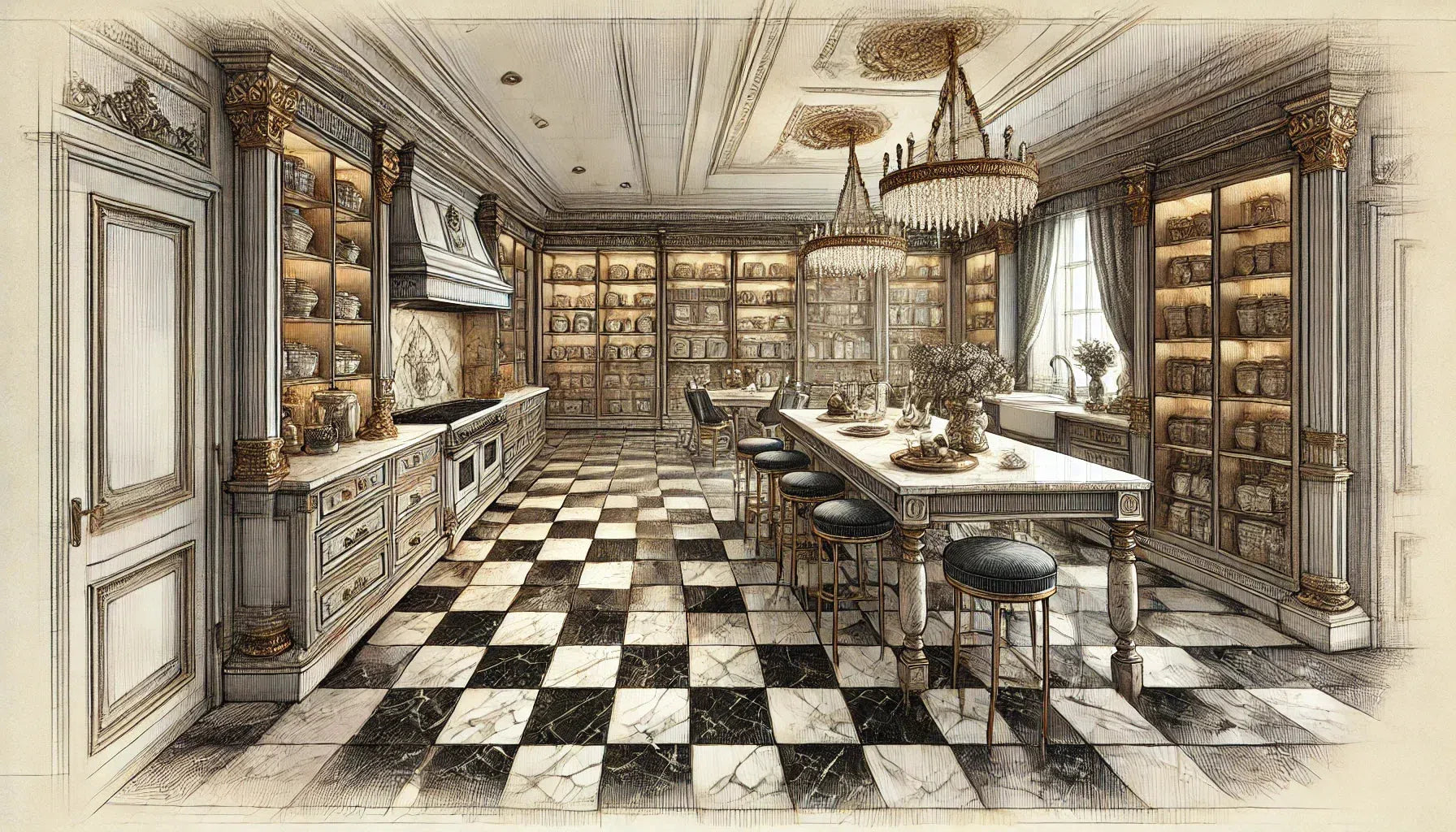 Checkerboard
Checkerboard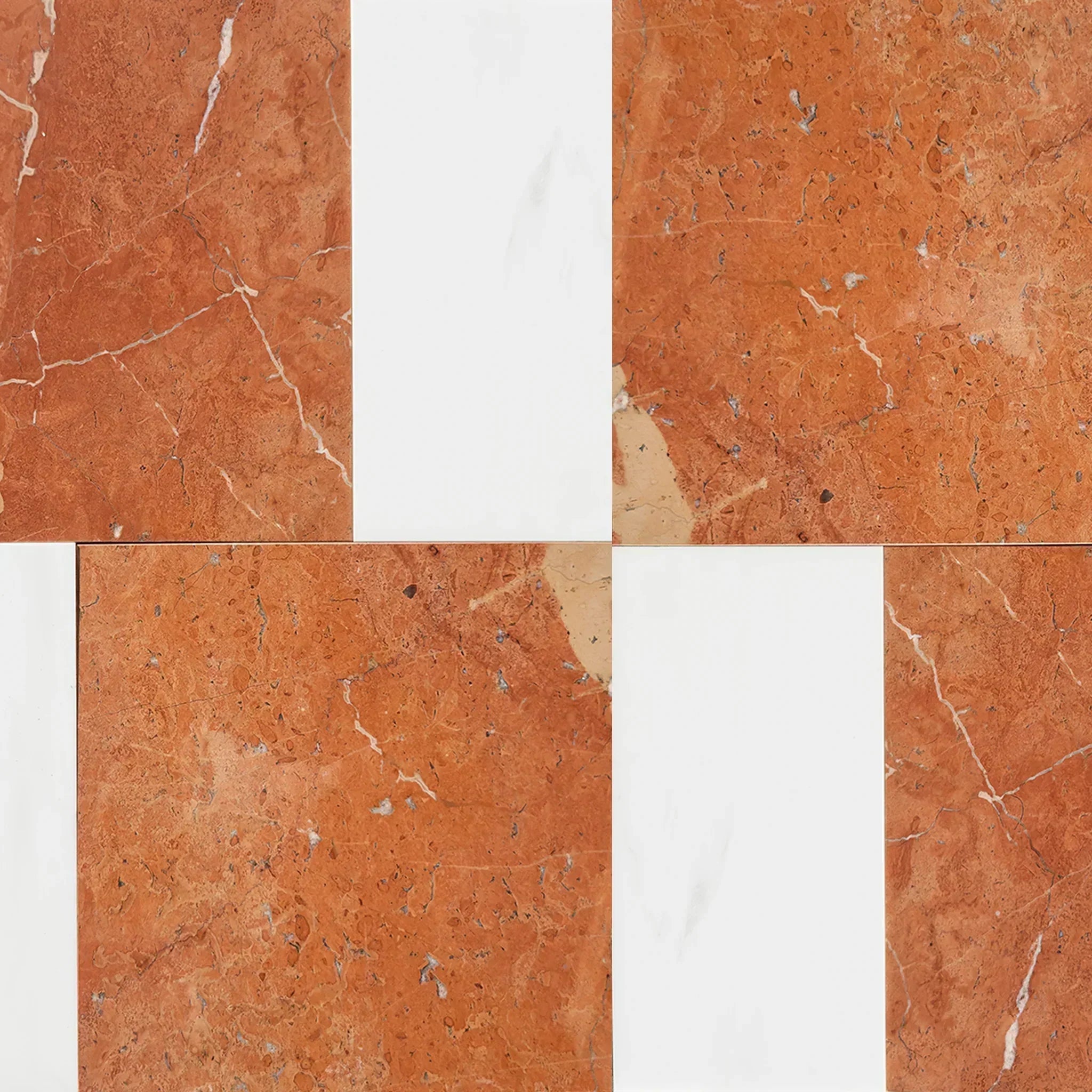 Patterned Tile Collection
Patterned Tile Collection 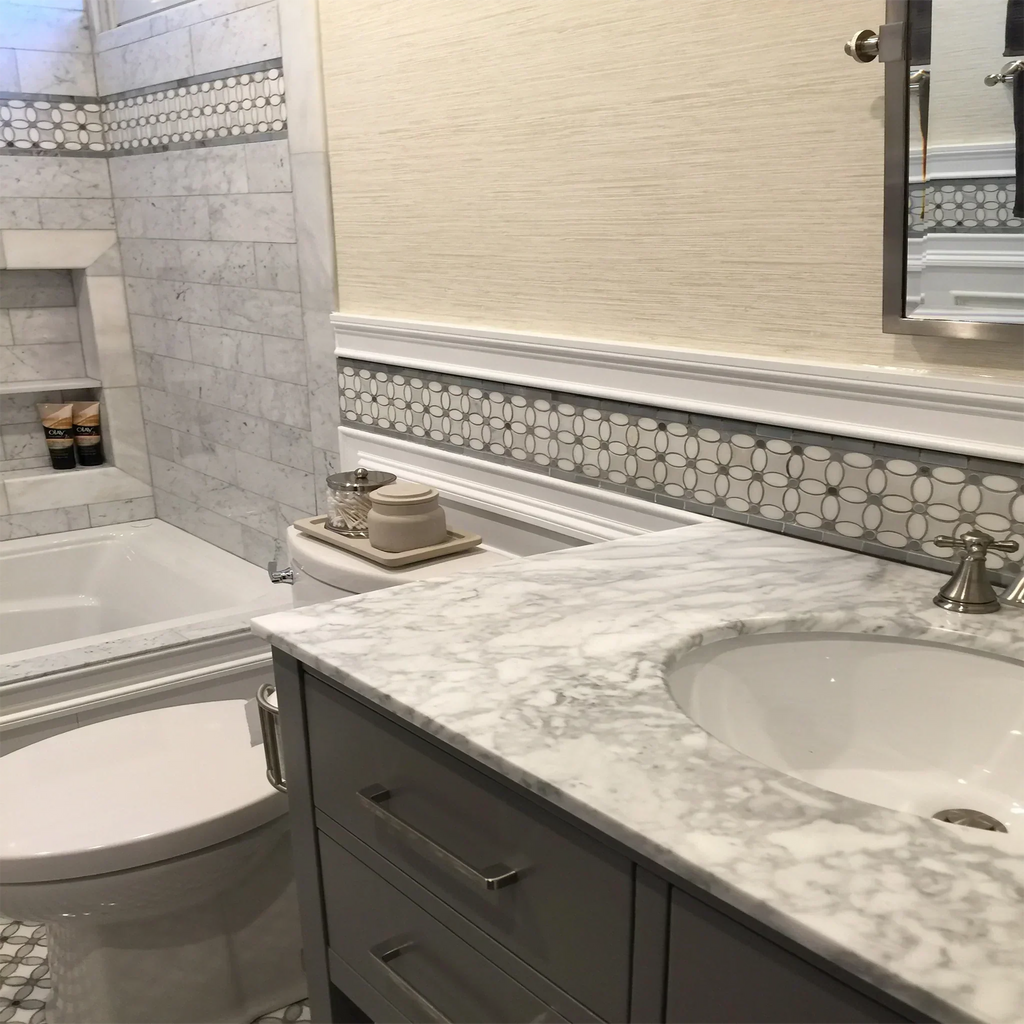 Shop By Finish
Shop By Finish
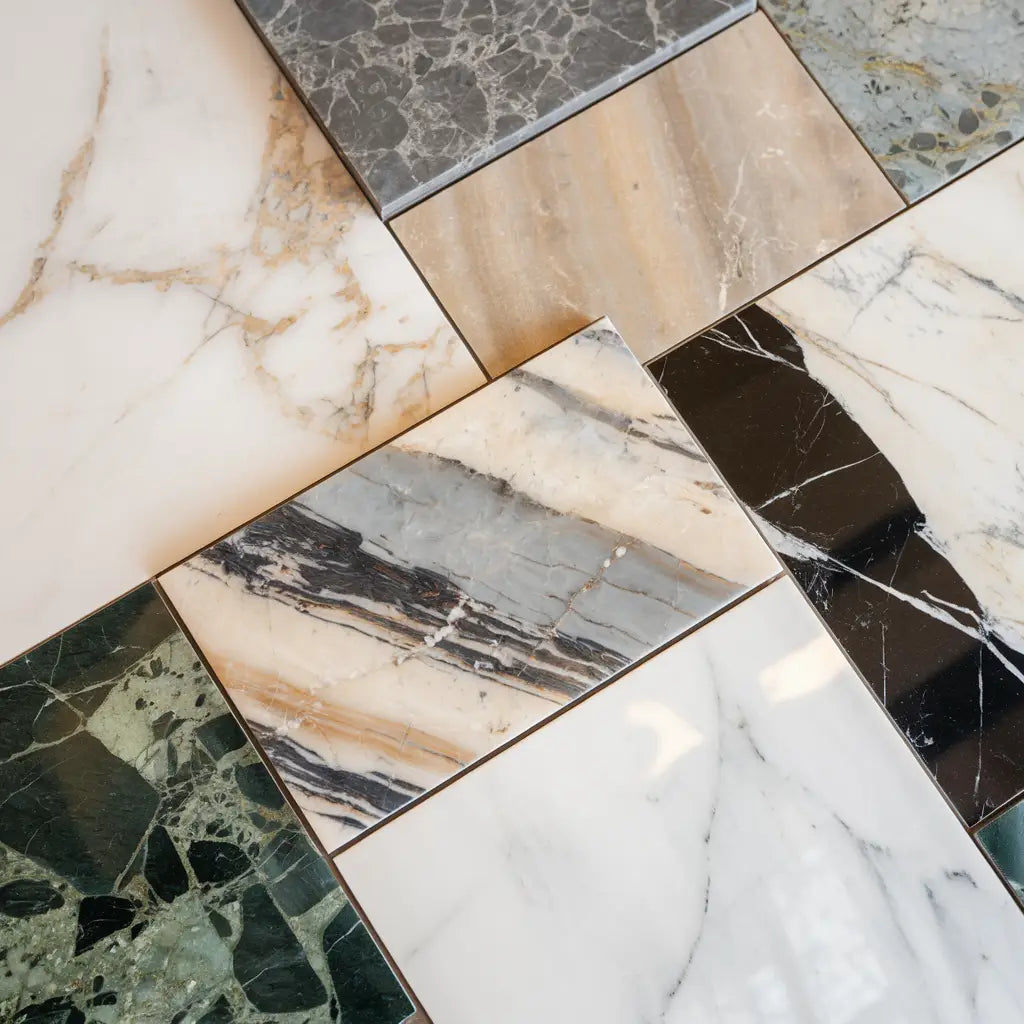 Polished
Polished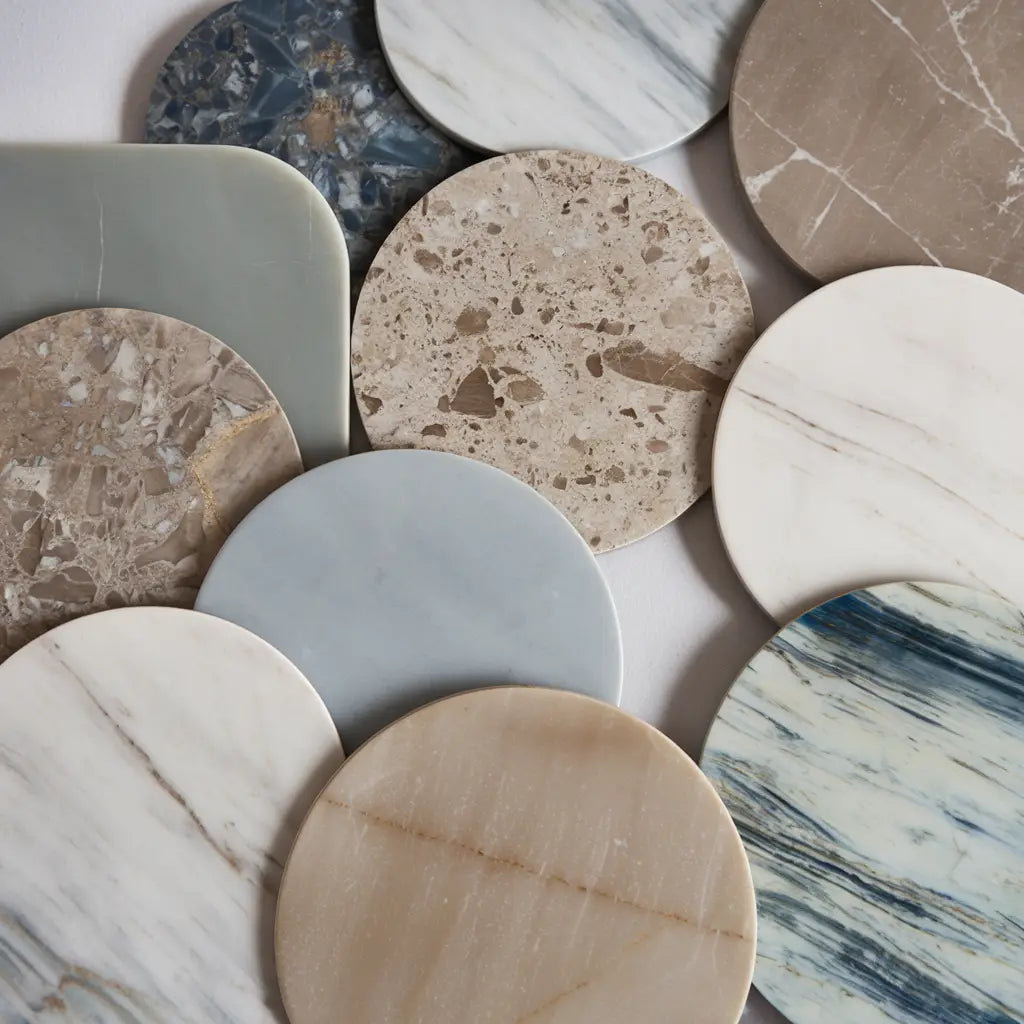 Honed
Honed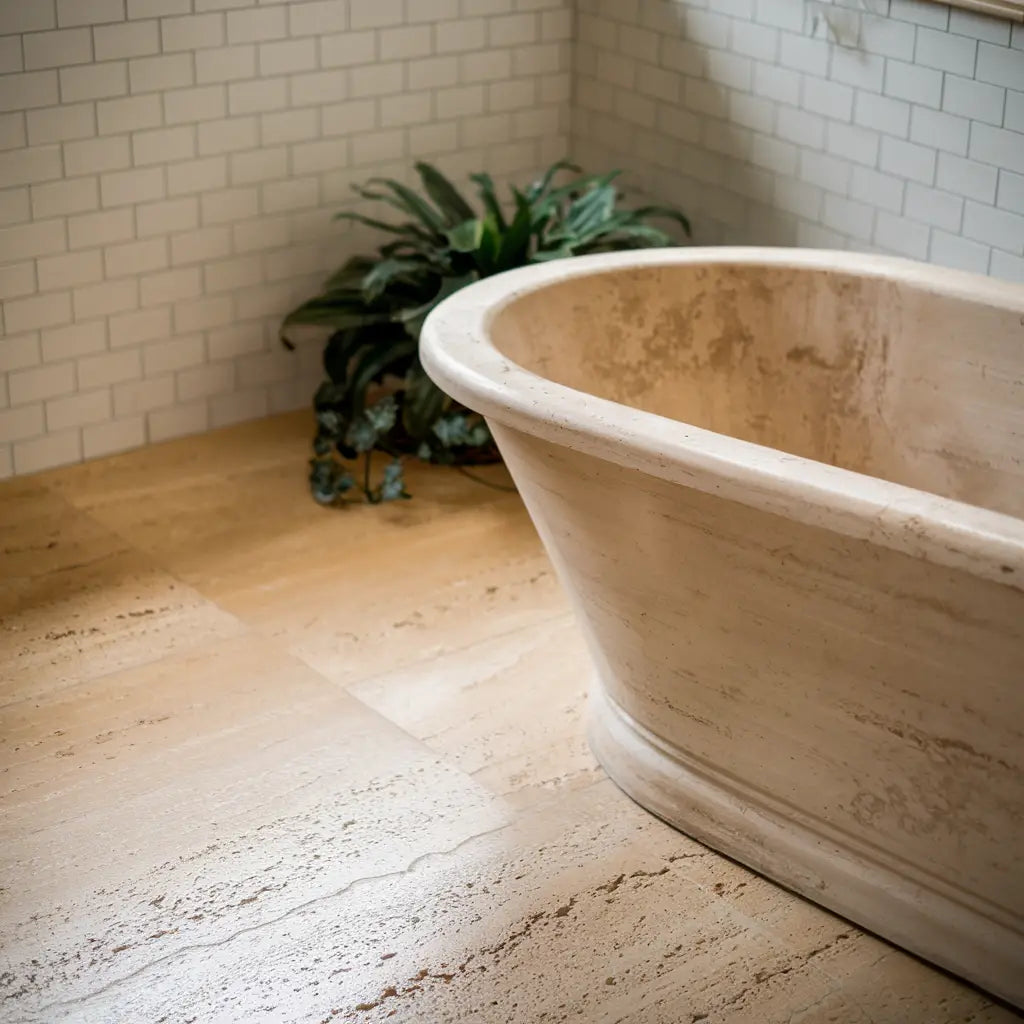 Brushed
Brushed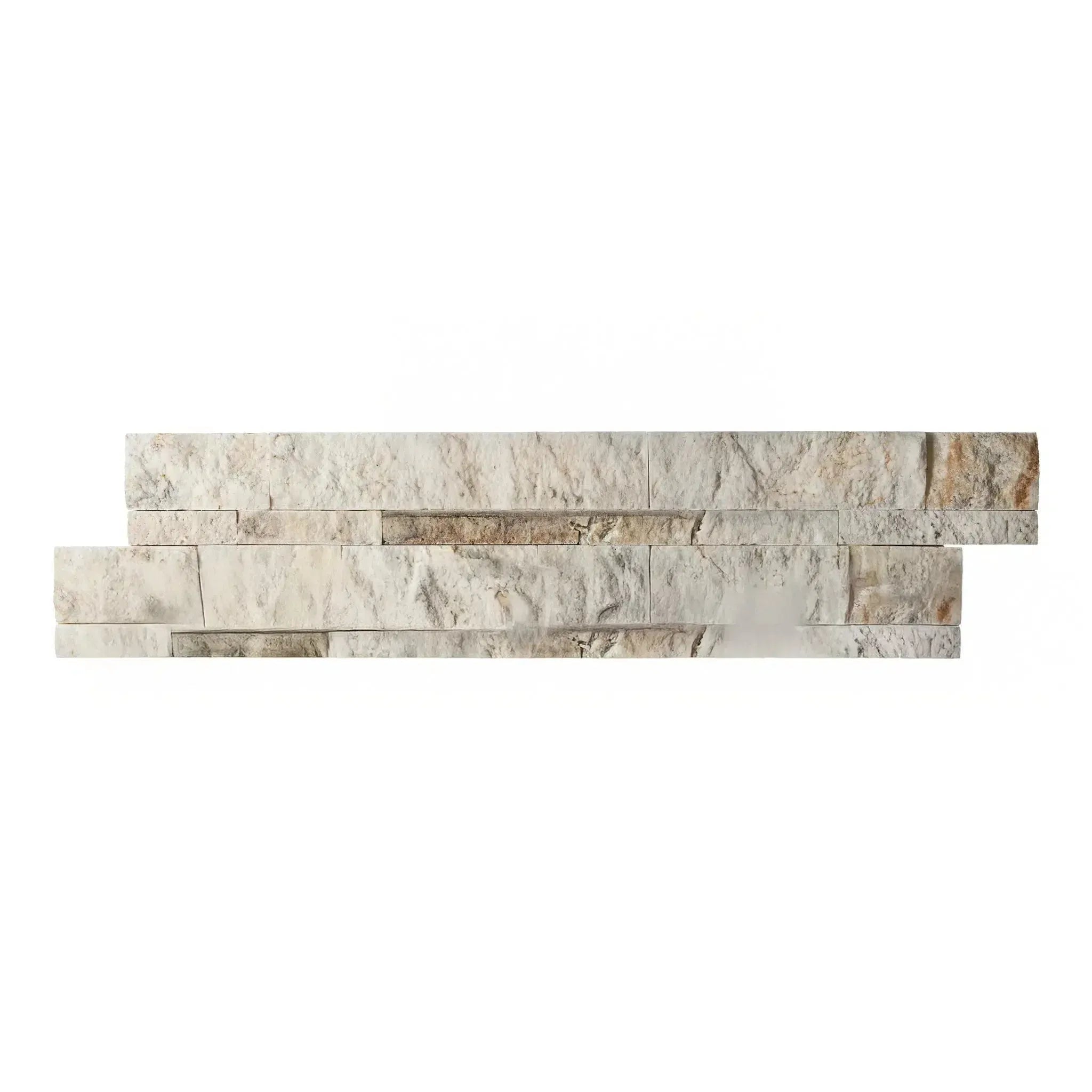 Split Face
Split Face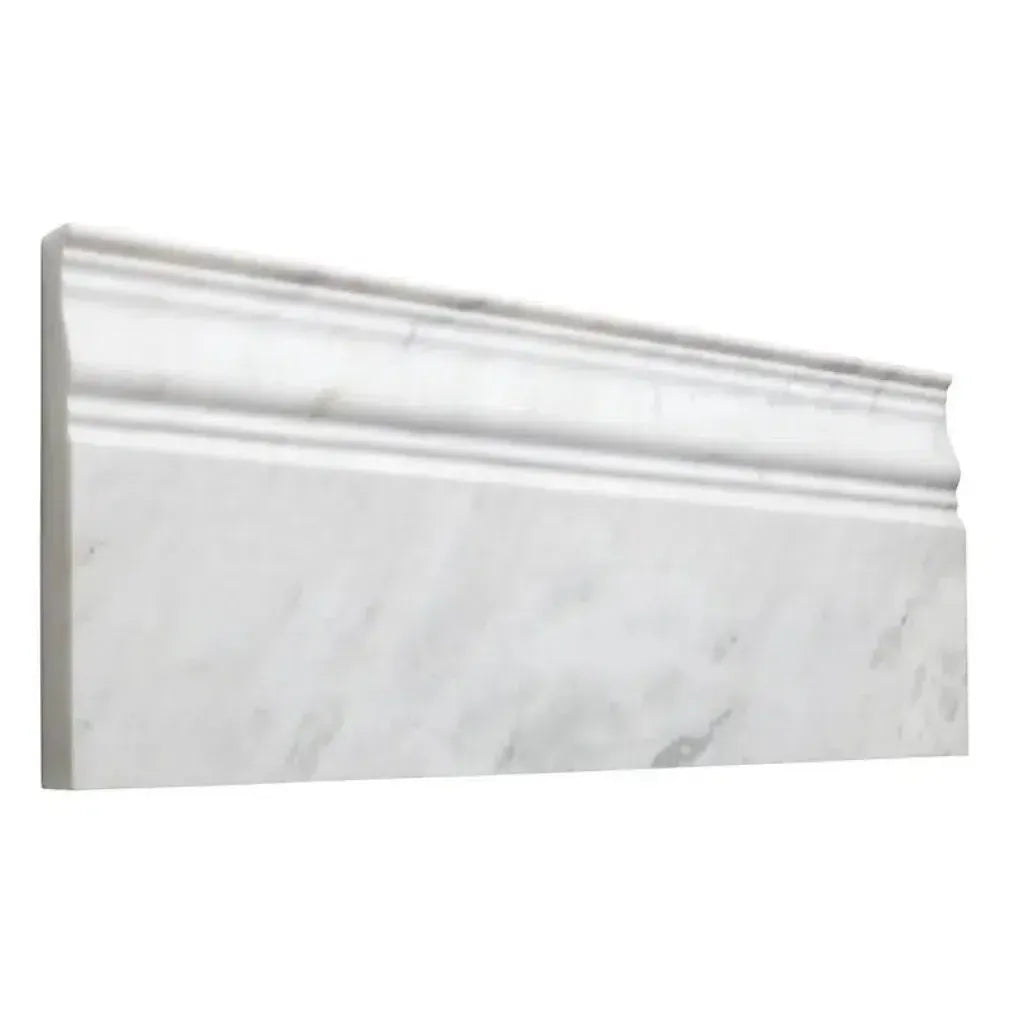 Textured
Textured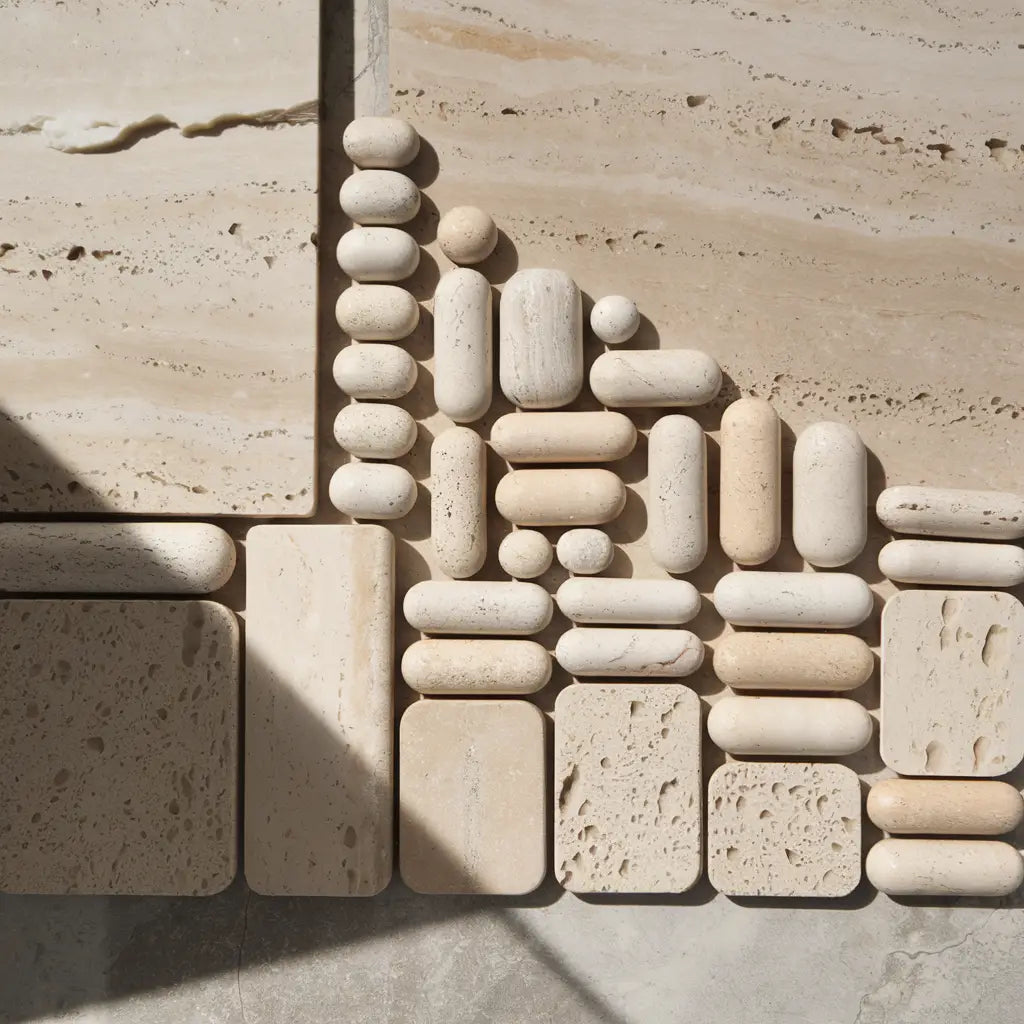 Tumbled
Tumbled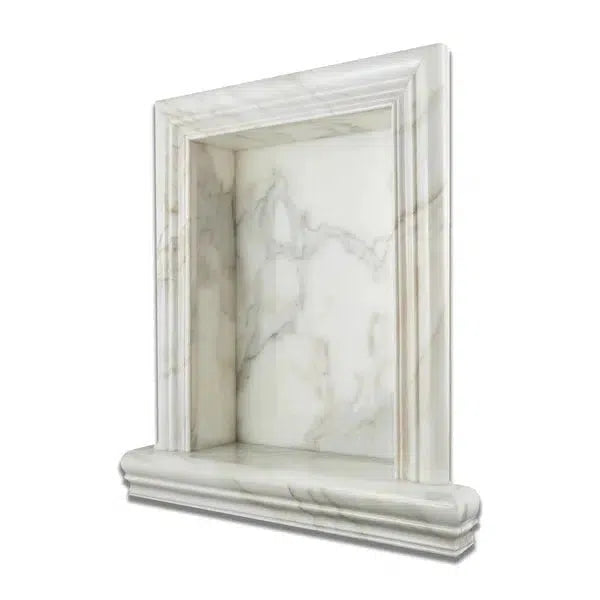 Accessories
Accessories
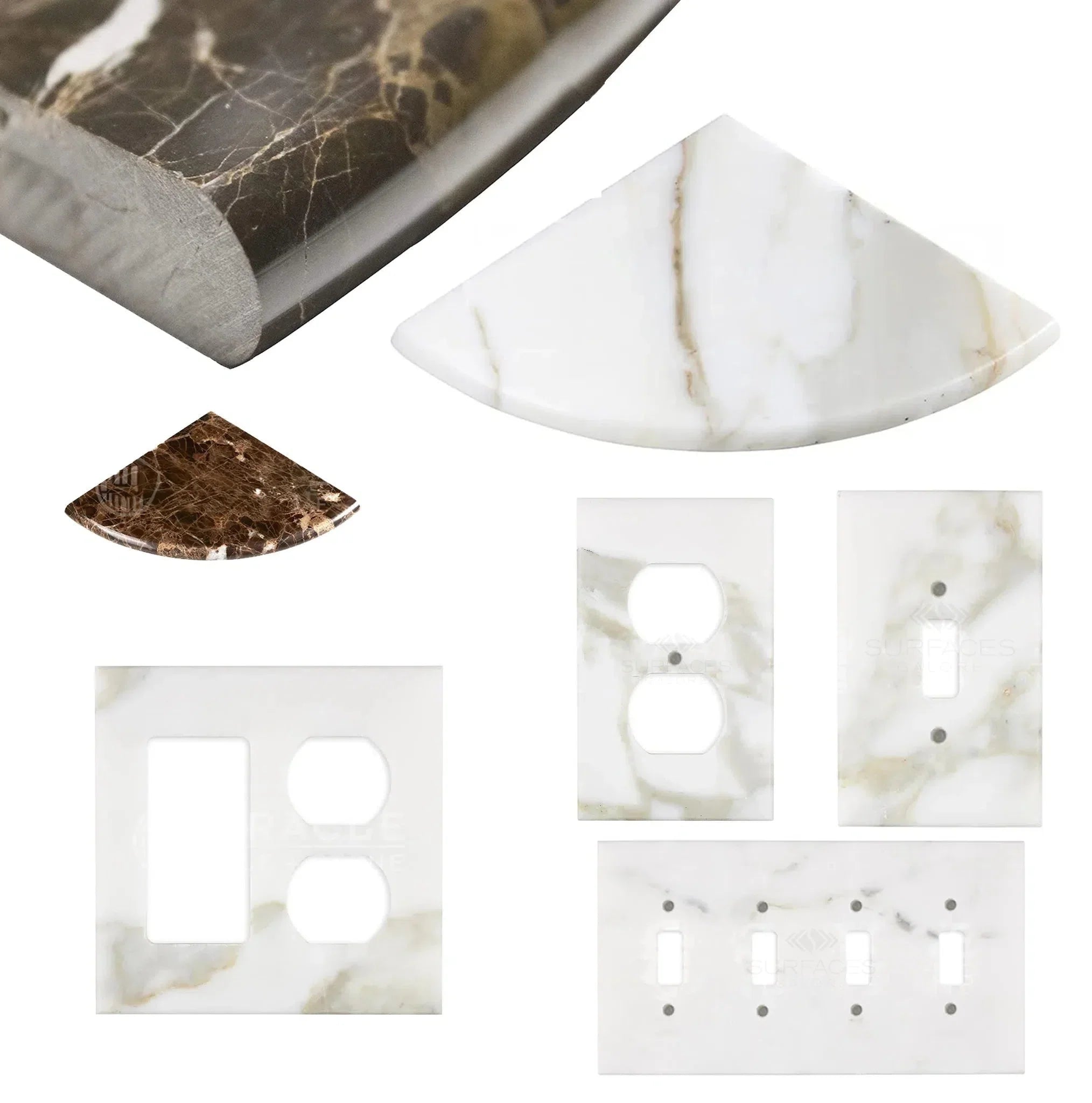 Wall Plate / Switch Plate
Wall Plate / Switch Plate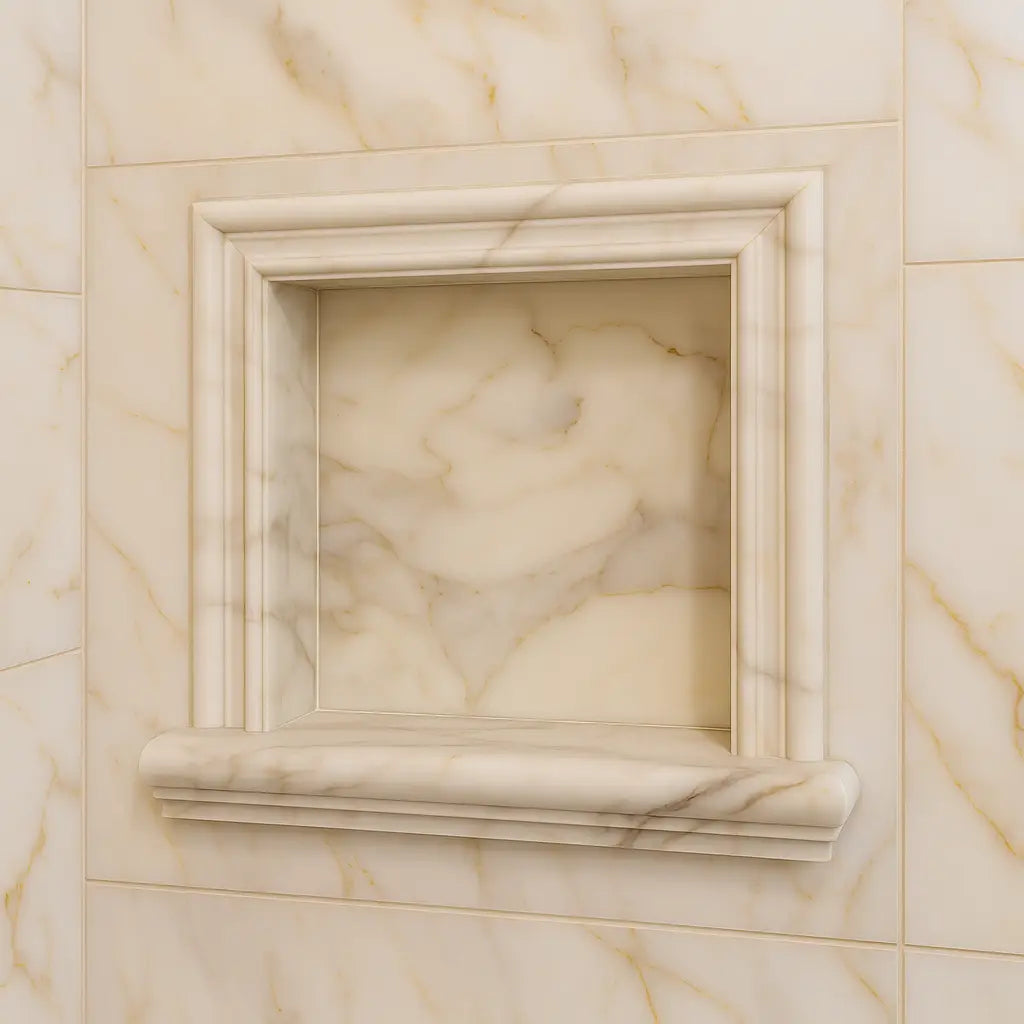 Shampoo Niche
Shampoo Niche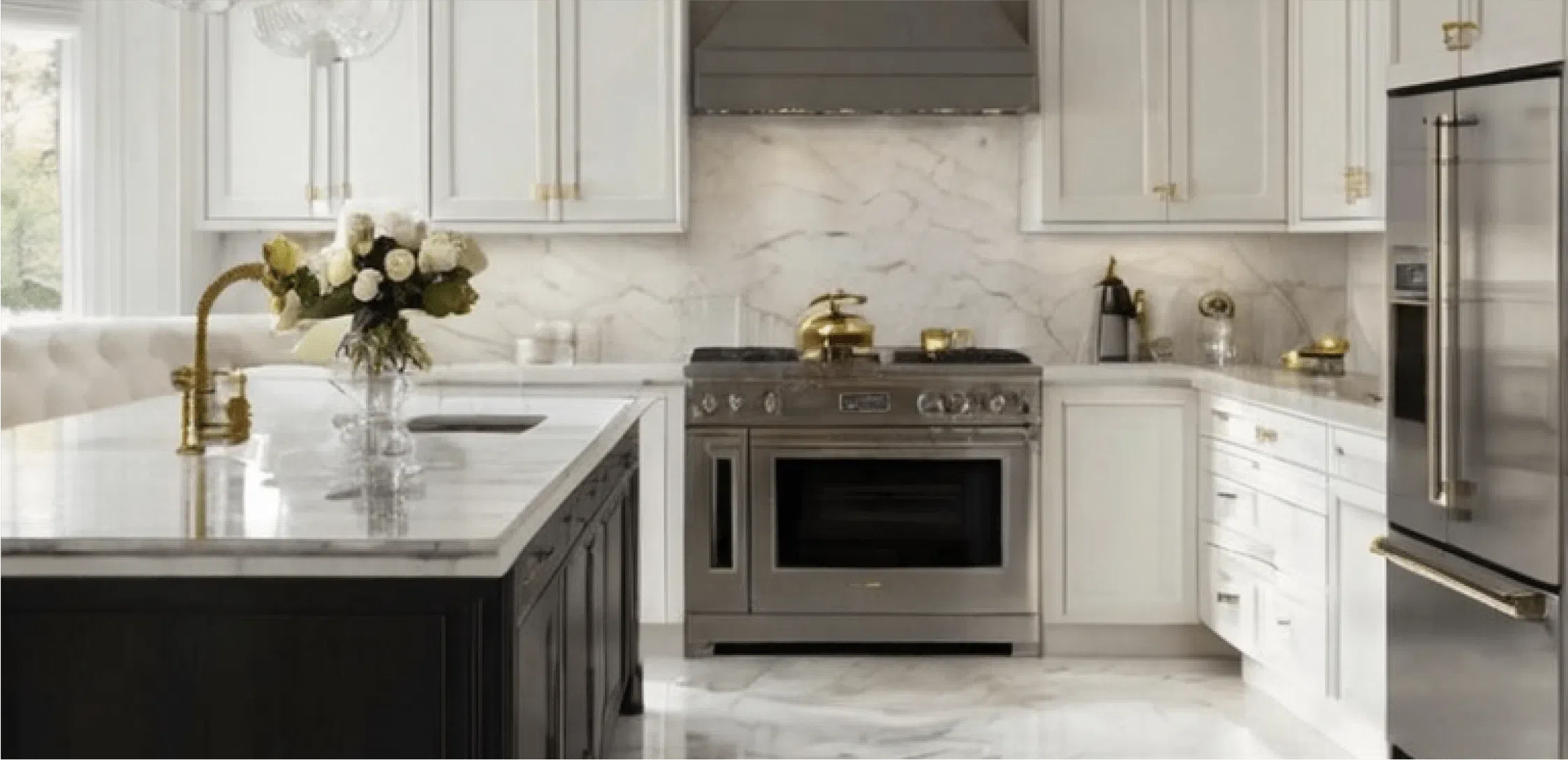 Corner Shelf
Corner Shelf Clearance
Clearance





Leave a comment